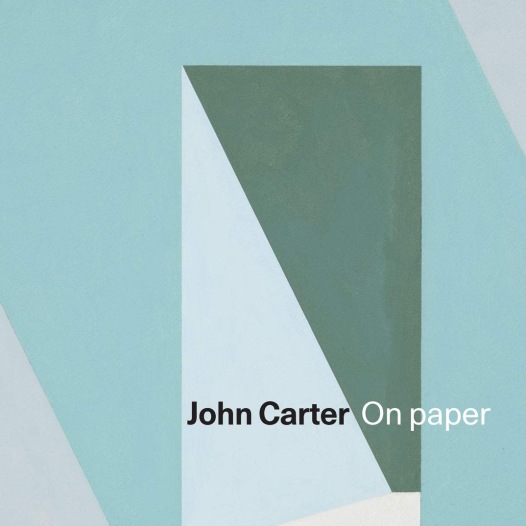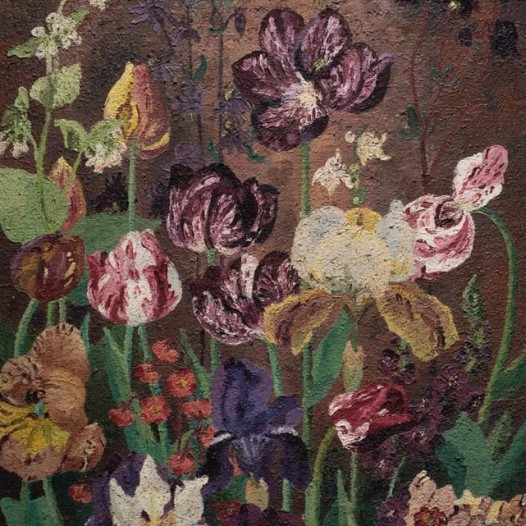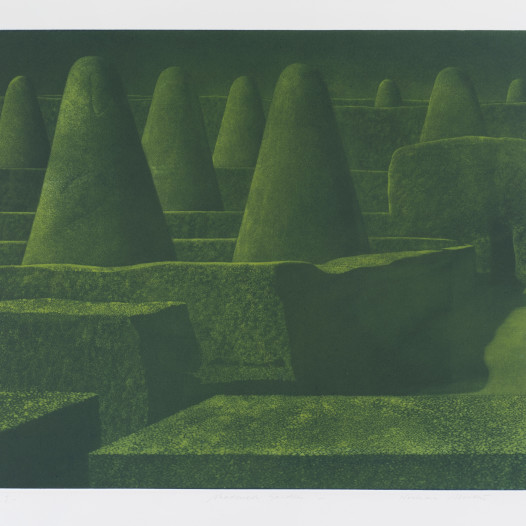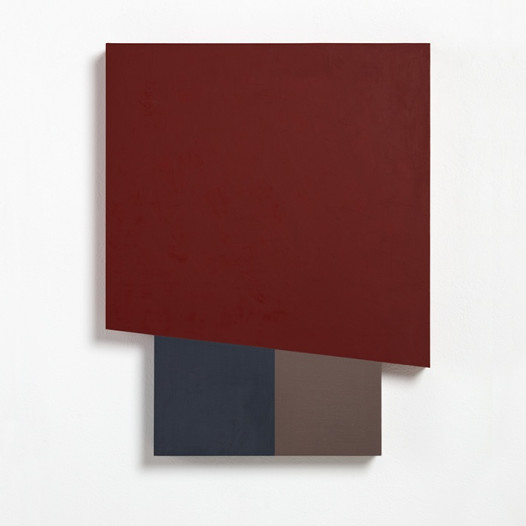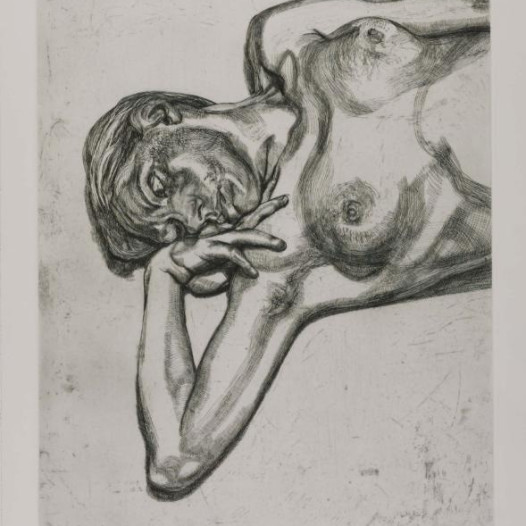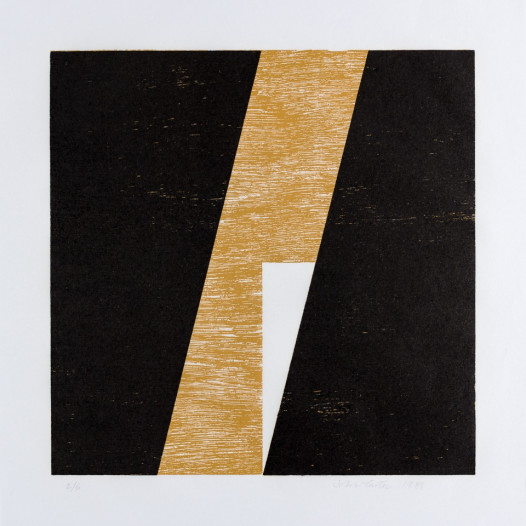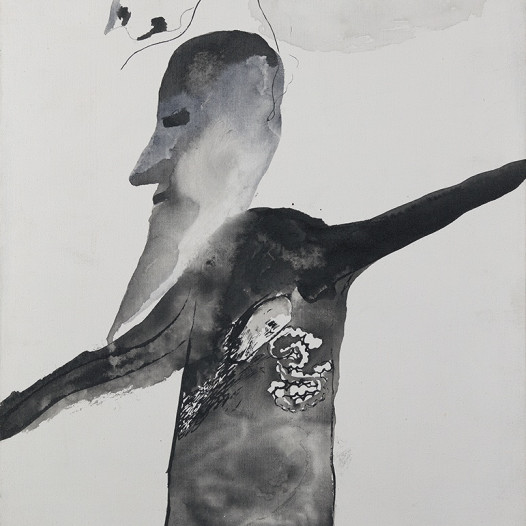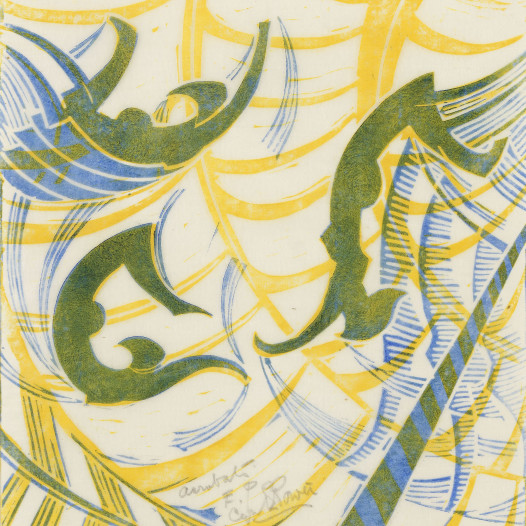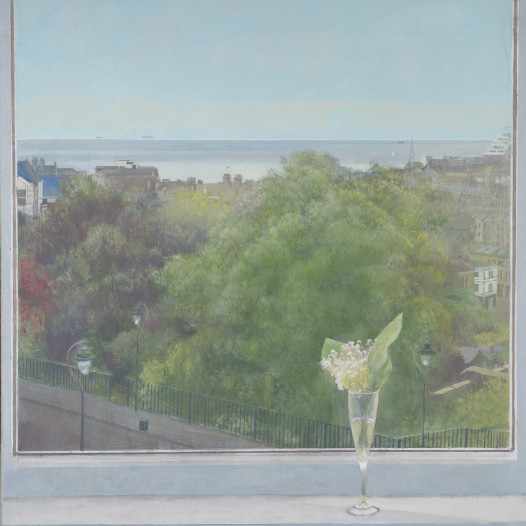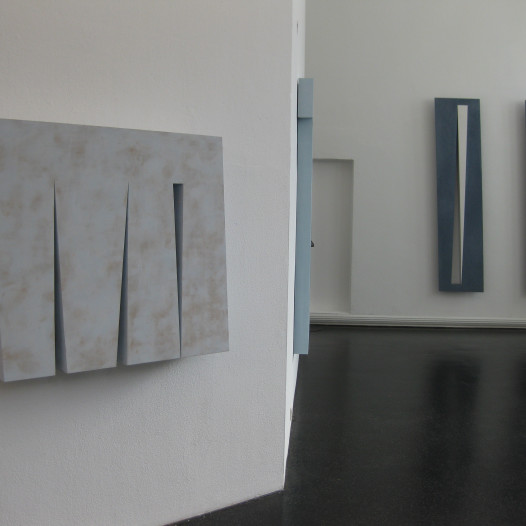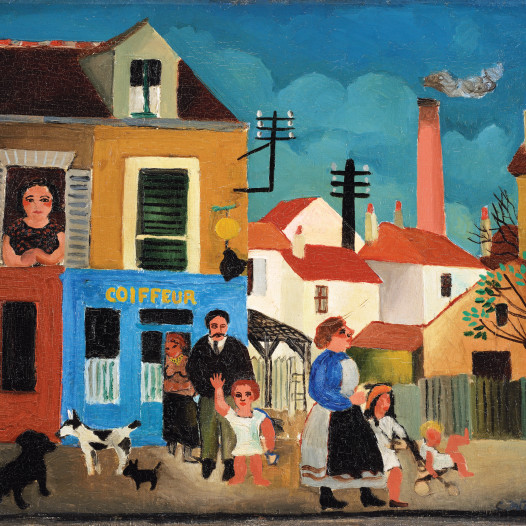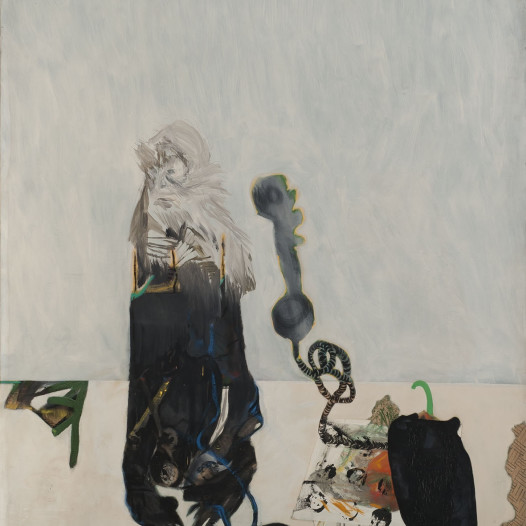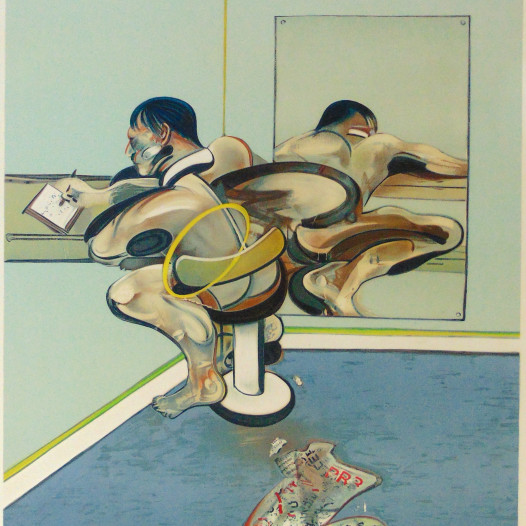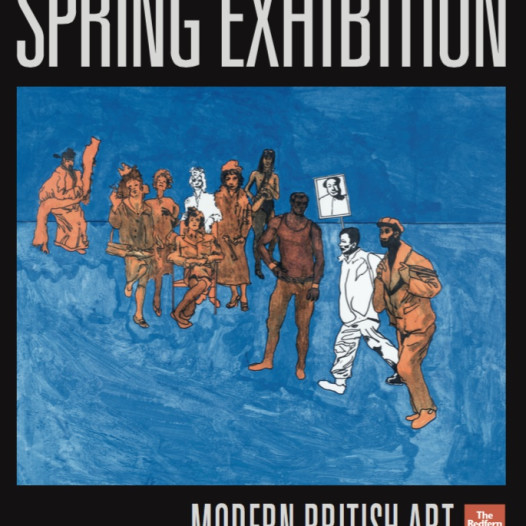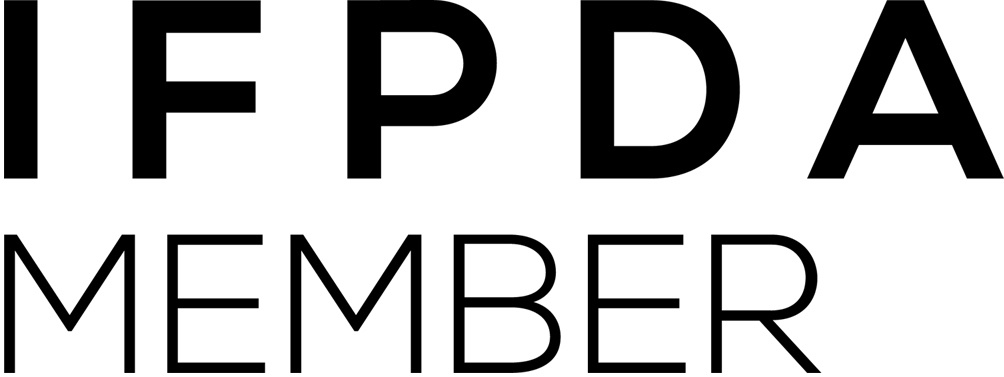John Carter RA
b. 1942John Carter was born in Middlesex, and studied at Twickenham School of Art, and then at Kingston School of Art from 1959-63, where he was taught by Terry Frost, among others. Upon graduating, he was awarded a Leverhulme Travelling Scholarship to Italy. At this time he made collages on paper, using the bold colours of Pop Art as well as showing an interest in shapes and geometry. Several examples can be found in the Arts Council Collection, including The Great Square I. Herein, the intersecting lines of primary colours appear to form the basis of one of his first contructed works, the three-dimensional painting on composite canvases and wood, entitled Emblem, of 1964. This was one of the first works in which Carter began to question the attributes of painting and sculpture. Carter has since become known for his so-called 'wall objects' - constructions of sculpted and painted plywood that form a novel dialogue between painting and sculpture. The flatness, colour and divided surface areas are typical of paintings, but a sculptural quality is suggested through the contours and incised lines that penetrate the painted surface. His work received critical acclaim, notably from Robert Hughes, when included in the third of Bryan Robertson's New Generation exhibitions, in 1966. Here, Joe Tilson recommended that Scatola be purchased by the Contemporary Art Society, while Alan Bowness selected another of his exhibits, Lever Painting, to enter the Arts Council Collection. Later that year, Carter was taken on by the Redfern, and several successful one-man exhibitions followed throughout the 1970s. By the end of the decade, he was part of Herbert Read's survey of British painting and sculpture, a touring exhibition of the USA, alongside Anthony Caro, John Hoyland and Bridget Riley, and was also selected by William Packer for the first British Art Show, which toured the UK.
By the mid-'70s, Carter began creating sculpture on a smaller scale, but which still played with the viewer's perceptions. These required the participation of the viewer, in that just as the viewer moves closer to the work, and views it from different angles, so their experience of the work changes. His series of three works entitled Resemblance, of 1973, was purchased by the Arts Council in 1976. Carter has explained how in the '80s he moved "away from making complicated or even romantic constructions, which demanded equally complex working methods, to more logical ways of working". As such, he took shapes as the starting-point for his work, and then over the course of playful investigation, explored variations of that shape. For example, a simple square would be repeated and subjected to rigorous rotations to create an artwork, but each work is always underpinned by a sense of harmony and proportion. For the art critic Mel Gooding, "these objects conform always to a systematic ordering of theoretic relations, the mathematical or geometrical givens that have generated them in the first place - in Carter's case, these are invariably simple, albeit ingenious".
In 1983, a retrospective exhibition of his work was held at the Warwick Arts Trust, London. In 1986, he participated in the international group exhibition Die Ecke at Galerie Hoffmann, Friedberg, Germany, where he met the European Concrete and Constructivist artists. He has since exhibited widely in Europe, especially Germany, and 1993 saw the realisation of a monumental sculpture at the Technische Universität, Darmstadt. Alongside his career as an artist, teaching has been an important aspect of his life, and Carter was a lecturer at Chelsea College of Art for nearly twenty years, before retiring in 1999. Elected Royal Academician in 2007, Carter was the subject of a retrospective at Jerwood Gallery, Hastings, in 2019, while an exhibition of his printmaking was held at the Royal Academy later in the year.
John Carter RA is represented by the Redfern Gallery.
Works
-
 John Carter RAFold-Back II, 2024Acrylic on plywood38 x 38 x 4 cm%3Cdiv%20class%3D%22artist%22%3E%3Cspan%20class%3D%22artist%22%3E%3Cstrong%3EJohn%20Carter%20RA%3C/strong%3E%3C/span%3E%3C/div%3E%0D%3Cdiv%20class%3D%22title%22%3E%3Cem%3EFold-Back%20II%3C/em%3E%2C%202024%3C/div%3E%0D%3Cdiv%20class%3D%22medium%22%3EAcrylic%20on%20plywood%3C/div%3E%0D%3Cdiv%20class%3D%22dimensions%22%3E38%20x%2038%20x%204%20cm%3C/div%3E
John Carter RAFold-Back II, 2024Acrylic on plywood38 x 38 x 4 cm%3Cdiv%20class%3D%22artist%22%3E%3Cspan%20class%3D%22artist%22%3E%3Cstrong%3EJohn%20Carter%20RA%3C/strong%3E%3C/span%3E%3C/div%3E%0D%3Cdiv%20class%3D%22title%22%3E%3Cem%3EFold-Back%20II%3C/em%3E%2C%202024%3C/div%3E%0D%3Cdiv%20class%3D%22medium%22%3EAcrylic%20on%20plywood%3C/div%3E%0D%3Cdiv%20class%3D%22dimensions%22%3E38%20x%2038%20x%204%20cm%3C/div%3E -
 John Carter RAFold-Back III, 2024Acrylic on plywood38 x 38 x 4 cm%3Cdiv%20class%3D%22artist%22%3E%3Cspan%20class%3D%22artist%22%3E%3Cstrong%3EJohn%20Carter%20RA%20%3C/strong%3E%3C/span%3E%3C/div%3E%0D%3Cdiv%20class%3D%22title%22%3E%3Cem%3EFold-Back%20III%3C/em%3E%2C%202024%3C/div%3E%0D%3Cdiv%20class%3D%22medium%22%3EAcrylic%20on%20plywood%3C/div%3E%0D%3Cdiv%20class%3D%22dimensions%22%3E38%20x%2038%20x%204%20cm%3C/div%3E
John Carter RAFold-Back III, 2024Acrylic on plywood38 x 38 x 4 cm%3Cdiv%20class%3D%22artist%22%3E%3Cspan%20class%3D%22artist%22%3E%3Cstrong%3EJohn%20Carter%20RA%20%3C/strong%3E%3C/span%3E%3C/div%3E%0D%3Cdiv%20class%3D%22title%22%3E%3Cem%3EFold-Back%20III%3C/em%3E%2C%202024%3C/div%3E%0D%3Cdiv%20class%3D%22medium%22%3EAcrylic%20on%20plywood%3C/div%3E%0D%3Cdiv%20class%3D%22dimensions%22%3E38%20x%2038%20x%204%20cm%3C/div%3E -
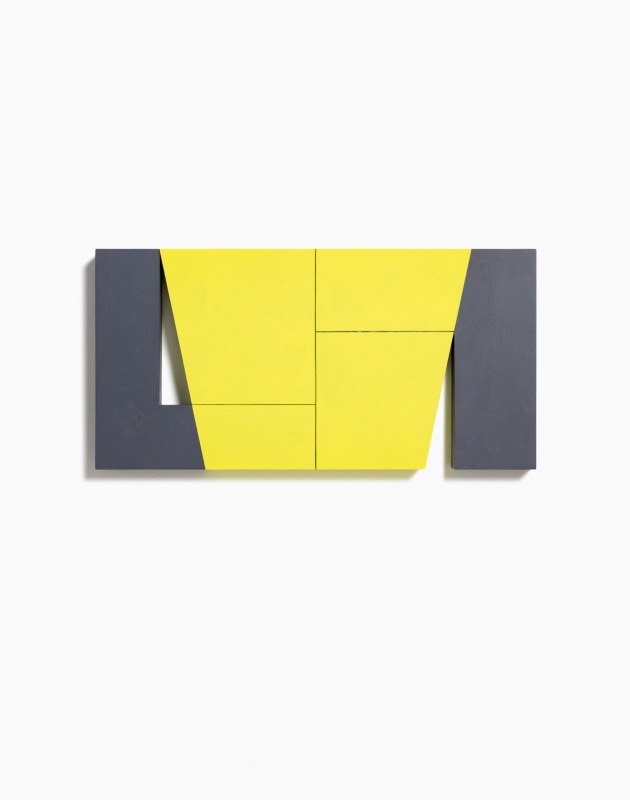 John Carter RAOverlay: Two Squares, 2024Acrylic on plywood25 x 50 x 4 cm%3Cdiv%20class%3D%22artist%22%3E%3Cspan%20class%3D%22artist%22%3E%3Cstrong%3EJohn%20Carter%20RA%3C/strong%3E%3C/span%3E%3C/div%3E%0D%3Cdiv%20class%3D%22title%22%3E%3Cem%3EOverlay%3A%20Two%20Squares%3C/em%3E%2C%202024%3C/div%3E%0D%3Cdiv%20class%3D%22medium%22%3EAcrylic%20on%20plywood%3C/div%3E%0D%3Cdiv%20class%3D%22dimensions%22%3E25%20x%2050%20x%204%20cm%3C/div%3E
John Carter RAOverlay: Two Squares, 2024Acrylic on plywood25 x 50 x 4 cm%3Cdiv%20class%3D%22artist%22%3E%3Cspan%20class%3D%22artist%22%3E%3Cstrong%3EJohn%20Carter%20RA%3C/strong%3E%3C/span%3E%3C/div%3E%0D%3Cdiv%20class%3D%22title%22%3E%3Cem%3EOverlay%3A%20Two%20Squares%3C/em%3E%2C%202024%3C/div%3E%0D%3Cdiv%20class%3D%22medium%22%3EAcrylic%20on%20plywood%3C/div%3E%0D%3Cdiv%20class%3D%22dimensions%22%3E25%20x%2050%20x%204%20cm%3C/div%3E -
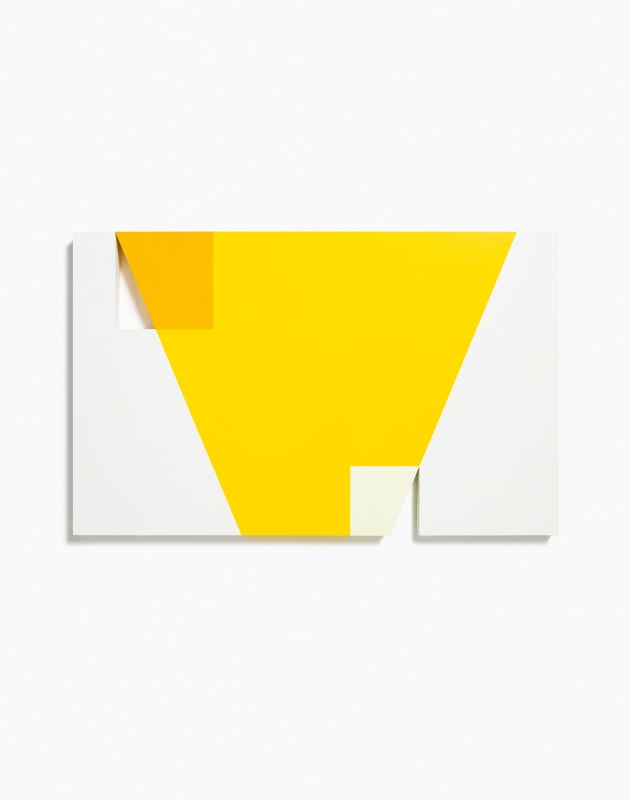 John Carter RAOverlay: Yellow Field, 2024Acrylic on plywood50 x 80 x 4 cm%3Cdiv%20class%3D%22artist%22%3E%3Cspan%20class%3D%22artist%22%3E%3Cstrong%3EJohn%20Carter%20RA%3C/strong%3E%3C/span%3E%3C/div%3E%0D%3Cdiv%20class%3D%22title%22%3E%3Cem%3EOverlay%3A%20Yellow%20Field%3C/em%3E%2C%202024%3C/div%3E%0D%3Cdiv%20class%3D%22medium%22%3EAcrylic%20on%20plywood%20%3C/div%3E%0D%3Cdiv%20class%3D%22dimensions%22%3E50%20x%2080%20x%204%20cm%3C/div%3E
John Carter RAOverlay: Yellow Field, 2024Acrylic on plywood50 x 80 x 4 cm%3Cdiv%20class%3D%22artist%22%3E%3Cspan%20class%3D%22artist%22%3E%3Cstrong%3EJohn%20Carter%20RA%3C/strong%3E%3C/span%3E%3C/div%3E%0D%3Cdiv%20class%3D%22title%22%3E%3Cem%3EOverlay%3A%20Yellow%20Field%3C/em%3E%2C%202024%3C/div%3E%0D%3Cdiv%20class%3D%22medium%22%3EAcrylic%20on%20plywood%20%3C/div%3E%0D%3Cdiv%20class%3D%22dimensions%22%3E50%20x%2080%20x%204%20cm%3C/div%3E -
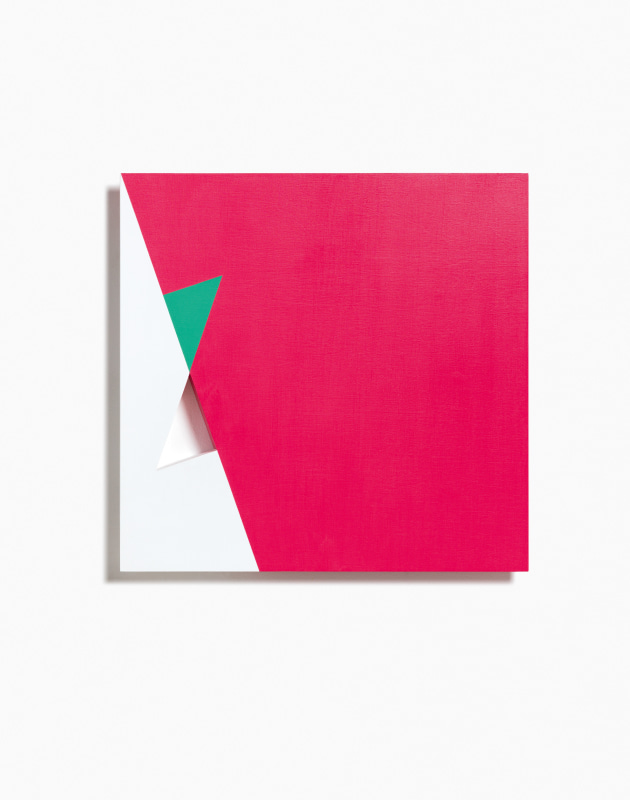 John Carter RARed Edge II , 2024Acrylic on plywood44.6 x 44.6 x 4 cm%3Cdiv%20class%3D%22artist%22%3E%3Cspan%20class%3D%22artist%22%3E%3Cstrong%3EJohn%20Carter%20RA%3C/strong%3E%3C/span%3E%3C/div%3E%0D%3Cdiv%20class%3D%22title%22%3E%3Cem%3ERed%20Edge%20II%20%3C/em%3E%2C%202024%3C/div%3E%0D%3Cdiv%20class%3D%22medium%22%3EAcrylic%20on%20plywood%3C/div%3E%0D%3Cdiv%20class%3D%22dimensions%22%3E44.6%20x%2044.6%20x%204%20cm%3C/div%3E
John Carter RARed Edge II , 2024Acrylic on plywood44.6 x 44.6 x 4 cm%3Cdiv%20class%3D%22artist%22%3E%3Cspan%20class%3D%22artist%22%3E%3Cstrong%3EJohn%20Carter%20RA%3C/strong%3E%3C/span%3E%3C/div%3E%0D%3Cdiv%20class%3D%22title%22%3E%3Cem%3ERed%20Edge%20II%20%3C/em%3E%2C%202024%3C/div%3E%0D%3Cdiv%20class%3D%22medium%22%3EAcrylic%20on%20plywood%3C/div%3E%0D%3Cdiv%20class%3D%22dimensions%22%3E44.6%20x%2044.6%20x%204%20cm%3C/div%3E -
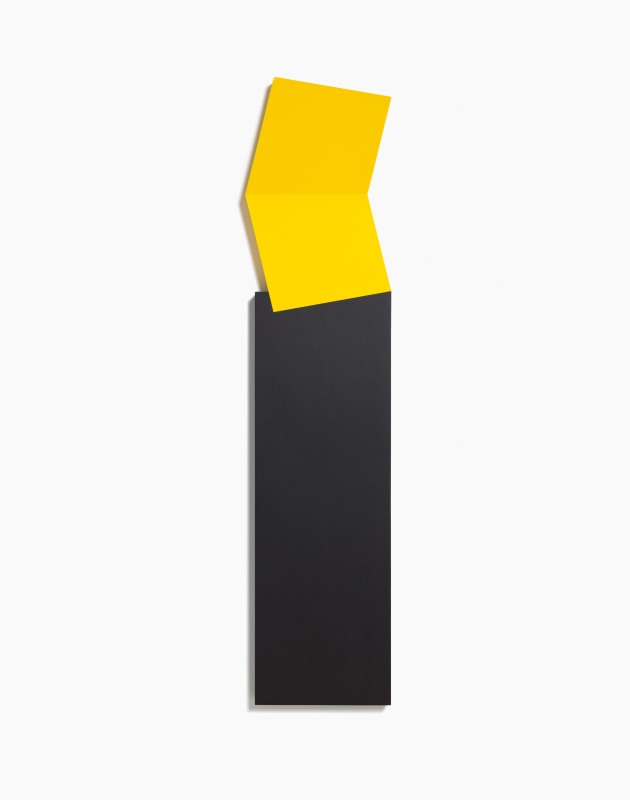 John Carter RASculpture on a Plinth I , 2024Acrylic on plywood129.3 x 30 x 4 cm%3Cdiv%20class%3D%22artist%22%3E%3Cspan%20class%3D%22artist%22%3E%3Cstrong%3EJohn%20Carter%20RA%3C/strong%3E%3C/span%3E%3C/div%3E%0D%3Cdiv%20class%3D%22title%22%3E%3Cem%3ESculpture%20on%20a%20Plinth%20I%20%3C/em%3E%2C%202024%3C/div%3E%0D%3Cdiv%20class%3D%22medium%22%3EAcrylic%20on%20plywood%20%3C/div%3E%0D%3Cdiv%20class%3D%22dimensions%22%3E129.3%20x%2030%20x%204%20cm%3C/div%3E
John Carter RASculpture on a Plinth I , 2024Acrylic on plywood129.3 x 30 x 4 cm%3Cdiv%20class%3D%22artist%22%3E%3Cspan%20class%3D%22artist%22%3E%3Cstrong%3EJohn%20Carter%20RA%3C/strong%3E%3C/span%3E%3C/div%3E%0D%3Cdiv%20class%3D%22title%22%3E%3Cem%3ESculpture%20on%20a%20Plinth%20I%20%3C/em%3E%2C%202024%3C/div%3E%0D%3Cdiv%20class%3D%22medium%22%3EAcrylic%20on%20plywood%20%3C/div%3E%0D%3Cdiv%20class%3D%22dimensions%22%3E129.3%20x%2030%20x%204%20cm%3C/div%3E -
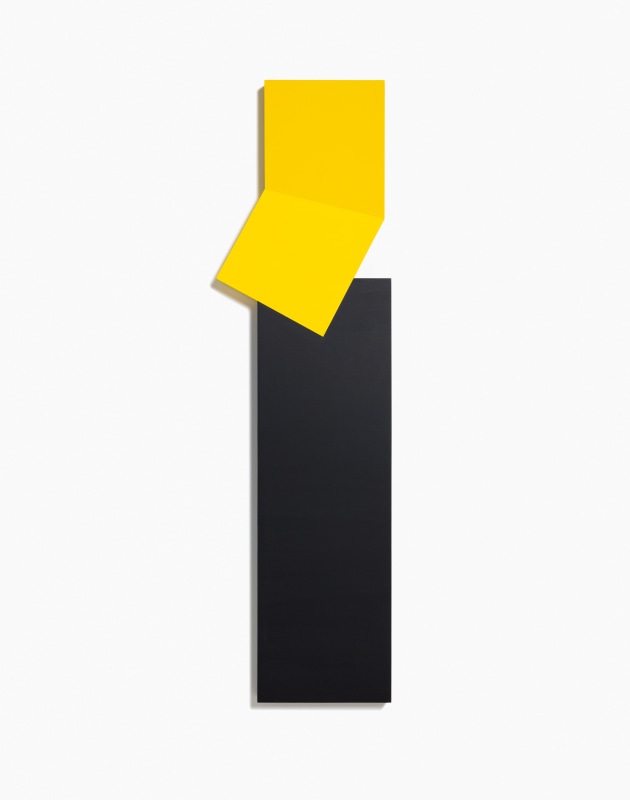 John Carter RASculpture on a Plinth II, 2024Acrylic on plywood130 x 36.5 x 4 cm%3Cdiv%20class%3D%22artist%22%3E%3Cspan%20class%3D%22artist%22%3E%3Cstrong%3EJohn%20Carter%20RA%3C/strong%3E%3C/span%3E%3C/div%3E%0D%3Cdiv%20class%3D%22title%22%3E%3Cem%3ESculpture%20on%20a%20Plinth%20II%3C/em%3E%2C%202024%3C/div%3E%0D%3Cdiv%20class%3D%22medium%22%3EAcrylic%20on%20plywood%3C/div%3E%0D%3Cdiv%20class%3D%22dimensions%22%3E130%20x%2036.5%20x%204%20cm%3C/div%3E
John Carter RASculpture on a Plinth II, 2024Acrylic on plywood130 x 36.5 x 4 cm%3Cdiv%20class%3D%22artist%22%3E%3Cspan%20class%3D%22artist%22%3E%3Cstrong%3EJohn%20Carter%20RA%3C/strong%3E%3C/span%3E%3C/div%3E%0D%3Cdiv%20class%3D%22title%22%3E%3Cem%3ESculpture%20on%20a%20Plinth%20II%3C/em%3E%2C%202024%3C/div%3E%0D%3Cdiv%20class%3D%22medium%22%3EAcrylic%20on%20plywood%3C/div%3E%0D%3Cdiv%20class%3D%22dimensions%22%3E130%20x%2036.5%20x%204%20cm%3C/div%3E -
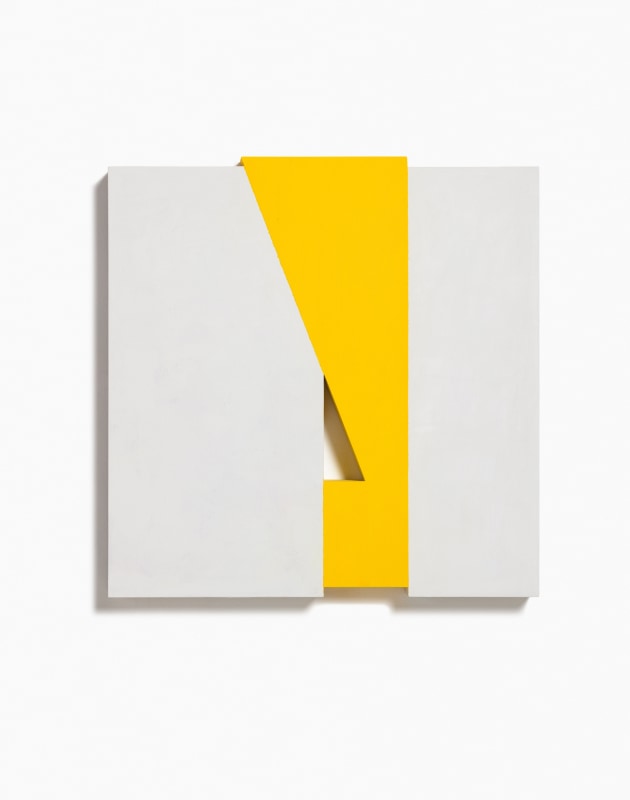 John Carter RAYellow Intrusion, 2024Acrylic on plywood42 x 41 x 4 cm%3Cdiv%20class%3D%22artist%22%3E%3Cspan%20class%3D%22artist%22%3E%3Cstrong%3EJohn%20Carter%20RA%3C/strong%3E%3C/span%3E%3C/div%3E%0D%3Cdiv%20class%3D%22title%22%3E%3Cem%3EYellow%20Intrusion%3C/em%3E%2C%202024%3C/div%3E%0D%3Cdiv%20class%3D%22medium%22%3EAcrylic%20on%20plywood%3C/div%3E%0D%3Cdiv%20class%3D%22dimensions%22%3E42%20x%2041%20x%204%20cm%3C/div%3E
John Carter RAYellow Intrusion, 2024Acrylic on plywood42 x 41 x 4 cm%3Cdiv%20class%3D%22artist%22%3E%3Cspan%20class%3D%22artist%22%3E%3Cstrong%3EJohn%20Carter%20RA%3C/strong%3E%3C/span%3E%3C/div%3E%0D%3Cdiv%20class%3D%22title%22%3E%3Cem%3EYellow%20Intrusion%3C/em%3E%2C%202024%3C/div%3E%0D%3Cdiv%20class%3D%22medium%22%3EAcrylic%20on%20plywood%3C/div%3E%0D%3Cdiv%20class%3D%22dimensions%22%3E42%20x%2041%20x%204%20cm%3C/div%3E -
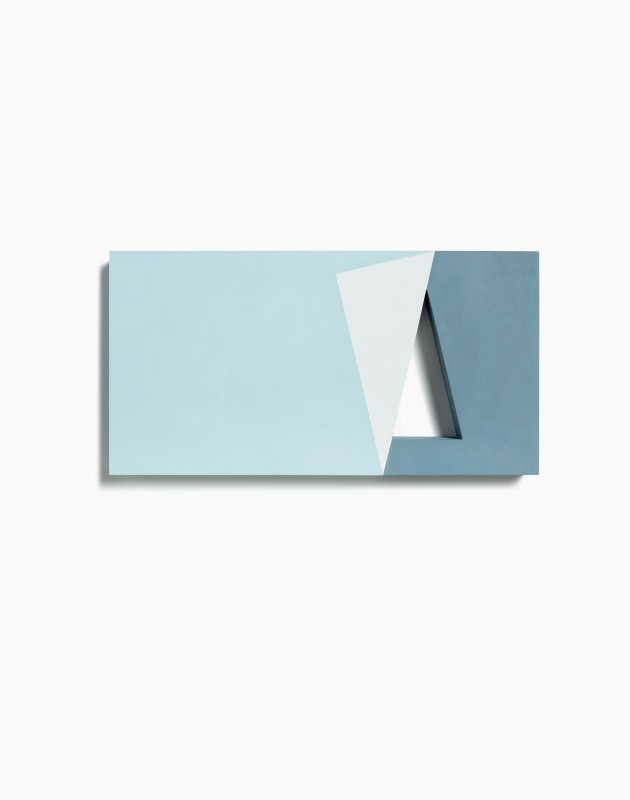 John Carter RACentre-Fold: Two Types of Triangle II, 2023/4Acrylic with marble powder on plywood22 x 42 x 4 cm%3Cdiv%20class%3D%22artist%22%3E%3Cspan%20class%3D%22artist%22%3E%3Cstrong%3EJohn%20Carter%20RA%3C/strong%3E%3C/span%3E%3C/div%3E%0D%3Cdiv%20class%3D%22title%22%3E%3Cem%3ECentre-Fold%3A%20Two%20Types%20of%20Triangle%20II%3C/em%3E%2C%202023/4%3C/div%3E%0D%3Cdiv%20class%3D%22medium%22%3EAcrylic%20with%20marble%20powder%20on%20plywood%3C/div%3E%0D%3Cdiv%20class%3D%22dimensions%22%3E22%20x%2042%20x%204%20cm%3C/div%3E
John Carter RACentre-Fold: Two Types of Triangle II, 2023/4Acrylic with marble powder on plywood22 x 42 x 4 cm%3Cdiv%20class%3D%22artist%22%3E%3Cspan%20class%3D%22artist%22%3E%3Cstrong%3EJohn%20Carter%20RA%3C/strong%3E%3C/span%3E%3C/div%3E%0D%3Cdiv%20class%3D%22title%22%3E%3Cem%3ECentre-Fold%3A%20Two%20Types%20of%20Triangle%20II%3C/em%3E%2C%202023/4%3C/div%3E%0D%3Cdiv%20class%3D%22medium%22%3EAcrylic%20with%20marble%20powder%20on%20plywood%3C/div%3E%0D%3Cdiv%20class%3D%22dimensions%22%3E22%20x%2042%20x%204%20cm%3C/div%3E -
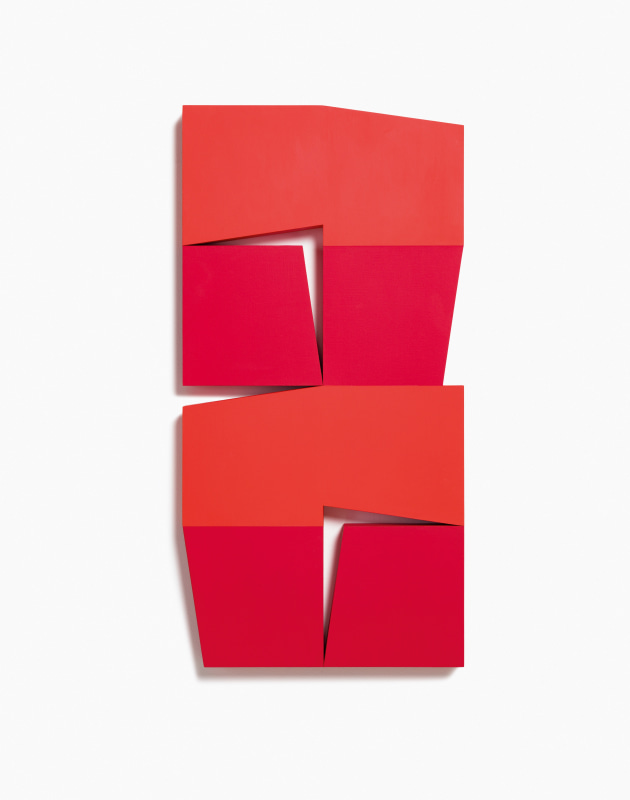 John Carter RARed Column: Study, 2023/4Acrylic on plywood70 x 35 x 4.2 cm%3Cdiv%20class%3D%22artist%22%3E%3Cspan%20class%3D%22artist%22%3E%3Cstrong%3EJohn%20Carter%20RA%3C/strong%3E%3C/span%3E%3C/div%3E%0D%3Cdiv%20class%3D%22title%22%3E%3Cem%3ERed%20Column%3A%20Study%3C/em%3E%2C%202023/4%3C/div%3E%0D%3Cdiv%20class%3D%22medium%22%3EAcrylic%20on%20plywood%3C/div%3E%0D%3Cdiv%20class%3D%22dimensions%22%3E70%20x%2035%20x%204.2%20cm%3C/div%3E
John Carter RARed Column: Study, 2023/4Acrylic on plywood70 x 35 x 4.2 cm%3Cdiv%20class%3D%22artist%22%3E%3Cspan%20class%3D%22artist%22%3E%3Cstrong%3EJohn%20Carter%20RA%3C/strong%3E%3C/span%3E%3C/div%3E%0D%3Cdiv%20class%3D%22title%22%3E%3Cem%3ERed%20Column%3A%20Study%3C/em%3E%2C%202023/4%3C/div%3E%0D%3Cdiv%20class%3D%22medium%22%3EAcrylic%20on%20plywood%3C/div%3E%0D%3Cdiv%20class%3D%22dimensions%22%3E70%20x%2035%20x%204.2%20cm%3C/div%3E -
 John Carter RAStele, Identical Shapes, 2023/4Acrylic on plywood98.5 x 32.8 x 3.8 cm%3Cdiv%20class%3D%22artist%22%3E%3Cspan%20class%3D%22artist%22%3E%3Cstrong%3EJohn%20Carter%20RA%20%3C/strong%3E%3C/span%3E%3C/div%3E%0D%3Cdiv%20class%3D%22title%22%3E%3Cem%3EStele%2C%20Identical%20Shapes%3C/em%3E%2C%202023/4%3C/div%3E%0D%3Cdiv%20class%3D%22medium%22%3EAcrylic%20on%20plywood%3C/div%3E%0D%3Cdiv%20class%3D%22dimensions%22%3E98.5%20x%2032.8%20x%203.8%20cm%3C/div%3E
John Carter RAStele, Identical Shapes, 2023/4Acrylic on plywood98.5 x 32.8 x 3.8 cm%3Cdiv%20class%3D%22artist%22%3E%3Cspan%20class%3D%22artist%22%3E%3Cstrong%3EJohn%20Carter%20RA%20%3C/strong%3E%3C/span%3E%3C/div%3E%0D%3Cdiv%20class%3D%22title%22%3E%3Cem%3EStele%2C%20Identical%20Shapes%3C/em%3E%2C%202023/4%3C/div%3E%0D%3Cdiv%20class%3D%22medium%22%3EAcrylic%20on%20plywood%3C/div%3E%0D%3Cdiv%20class%3D%22dimensions%22%3E98.5%20x%2032.8%20x%203.8%20cm%3C/div%3E -
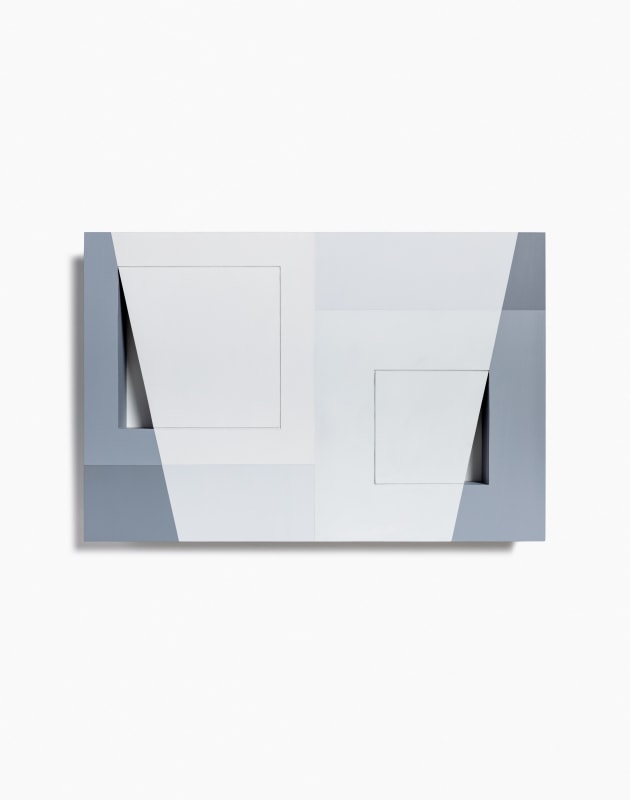 John Carter RAOverlay: Transparenz, 2023Acrylic on plywood33.5 x 50 x 4.5 cm%3Cdiv%20class%3D%22artist%22%3E%3Cspan%20class%3D%22artist%22%3E%3Cstrong%3EJohn%20Carter%20RA%20%3C/strong%3E%3C/span%3E%3C/div%3E%0D%3Cdiv%20class%3D%22title%22%3E%3Cem%3EOverlay%3A%20Transparenz%3C/em%3E%2C%202023%3C/div%3E%0D%3Cdiv%20class%3D%22medium%22%3EAcrylic%20on%20plywood%3C/div%3E%0D%3Cdiv%20class%3D%22dimensions%22%3E33.5%20x%2050%20x%204.5%20cm%3C/div%3E
John Carter RAOverlay: Transparenz, 2023Acrylic on plywood33.5 x 50 x 4.5 cm%3Cdiv%20class%3D%22artist%22%3E%3Cspan%20class%3D%22artist%22%3E%3Cstrong%3EJohn%20Carter%20RA%20%3C/strong%3E%3C/span%3E%3C/div%3E%0D%3Cdiv%20class%3D%22title%22%3E%3Cem%3EOverlay%3A%20Transparenz%3C/em%3E%2C%202023%3C/div%3E%0D%3Cdiv%20class%3D%22medium%22%3EAcrylic%20on%20plywood%3C/div%3E%0D%3Cdiv%20class%3D%22dimensions%22%3E33.5%20x%2050%20x%204.5%20cm%3C/div%3E -
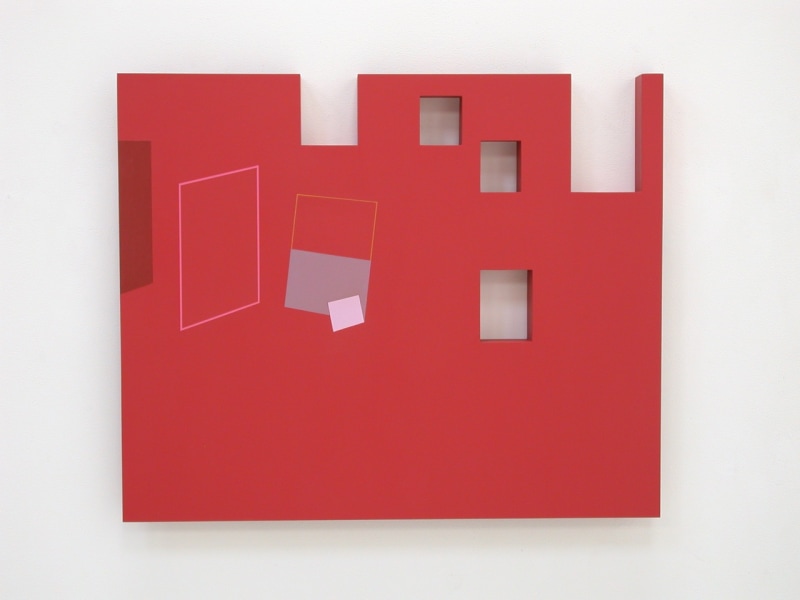 John Carter RAThe Red Studio: An Interpretation , 2023Acrylic on plywood construction60.3 x 73.2 x 5.6 cm%3Cdiv%20class%3D%22artist%22%3E%3Cspan%20class%3D%22artist%22%3E%3Cstrong%3EJohn%20Carter%20RA%3C/strong%3E%3C/span%3E%3C/div%3E%0D%3Cdiv%20class%3D%22title%22%3E%3Cem%3EThe%20Red%20Studio%3A%20An%20Interpretation%20%3C/em%3E%2C%202023%3C/div%3E%0D%3Cdiv%20class%3D%22medium%22%3EAcrylic%20on%20plywood%20construction%3C/div%3E%0D%3Cdiv%20class%3D%22dimensions%22%3E60.3%20x%2073.2%20x%205.6%20cm%3C/div%3E
John Carter RAThe Red Studio: An Interpretation , 2023Acrylic on plywood construction60.3 x 73.2 x 5.6 cm%3Cdiv%20class%3D%22artist%22%3E%3Cspan%20class%3D%22artist%22%3E%3Cstrong%3EJohn%20Carter%20RA%3C/strong%3E%3C/span%3E%3C/div%3E%0D%3Cdiv%20class%3D%22title%22%3E%3Cem%3EThe%20Red%20Studio%3A%20An%20Interpretation%20%3C/em%3E%2C%202023%3C/div%3E%0D%3Cdiv%20class%3D%22medium%22%3EAcrylic%20on%20plywood%20construction%3C/div%3E%0D%3Cdiv%20class%3D%22dimensions%22%3E60.3%20x%2073.2%20x%205.6%20cm%3C/div%3E -
 John Carter RAEncroaching II, 2022/23Acrylic with marble powder on plywood35.7 x 35.7 x 4 cm%3Cdiv%20class%3D%22artist%22%3E%3Cspan%20class%3D%22artist%22%3E%3Cstrong%3EJohn%20Carter%20RA%20%3C/strong%3E%3C/span%3E%3C/div%3E%0D%3Cdiv%20class%3D%22title%22%3E%3Cem%3EEncroaching%20II%3C/em%3E%2C%202022/23%3C/div%3E%0D%3Cdiv%20class%3D%22medium%22%3EAcrylic%20with%20marble%20powder%20on%20plywood%3C/div%3E%0D%3Cdiv%20class%3D%22dimensions%22%3E35.7%20x%2035.7%20x%204%20cm%3C/div%3E
John Carter RAEncroaching II, 2022/23Acrylic with marble powder on plywood35.7 x 35.7 x 4 cm%3Cdiv%20class%3D%22artist%22%3E%3Cspan%20class%3D%22artist%22%3E%3Cstrong%3EJohn%20Carter%20RA%20%3C/strong%3E%3C/span%3E%3C/div%3E%0D%3Cdiv%20class%3D%22title%22%3E%3Cem%3EEncroaching%20II%3C/em%3E%2C%202022/23%3C/div%3E%0D%3Cdiv%20class%3D%22medium%22%3EAcrylic%20with%20marble%20powder%20on%20plywood%3C/div%3E%0D%3Cdiv%20class%3D%22dimensions%22%3E35.7%20x%2035.7%20x%204%20cm%3C/div%3E -
 John Carter RATwo Colour Zones: Conjoined Identical Shapes, 2022/23Acrylic with marble powder on plywood25 x 100 x 4.5 cm%3Cdiv%20class%3D%22artist%22%3E%3Cspan%20class%3D%22artist%22%3E%3Cstrong%3EJohn%20Carter%20RA%3C/strong%3E%3C/span%3E%3C/div%3E%0D%3Cdiv%20class%3D%22title%22%3E%3Cem%3ETwo%20Colour%20Zones%3A%20Conjoined%20Identical%20Shapes%3C/em%3E%2C%202022/23%3C/div%3E%0D%3Cdiv%20class%3D%22medium%22%3EAcrylic%20with%20marble%20powder%20on%20plywood%3C/div%3E%0D%3Cdiv%20class%3D%22dimensions%22%3E25%20x%20100%20x%204.5%20cm%3C/div%3E
John Carter RATwo Colour Zones: Conjoined Identical Shapes, 2022/23Acrylic with marble powder on plywood25 x 100 x 4.5 cm%3Cdiv%20class%3D%22artist%22%3E%3Cspan%20class%3D%22artist%22%3E%3Cstrong%3EJohn%20Carter%20RA%3C/strong%3E%3C/span%3E%3C/div%3E%0D%3Cdiv%20class%3D%22title%22%3E%3Cem%3ETwo%20Colour%20Zones%3A%20Conjoined%20Identical%20Shapes%3C/em%3E%2C%202022/23%3C/div%3E%0D%3Cdiv%20class%3D%22medium%22%3EAcrylic%20with%20marble%20powder%20on%20plywood%3C/div%3E%0D%3Cdiv%20class%3D%22dimensions%22%3E25%20x%20100%20x%204.5%20cm%3C/div%3E -
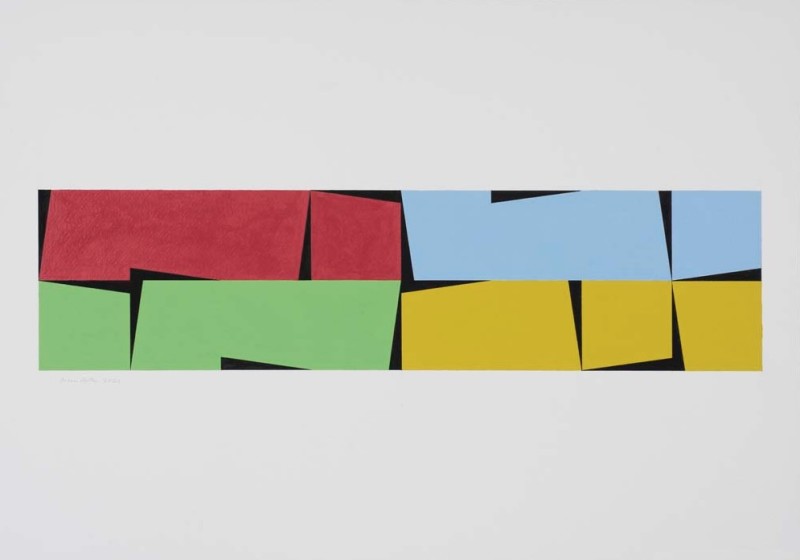 John Carter RAFour Colour Zones: Conjoined Identical Shapes I, 2021Acrylic on paper50 x 70.6cm%3Cdiv%20class%3D%22artist%22%3E%3Cspan%20class%3D%22artist%22%3E%3Cstrong%3EJohn%20Carter%20RA%3C/strong%3E%3C/span%3E%3C/div%3E%0D%3Cdiv%20class%3D%22title%22%3E%3Cem%3EFour%20Colour%20Zones%3A%20Conjoined%20Identical%20Shapes%20I%3C/em%3E%2C%202021%3C/div%3E%0D%3Cdiv%20class%3D%22medium%22%3EAcrylic%20on%20paper%3C/div%3E%0D%3Cdiv%20class%3D%22dimensions%22%3E50%20x%2070.6cm%3C/div%3E
John Carter RAFour Colour Zones: Conjoined Identical Shapes I, 2021Acrylic on paper50 x 70.6cm%3Cdiv%20class%3D%22artist%22%3E%3Cspan%20class%3D%22artist%22%3E%3Cstrong%3EJohn%20Carter%20RA%3C/strong%3E%3C/span%3E%3C/div%3E%0D%3Cdiv%20class%3D%22title%22%3E%3Cem%3EFour%20Colour%20Zones%3A%20Conjoined%20Identical%20Shapes%20I%3C/em%3E%2C%202021%3C/div%3E%0D%3Cdiv%20class%3D%22medium%22%3EAcrylic%20on%20paper%3C/div%3E%0D%3Cdiv%20class%3D%22dimensions%22%3E50%20x%2070.6cm%3C/div%3E -
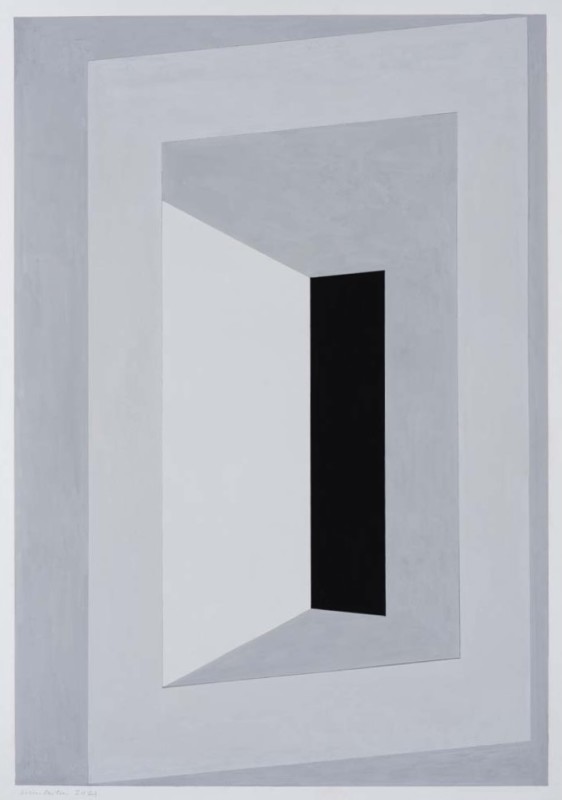 John Carter RAIn the Frame IV, 2021Acrylic gouache on paper49.6 x 34.9cm%3Cdiv%20class%3D%22artist%22%3E%3Cspan%20class%3D%22artist%22%3E%3Cstrong%3EJohn%20Carter%20RA%3C/strong%3E%3C/span%3E%3C/div%3E%0D%3Cdiv%20class%3D%22title%22%3E%3Cem%3EIn%20the%20Frame%20IV%3C/em%3E%2C%202021%3C/div%3E%0D%3Cdiv%20class%3D%22medium%22%3EAcrylic%20gouache%20on%20paper%3C/div%3E%0D%3Cdiv%20class%3D%22dimensions%22%3E49.6%20x%2034.9cm%3C/div%3E
John Carter RAIn the Frame IV, 2021Acrylic gouache on paper49.6 x 34.9cm%3Cdiv%20class%3D%22artist%22%3E%3Cspan%20class%3D%22artist%22%3E%3Cstrong%3EJohn%20Carter%20RA%3C/strong%3E%3C/span%3E%3C/div%3E%0D%3Cdiv%20class%3D%22title%22%3E%3Cem%3EIn%20the%20Frame%20IV%3C/em%3E%2C%202021%3C/div%3E%0D%3Cdiv%20class%3D%22medium%22%3EAcrylic%20gouache%20on%20paper%3C/div%3E%0D%3Cdiv%20class%3D%22dimensions%22%3E49.6%20x%2034.9cm%3C/div%3E -
 John Carter RAOver the Edge II, 2021Acrylic with marble powder on plywood70 x 70 x 6 cm%3Cdiv%20class%3D%22artist%22%3E%3Cspan%20class%3D%22artist%22%3E%3Cstrong%3EJohn%20Carter%20RA%3C/strong%3E%3C/span%3E%3C/div%3E%0D%3Cdiv%20class%3D%22title%22%3E%3Cem%3EOver%20the%20Edge%20II%3C/em%3E%2C%202021%3C/div%3E%0D%3Cdiv%20class%3D%22medium%22%3EAcrylic%20with%20marble%20powder%20on%20plywood%3C/div%3E%0D%3Cdiv%20class%3D%22dimensions%22%3E70%20x%2070%20x%206%20cm%3C/div%3E
John Carter RAOver the Edge II, 2021Acrylic with marble powder on plywood70 x 70 x 6 cm%3Cdiv%20class%3D%22artist%22%3E%3Cspan%20class%3D%22artist%22%3E%3Cstrong%3EJohn%20Carter%20RA%3C/strong%3E%3C/span%3E%3C/div%3E%0D%3Cdiv%20class%3D%22title%22%3E%3Cem%3EOver%20the%20Edge%20II%3C/em%3E%2C%202021%3C/div%3E%0D%3Cdiv%20class%3D%22medium%22%3EAcrylic%20with%20marble%20powder%20on%20plywood%3C/div%3E%0D%3Cdiv%20class%3D%22dimensions%22%3E70%20x%2070%20x%206%20cm%3C/div%3E -
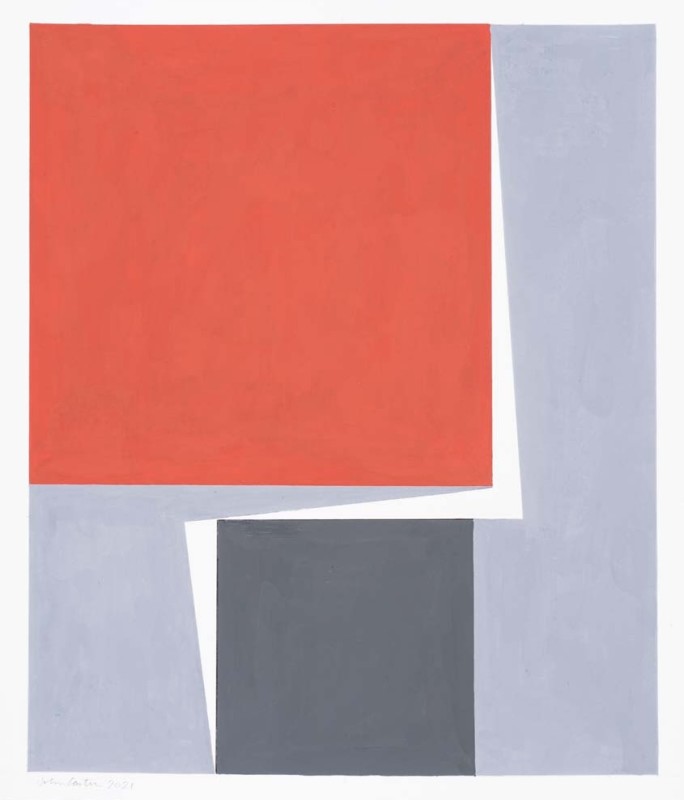 John Carter RATransition Project, 2021Acrylic on paper25.9 x 21.7cm%3Cdiv%20class%3D%22artist%22%3E%3Cspan%20class%3D%22artist%22%3E%3Cstrong%3EJohn%20Carter%20RA%3C/strong%3E%3C/span%3E%3C/div%3E%0D%3Cdiv%20class%3D%22title%22%3E%3Cem%3ETransition%20Project%3C/em%3E%2C%202021%3C/div%3E%0D%3Cdiv%20class%3D%22medium%22%3EAcrylic%20on%20paper%3C/div%3E%0D%3Cdiv%20class%3D%22dimensions%22%3E25.9%20x%2021.7cm%3C/div%3E
John Carter RATransition Project, 2021Acrylic on paper25.9 x 21.7cm%3Cdiv%20class%3D%22artist%22%3E%3Cspan%20class%3D%22artist%22%3E%3Cstrong%3EJohn%20Carter%20RA%3C/strong%3E%3C/span%3E%3C/div%3E%0D%3Cdiv%20class%3D%22title%22%3E%3Cem%3ETransition%20Project%3C/em%3E%2C%202021%3C/div%3E%0D%3Cdiv%20class%3D%22medium%22%3EAcrylic%20on%20paper%3C/div%3E%0D%3Cdiv%20class%3D%22dimensions%22%3E25.9%20x%2021.7cm%3C/div%3E -
 John Carter RATransition Six Parts, 2021Acrylic on paper50 x 30.6cm%3Cdiv%20class%3D%22artist%22%3E%3Cspan%20class%3D%22artist%22%3E%3Cstrong%3EJohn%20Carter%20RA%3C/strong%3E%3C/span%3E%3C/div%3E%0D%3Cdiv%20class%3D%22title%22%3E%3Cem%3ETransition%20Six%20Parts%3C/em%3E%2C%202021%3C/div%3E%0D%3Cdiv%20class%3D%22medium%22%3EAcrylic%20on%20paper%3C/div%3E%0D%3Cdiv%20class%3D%22dimensions%22%3E50%20x%2030.6cm%3C/div%3E
John Carter RATransition Six Parts, 2021Acrylic on paper50 x 30.6cm%3Cdiv%20class%3D%22artist%22%3E%3Cspan%20class%3D%22artist%22%3E%3Cstrong%3EJohn%20Carter%20RA%3C/strong%3E%3C/span%3E%3C/div%3E%0D%3Cdiv%20class%3D%22title%22%3E%3Cem%3ETransition%20Six%20Parts%3C/em%3E%2C%202021%3C/div%3E%0D%3Cdiv%20class%3D%22medium%22%3EAcrylic%20on%20paper%3C/div%3E%0D%3Cdiv%20class%3D%22dimensions%22%3E50%20x%2030.6cm%3C/div%3E -
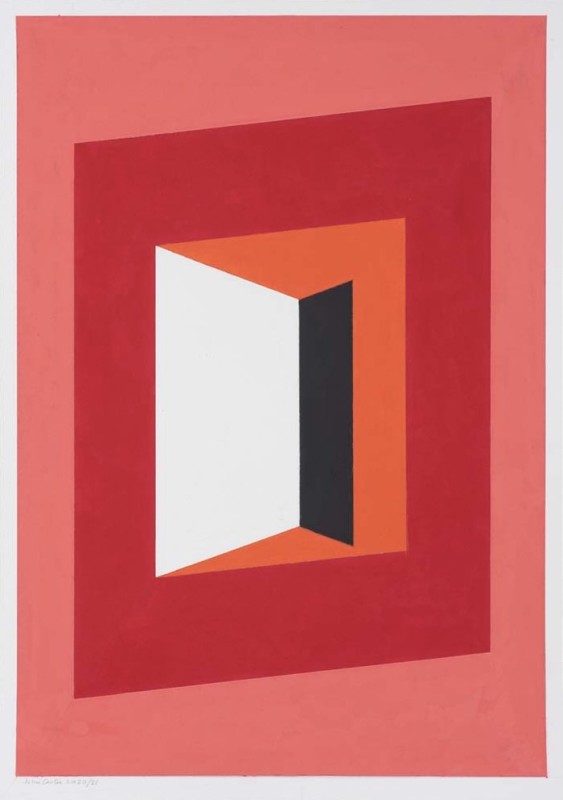 John Carter RAIn the Frame II, 2020/21Acrylic gouache on paper44 x 31cm%3Cdiv%20class%3D%22artist%22%3E%3Cspan%20class%3D%22artist%22%3E%3Cstrong%3EJohn%20Carter%20RA%3C/strong%3E%3C/span%3E%3C/div%3E%0D%3Cdiv%20class%3D%22title%22%3E%3Cem%3EIn%20the%20Frame%20II%3C/em%3E%2C%202020/21%3C/div%3E%0D%3Cdiv%20class%3D%22medium%22%3EAcrylic%20gouache%20on%20paper%3C/div%3E%0D%3Cdiv%20class%3D%22dimensions%22%3E44%20x%2031cm%3C/div%3E
John Carter RAIn the Frame II, 2020/21Acrylic gouache on paper44 x 31cm%3Cdiv%20class%3D%22artist%22%3E%3Cspan%20class%3D%22artist%22%3E%3Cstrong%3EJohn%20Carter%20RA%3C/strong%3E%3C/span%3E%3C/div%3E%0D%3Cdiv%20class%3D%22title%22%3E%3Cem%3EIn%20the%20Frame%20II%3C/em%3E%2C%202020/21%3C/div%3E%0D%3Cdiv%20class%3D%22medium%22%3EAcrylic%20gouache%20on%20paper%3C/div%3E%0D%3Cdiv%20class%3D%22dimensions%22%3E44%20x%2031cm%3C/div%3E -
 John Carter RAFrom One Side to the Other , 2020Acrylic with marble powder on plywood70 x 70 x 6 cm%3Cdiv%20class%3D%22artist%22%3E%3Cspan%20class%3D%22artist%22%3E%3Cstrong%3EJohn%20Carter%20RA%3C/strong%3E%3C/span%3E%3C/div%3E%0D%3Cdiv%20class%3D%22title%22%3E%3Cem%3EFrom%20One%20Side%20to%20the%20Other%20%3C/em%3E%2C%202020%3C/div%3E%0D%3Cdiv%20class%3D%22medium%22%3EAcrylic%20with%20marble%20powder%20on%20plywood%3C/div%3E%0D%3Cdiv%20class%3D%22dimensions%22%3E70%20x%2070%20x%206%20cm%3C/div%3E
John Carter RAFrom One Side to the Other , 2020Acrylic with marble powder on plywood70 x 70 x 6 cm%3Cdiv%20class%3D%22artist%22%3E%3Cspan%20class%3D%22artist%22%3E%3Cstrong%3EJohn%20Carter%20RA%3C/strong%3E%3C/span%3E%3C/div%3E%0D%3Cdiv%20class%3D%22title%22%3E%3Cem%3EFrom%20One%20Side%20to%20the%20Other%20%3C/em%3E%2C%202020%3C/div%3E%0D%3Cdiv%20class%3D%22medium%22%3EAcrylic%20with%20marble%20powder%20on%20plywood%3C/div%3E%0D%3Cdiv%20class%3D%22dimensions%22%3E70%20x%2070%20x%206%20cm%3C/div%3E -
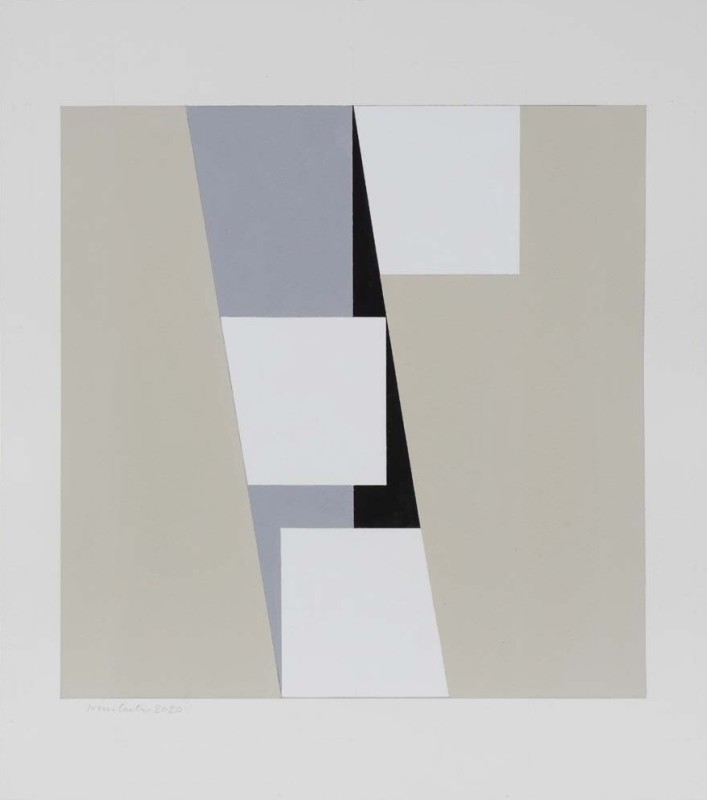 John Carter RAFrom One Side to the Other: Study, 2020Acrylic gouache on paper38.3 x 34.1cm%3Cdiv%20class%3D%22artist%22%3E%3Cspan%20class%3D%22artist%22%3E%3Cstrong%3EJohn%20Carter%20RA%3C/strong%3E%3C/span%3E%3C/div%3E%0D%3Cdiv%20class%3D%22title%22%3E%3Cem%3EFrom%20One%20Side%20to%20the%20Other%3A%20Study%3C/em%3E%2C%202020%3C/div%3E%0D%3Cdiv%20class%3D%22medium%22%3EAcrylic%20gouache%20on%20paper%3C/div%3E%0D%3Cdiv%20class%3D%22dimensions%22%3E38.3%20x%2034.1cm%3C/div%3E
John Carter RAFrom One Side to the Other: Study, 2020Acrylic gouache on paper38.3 x 34.1cm%3Cdiv%20class%3D%22artist%22%3E%3Cspan%20class%3D%22artist%22%3E%3Cstrong%3EJohn%20Carter%20RA%3C/strong%3E%3C/span%3E%3C/div%3E%0D%3Cdiv%20class%3D%22title%22%3E%3Cem%3EFrom%20One%20Side%20to%20the%20Other%3A%20Study%3C/em%3E%2C%202020%3C/div%3E%0D%3Cdiv%20class%3D%22medium%22%3EAcrylic%20gouache%20on%20paper%3C/div%3E%0D%3Cdiv%20class%3D%22dimensions%22%3E38.3%20x%2034.1cm%3C/div%3E -
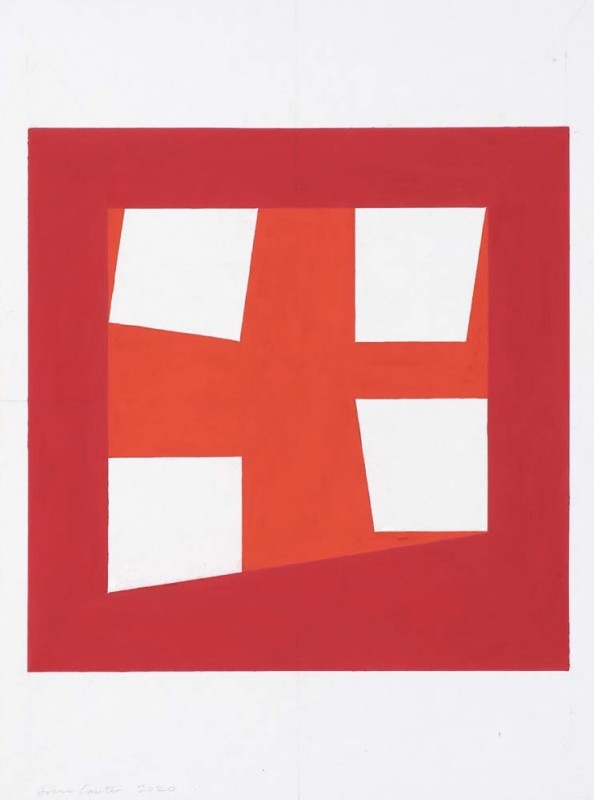 John Carter RAIdentical Shapes, Halved Areas: Study II, 2020Acrylic gouache on paper33 x 24.5cm%3Cdiv%20class%3D%22artist%22%3E%3Cspan%20class%3D%22artist%22%3E%3Cstrong%3EJohn%20Carter%20RA%3C/strong%3E%3C/span%3E%3C/div%3E%0D%3Cdiv%20class%3D%22title%22%3E%3Cem%3EIdentical%20Shapes%2C%20Halved%20Areas%3A%20Study%20II%3C/em%3E%2C%202020%3C/div%3E%0D%3Cdiv%20class%3D%22medium%22%3EAcrylic%20gouache%20on%20paper%3C/div%3E%0D%3Cdiv%20class%3D%22dimensions%22%3E33%20x%2024.5cm%3C/div%3E
John Carter RAIdentical Shapes, Halved Areas: Study II, 2020Acrylic gouache on paper33 x 24.5cm%3Cdiv%20class%3D%22artist%22%3E%3Cspan%20class%3D%22artist%22%3E%3Cstrong%3EJohn%20Carter%20RA%3C/strong%3E%3C/span%3E%3C/div%3E%0D%3Cdiv%20class%3D%22title%22%3E%3Cem%3EIdentical%20Shapes%2C%20Halved%20Areas%3A%20Study%20II%3C/em%3E%2C%202020%3C/div%3E%0D%3Cdiv%20class%3D%22medium%22%3EAcrylic%20gouache%20on%20paper%3C/div%3E%0D%3Cdiv%20class%3D%22dimensions%22%3E33%20x%2024.5cm%3C/div%3E -
 John Carter RAIn the Frame I, 2020Acrylic gouache on paper22.5 x 20cm%3Cdiv%20class%3D%22artist%22%3E%3Cspan%20class%3D%22artist%22%3E%3Cstrong%3EJohn%20Carter%20RA%3C/strong%3E%3C/span%3E%3C/div%3E%0D%3Cdiv%20class%3D%22title%22%3E%3Cem%3EIn%20the%20Frame%20I%3C/em%3E%2C%202020%3C/div%3E%0D%3Cdiv%20class%3D%22medium%22%3EAcrylic%20gouache%20on%20paper%3C/div%3E%0D%3Cdiv%20class%3D%22dimensions%22%3E22.5%20x%2020cm%3C/div%3E
John Carter RAIn the Frame I, 2020Acrylic gouache on paper22.5 x 20cm%3Cdiv%20class%3D%22artist%22%3E%3Cspan%20class%3D%22artist%22%3E%3Cstrong%3EJohn%20Carter%20RA%3C/strong%3E%3C/span%3E%3C/div%3E%0D%3Cdiv%20class%3D%22title%22%3E%3Cem%3EIn%20the%20Frame%20I%3C/em%3E%2C%202020%3C/div%3E%0D%3Cdiv%20class%3D%22medium%22%3EAcrylic%20gouache%20on%20paper%3C/div%3E%0D%3Cdiv%20class%3D%22dimensions%22%3E22.5%20x%2020cm%3C/div%3E -
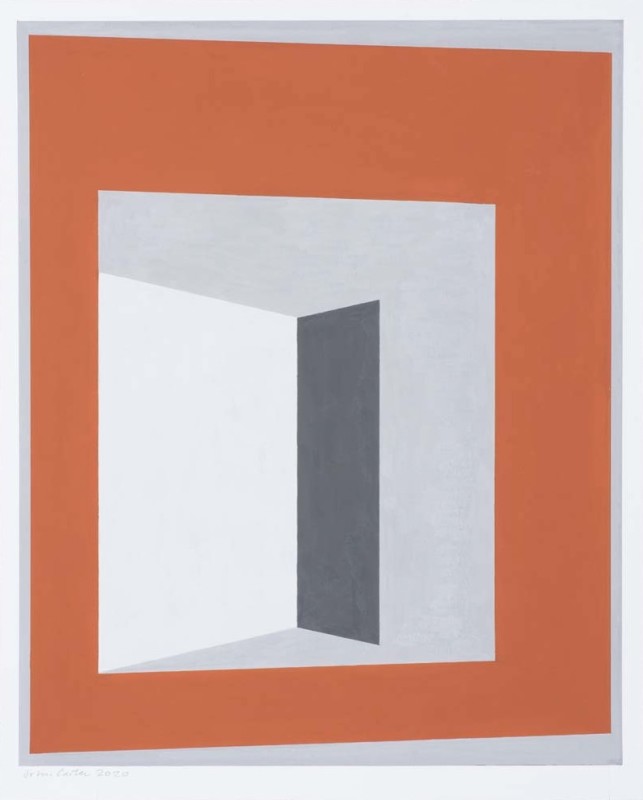 John Carter RAIn the Frame III, 2020Acrylic gouache on paper31 x 25.2cm%3Cdiv%20class%3D%22artist%22%3E%3Cspan%20class%3D%22artist%22%3E%3Cstrong%3EJohn%20Carter%20RA%3C/strong%3E%3C/span%3E%3C/div%3E%0D%3Cdiv%20class%3D%22title%22%3E%3Cem%3EIn%20the%20Frame%20III%3C/em%3E%2C%202020%3C/div%3E%0D%3Cdiv%20class%3D%22medium%22%3EAcrylic%20gouache%20on%20paper%3C/div%3E%0D%3Cdiv%20class%3D%22dimensions%22%3E31%20x%2025.2cm%3C/div%3E
John Carter RAIn the Frame III, 2020Acrylic gouache on paper31 x 25.2cm%3Cdiv%20class%3D%22artist%22%3E%3Cspan%20class%3D%22artist%22%3E%3Cstrong%3EJohn%20Carter%20RA%3C/strong%3E%3C/span%3E%3C/div%3E%0D%3Cdiv%20class%3D%22title%22%3E%3Cem%3EIn%20the%20Frame%20III%3C/em%3E%2C%202020%3C/div%3E%0D%3Cdiv%20class%3D%22medium%22%3EAcrylic%20gouache%20on%20paper%3C/div%3E%0D%3Cdiv%20class%3D%22dimensions%22%3E31%20x%2025.2cm%3C/div%3E -
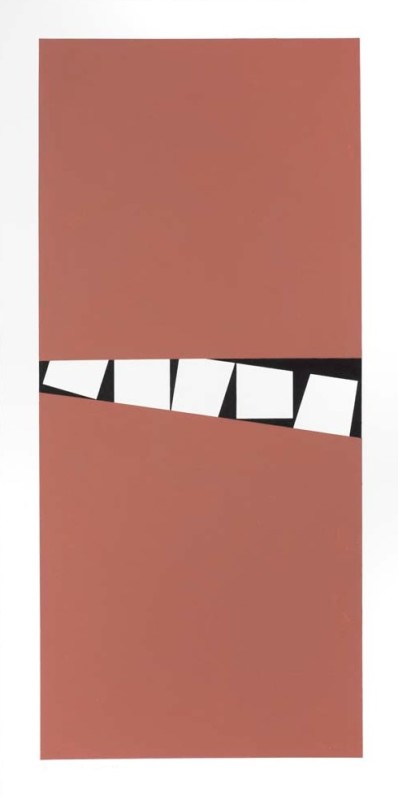 John Carter RAOpening II, 2020Acrylic on paper57.9 x 28.9cm%3Cdiv%20class%3D%22artist%22%3E%3Cspan%20class%3D%22artist%22%3E%3Cstrong%3EJohn%20Carter%20RA%3C/strong%3E%3C/span%3E%3C/div%3E%0D%3Cdiv%20class%3D%22title%22%3E%3Cem%3EOpening%20II%3C/em%3E%2C%202020%3C/div%3E%0D%3Cdiv%20class%3D%22medium%22%3EAcrylic%20on%20paper%3C/div%3E%0D%3Cdiv%20class%3D%22dimensions%22%3E57.9%20x%2028.9cm%3C/div%3E
John Carter RAOpening II, 2020Acrylic on paper57.9 x 28.9cm%3Cdiv%20class%3D%22artist%22%3E%3Cspan%20class%3D%22artist%22%3E%3Cstrong%3EJohn%20Carter%20RA%3C/strong%3E%3C/span%3E%3C/div%3E%0D%3Cdiv%20class%3D%22title%22%3E%3Cem%3EOpening%20II%3C/em%3E%2C%202020%3C/div%3E%0D%3Cdiv%20class%3D%22medium%22%3EAcrylic%20on%20paper%3C/div%3E%0D%3Cdiv%20class%3D%22dimensions%22%3E57.9%20x%2028.9cm%3C/div%3E -
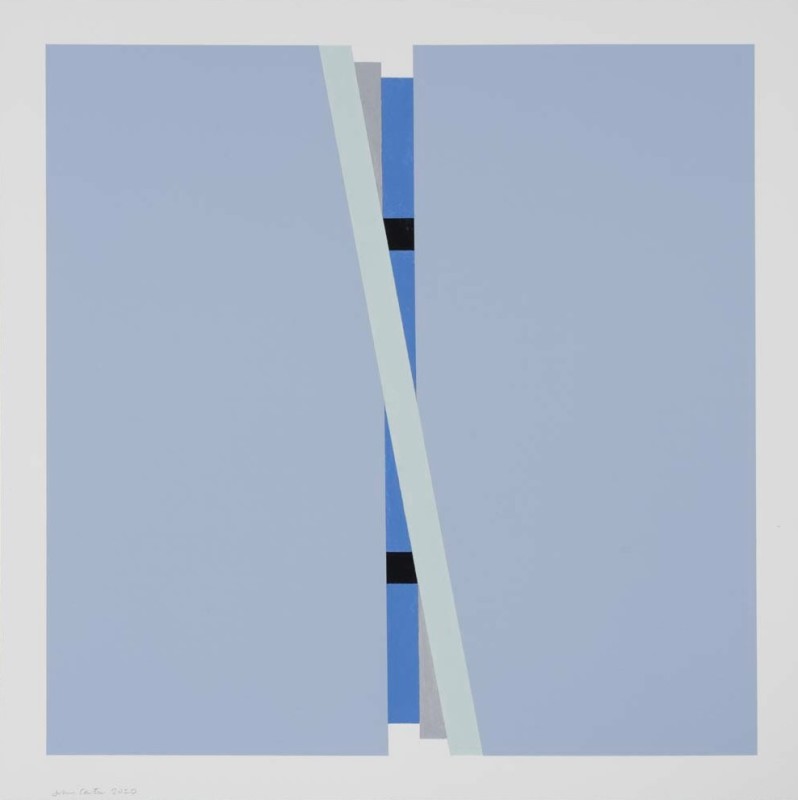 John Carter RASlanting Beam III, 2020Acrylic gouache on paper49.8 x 50.4cm%3Cdiv%20class%3D%22artist%22%3E%3Cspan%20class%3D%22artist%22%3E%3Cstrong%3EJohn%20Carter%20RA%3C/strong%3E%3C/span%3E%3C/div%3E%0D%3Cdiv%20class%3D%22title%22%3E%3Cem%3ESlanting%20Beam%20III%3C/em%3E%2C%202020%3C/div%3E%0D%3Cdiv%20class%3D%22medium%22%3EAcrylic%20gouache%20on%20paper%3C/div%3E%0D%3Cdiv%20class%3D%22dimensions%22%3E49.8%20x%2050.4cm%3C/div%3E
John Carter RASlanting Beam III, 2020Acrylic gouache on paper49.8 x 50.4cm%3Cdiv%20class%3D%22artist%22%3E%3Cspan%20class%3D%22artist%22%3E%3Cstrong%3EJohn%20Carter%20RA%3C/strong%3E%3C/span%3E%3C/div%3E%0D%3Cdiv%20class%3D%22title%22%3E%3Cem%3ESlanting%20Beam%20III%3C/em%3E%2C%202020%3C/div%3E%0D%3Cdiv%20class%3D%22medium%22%3EAcrylic%20gouache%20on%20paper%3C/div%3E%0D%3Cdiv%20class%3D%22dimensions%22%3E49.8%20x%2050.4cm%3C/div%3E -
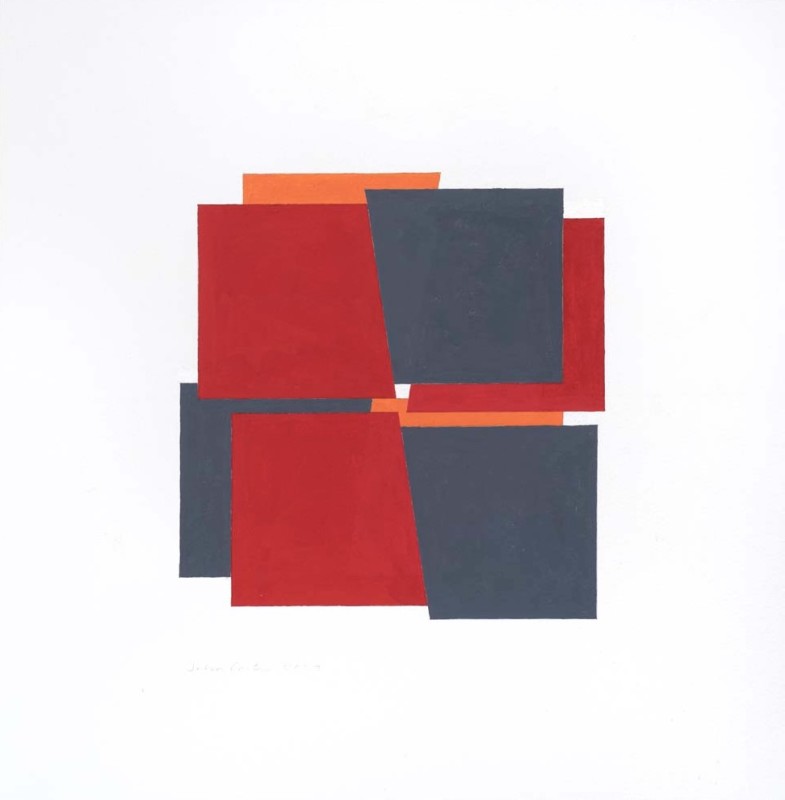 John Carter RASlip Line: Dark Colours, 2020Acrylic gouache on paper33.3 x 32.4cm%3Cdiv%20class%3D%22artist%22%3E%3Cspan%20class%3D%22artist%22%3E%3Cstrong%3EJohn%20Carter%20RA%3C/strong%3E%3C/span%3E%3C/div%3E%0D%3Cdiv%20class%3D%22title%22%3E%3Cem%3ESlip%20Line%3A%20Dark%20Colours%3C/em%3E%2C%202020%3C/div%3E%0D%3Cdiv%20class%3D%22medium%22%3EAcrylic%20gouache%20on%20paper%3C/div%3E%0D%3Cdiv%20class%3D%22dimensions%22%3E33.3%20x%2032.4cm%3C/div%3E
John Carter RASlip Line: Dark Colours, 2020Acrylic gouache on paper33.3 x 32.4cm%3Cdiv%20class%3D%22artist%22%3E%3Cspan%20class%3D%22artist%22%3E%3Cstrong%3EJohn%20Carter%20RA%3C/strong%3E%3C/span%3E%3C/div%3E%0D%3Cdiv%20class%3D%22title%22%3E%3Cem%3ESlip%20Line%3A%20Dark%20Colours%3C/em%3E%2C%202020%3C/div%3E%0D%3Cdiv%20class%3D%22medium%22%3EAcrylic%20gouache%20on%20paper%3C/div%3E%0D%3Cdiv%20class%3D%22dimensions%22%3E33.3%20x%2032.4cm%3C/div%3E -
 John Carter RATransition, Black and Grey, 2020Acrylic on paper22.8 x 17.6cm%3Cdiv%20class%3D%22artist%22%3E%3Cspan%20class%3D%22artist%22%3E%3Cstrong%3EJohn%20Carter%20RA%3C/strong%3E%3C/span%3E%3C/div%3E%0D%3Cdiv%20class%3D%22title%22%3E%3Cem%3ETransition%2C%20Black%20and%20Grey%3C/em%3E%2C%202020%3C/div%3E%0D%3Cdiv%20class%3D%22medium%22%3EAcrylic%20on%20paper%3C/div%3E%0D%3Cdiv%20class%3D%22dimensions%22%3E22.8%20x%2017.6cm%3C/div%3E
John Carter RATransition, Black and Grey, 2020Acrylic on paper22.8 x 17.6cm%3Cdiv%20class%3D%22artist%22%3E%3Cspan%20class%3D%22artist%22%3E%3Cstrong%3EJohn%20Carter%20RA%3C/strong%3E%3C/span%3E%3C/div%3E%0D%3Cdiv%20class%3D%22title%22%3E%3Cem%3ETransition%2C%20Black%20and%20Grey%3C/em%3E%2C%202020%3C/div%3E%0D%3Cdiv%20class%3D%22medium%22%3EAcrylic%20on%20paper%3C/div%3E%0D%3Cdiv%20class%3D%22dimensions%22%3E22.8%20x%2017.6cm%3C/div%3E -
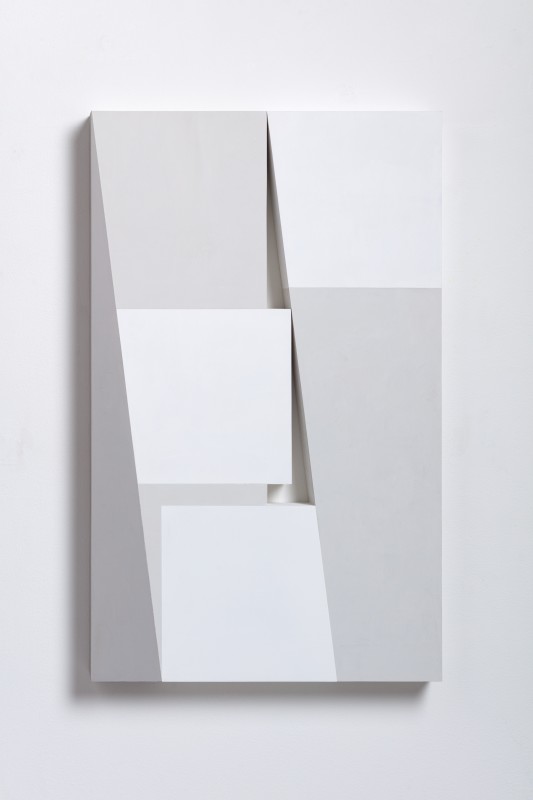 John Carter RAVertical Shaft (from One Side to the Other), 2020Acrylic with marble powder on plywood65 x 40cm%3Cdiv%20class%3D%22artist%22%3E%3Cspan%20class%3D%22artist%22%3E%3Cstrong%3EJohn%20Carter%20RA%3C/strong%3E%3C/span%3E%3C/div%3E%0D%3Cdiv%20class%3D%22title%22%3E%3Cem%3EVertical%20Shaft%20%28from%20One%20Side%20to%20the%20Other%29%3C/em%3E%2C%202020%3C/div%3E%0D%3Cdiv%20class%3D%22medium%22%3EAcrylic%20with%20marble%20powder%20on%20plywood%3C/div%3E%0D%3Cdiv%20class%3D%22dimensions%22%3E65%20x%2040cm%3C/div%3E
John Carter RAVertical Shaft (from One Side to the Other), 2020Acrylic with marble powder on plywood65 x 40cm%3Cdiv%20class%3D%22artist%22%3E%3Cspan%20class%3D%22artist%22%3E%3Cstrong%3EJohn%20Carter%20RA%3C/strong%3E%3C/span%3E%3C/div%3E%0D%3Cdiv%20class%3D%22title%22%3E%3Cem%3EVertical%20Shaft%20%28from%20One%20Side%20to%20the%20Other%29%3C/em%3E%2C%202020%3C/div%3E%0D%3Cdiv%20class%3D%22medium%22%3EAcrylic%20with%20marble%20powder%20on%20plywood%3C/div%3E%0D%3Cdiv%20class%3D%22dimensions%22%3E65%20x%2040cm%3C/div%3E -
 John Carter RAConjoined Identical Shapes, Blue and Yellow, 2019Acrylic on paper36 x 36cm%3Cdiv%20class%3D%22artist%22%3E%3Cspan%20class%3D%22artist%22%3E%3Cstrong%3EJohn%20Carter%20RA%3C/strong%3E%3C/span%3E%3C/div%3E%0D%3Cdiv%20class%3D%22title%22%3E%3Cem%3EConjoined%20Identical%20Shapes%2C%20Blue%20and%20Yellow%3C/em%3E%2C%202019%3C/div%3E%0D%3Cdiv%20class%3D%22medium%22%3EAcrylic%20on%20paper%3C/div%3E%0D%3Cdiv%20class%3D%22dimensions%22%3E36%20x%2036cm%3C/div%3E
John Carter RAConjoined Identical Shapes, Blue and Yellow, 2019Acrylic on paper36 x 36cm%3Cdiv%20class%3D%22artist%22%3E%3Cspan%20class%3D%22artist%22%3E%3Cstrong%3EJohn%20Carter%20RA%3C/strong%3E%3C/span%3E%3C/div%3E%0D%3Cdiv%20class%3D%22title%22%3E%3Cem%3EConjoined%20Identical%20Shapes%2C%20Blue%20and%20Yellow%3C/em%3E%2C%202019%3C/div%3E%0D%3Cdiv%20class%3D%22medium%22%3EAcrylic%20on%20paper%3C/div%3E%0D%3Cdiv%20class%3D%22dimensions%22%3E36%20x%2036cm%3C/div%3E -
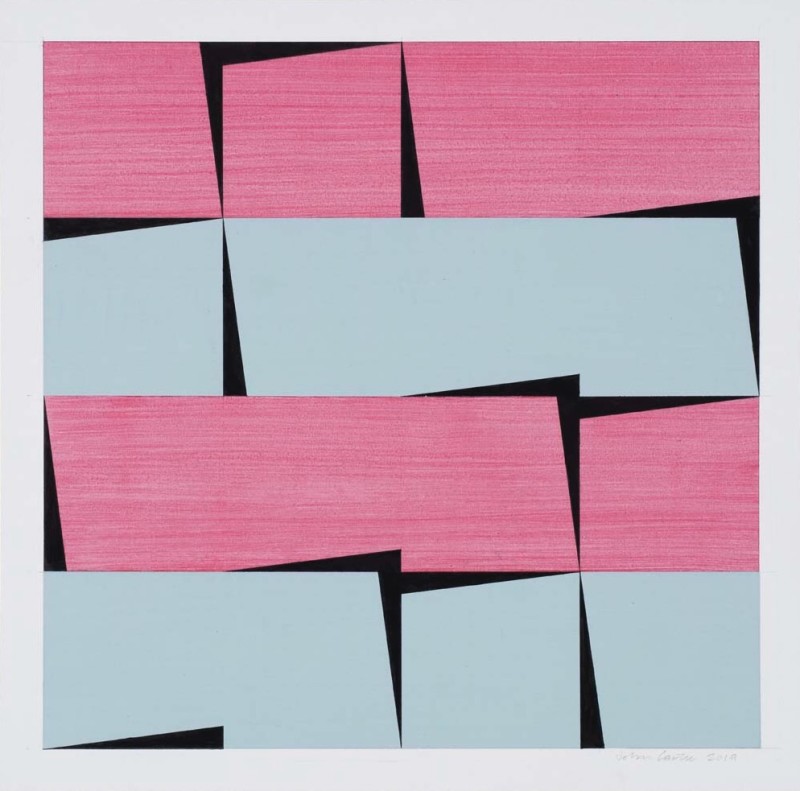 John Carter RAConjoined Identical Shapes, Magenta and Blue, 2019Acrylic on paper35.9 x 36.1 cm£2,800%3Cdiv%20class%3D%22artist%22%3E%3Cspan%20class%3D%22artist%22%3E%3Cstrong%3EJohn%20Carter%20RA%3C%2Fstrong%3E%3C%2Fspan%3E%3C%2Fdiv%3E%0D%3Cdiv%20class%3D%22title%22%3E%3Cem%3EConjoined%20Identical%20Shapes%2C%20Magenta%20and%20Blue%3C%2Fem%3E%2C%202019%3C%2Fdiv%3E%0D%3Cdiv%20class%3D%22signed_and_dated%22%3E%C2%A32%2C800%3C%2Fdiv%3E%0D%3Cdiv%20class%3D%22medium%22%3EAcrylic%20on%20paper%3C%2Fdiv%3E%0D%3Cdiv%20class%3D%22dimensions%22%3E35.9%20x%2036.1%20cm%3C%2Fdiv%3E
John Carter RAConjoined Identical Shapes, Magenta and Blue, 2019Acrylic on paper35.9 x 36.1 cm£2,800%3Cdiv%20class%3D%22artist%22%3E%3Cspan%20class%3D%22artist%22%3E%3Cstrong%3EJohn%20Carter%20RA%3C%2Fstrong%3E%3C%2Fspan%3E%3C%2Fdiv%3E%0D%3Cdiv%20class%3D%22title%22%3E%3Cem%3EConjoined%20Identical%20Shapes%2C%20Magenta%20and%20Blue%3C%2Fem%3E%2C%202019%3C%2Fdiv%3E%0D%3Cdiv%20class%3D%22signed_and_dated%22%3E%C2%A32%2C800%3C%2Fdiv%3E%0D%3Cdiv%20class%3D%22medium%22%3EAcrylic%20on%20paper%3C%2Fdiv%3E%0D%3Cdiv%20class%3D%22dimensions%22%3E35.9%20x%2036.1%20cm%3C%2Fdiv%3E -
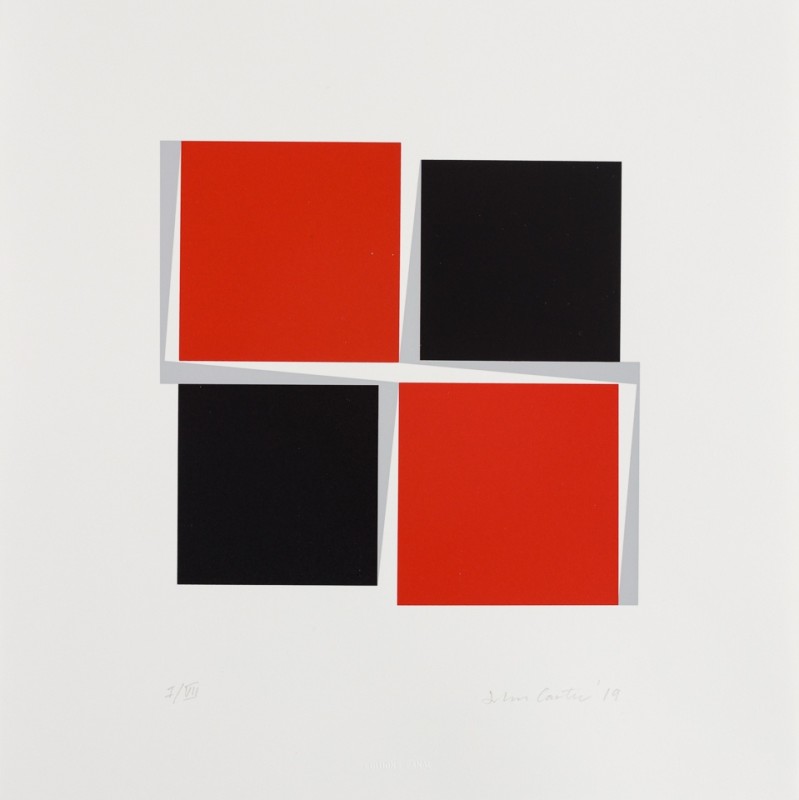 John Carter RADouble Transition II, 2019Screenprint32 x 32 cm (sheet)From the edition of 21 impressionsSigned, dated and numbered%3Cdiv%20class%3D%22artist%22%3E%3Cspan%20class%3D%22artist%22%3E%3Cstrong%3EJohn%20Carter%20RA%3C/strong%3E%3C/span%3E%3C/div%3E%0D%3Cdiv%20class%3D%22title%22%3E%3Cem%3EDouble%20Transition%20II%3C/em%3E%2C%202019%3C/div%3E%0D%3Cdiv%20class%3D%22signed_and_dated%22%3ESigned%2C%20dated%20and%20numbered%3C/div%3E%0D%3Cdiv%20class%3D%22medium%22%3EScreenprint%3C/div%3E%0D%3Cdiv%20class%3D%22dimensions%22%3E32%20x%2032%20cm%20%28sheet%29%3C/div%3E%0D%3Cdiv%20class%3D%22edition_details%22%3EFrom%20the%20edition%20of%2021%20impressions%3C/div%3E
John Carter RADouble Transition II, 2019Screenprint32 x 32 cm (sheet)From the edition of 21 impressionsSigned, dated and numbered%3Cdiv%20class%3D%22artist%22%3E%3Cspan%20class%3D%22artist%22%3E%3Cstrong%3EJohn%20Carter%20RA%3C/strong%3E%3C/span%3E%3C/div%3E%0D%3Cdiv%20class%3D%22title%22%3E%3Cem%3EDouble%20Transition%20II%3C/em%3E%2C%202019%3C/div%3E%0D%3Cdiv%20class%3D%22signed_and_dated%22%3ESigned%2C%20dated%20and%20numbered%3C/div%3E%0D%3Cdiv%20class%3D%22medium%22%3EScreenprint%3C/div%3E%0D%3Cdiv%20class%3D%22dimensions%22%3E32%20x%2032%20cm%20%28sheet%29%3C/div%3E%0D%3Cdiv%20class%3D%22edition_details%22%3EFrom%20the%20edition%20of%2021%20impressions%3C/div%3E -
 John Carter RAStudy: Displacement: Horizontal Format, 2019Acrylic on paper17.5 x 49cm%3Cdiv%20class%3D%22artist%22%3E%3Cspan%20class%3D%22artist%22%3E%3Cstrong%3EJohn%20Carter%20RA%3C/strong%3E%3C/span%3E%3C/div%3E%0D%3Cdiv%20class%3D%22title%22%3E%3Cem%3EStudy%3A%20Displacement%3A%20Horizontal%20Format%3C/em%3E%2C%202019%3C/div%3E%0D%3Cdiv%20class%3D%22medium%22%3EAcrylic%20on%20paper%3C/div%3E%0D%3Cdiv%20class%3D%22dimensions%22%3E17.5%20x%2049cm%3C/div%3E
John Carter RAStudy: Displacement: Horizontal Format, 2019Acrylic on paper17.5 x 49cm%3Cdiv%20class%3D%22artist%22%3E%3Cspan%20class%3D%22artist%22%3E%3Cstrong%3EJohn%20Carter%20RA%3C/strong%3E%3C/span%3E%3C/div%3E%0D%3Cdiv%20class%3D%22title%22%3E%3Cem%3EStudy%3A%20Displacement%3A%20Horizontal%20Format%3C/em%3E%2C%202019%3C/div%3E%0D%3Cdiv%20class%3D%22medium%22%3EAcrylic%20on%20paper%3C/div%3E%0D%3Cdiv%20class%3D%22dimensions%22%3E17.5%20x%2049cm%3C/div%3E -
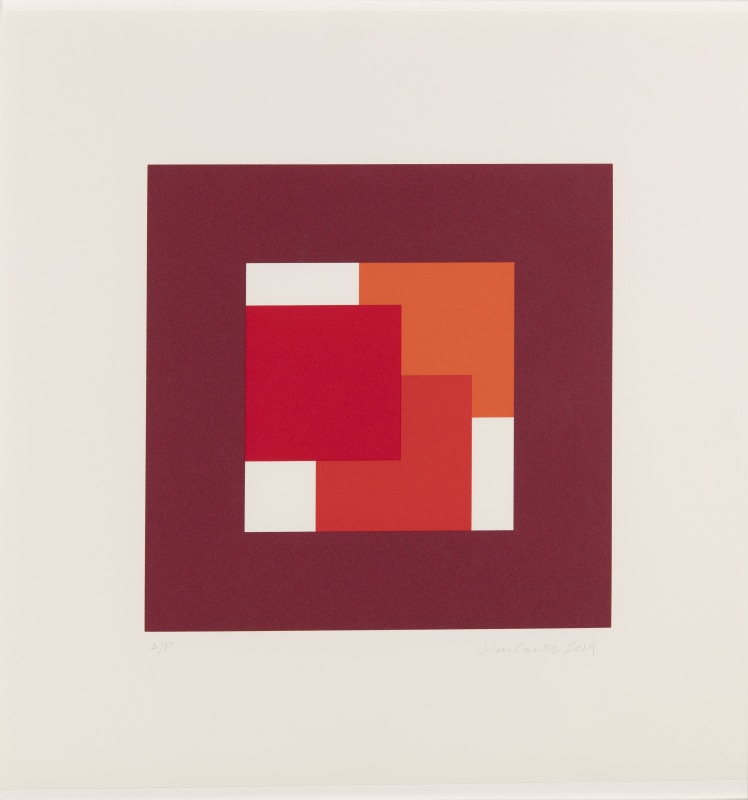 John Carter RAThirds I , 2019Screenprint21 x 21 cm%3Cdiv%20class%3D%22artist%22%3E%3Cspan%20class%3D%22artist%22%3E%3Cstrong%3EJohn%20Carter%20RA%20%3C/strong%3E%3C/span%3E%3C/div%3E%0D%3Cdiv%20class%3D%22title%22%3E%3Cem%3EThirds%20I%20%3C/em%3E%2C%202019%3C/div%3E%0D%3Cdiv%20class%3D%22medium%22%3EScreenprint%20%3C/div%3E%0D%3Cdiv%20class%3D%22dimensions%22%3E21%20x%2021%20cm%3C/div%3E
John Carter RAThirds I , 2019Screenprint21 x 21 cm%3Cdiv%20class%3D%22artist%22%3E%3Cspan%20class%3D%22artist%22%3E%3Cstrong%3EJohn%20Carter%20RA%20%3C/strong%3E%3C/span%3E%3C/div%3E%0D%3Cdiv%20class%3D%22title%22%3E%3Cem%3EThirds%20I%20%3C/em%3E%2C%202019%3C/div%3E%0D%3Cdiv%20class%3D%22medium%22%3EScreenprint%20%3C/div%3E%0D%3Cdiv%20class%3D%22dimensions%22%3E21%20x%2021%20cm%3C/div%3E -
 John Carter RAColumn, Eight Identical Shapes: Study, 2018Acrylic gouache on paper37 x 23.8cm%3Cdiv%20class%3D%22artist%22%3E%3Cspan%20class%3D%22artist%22%3E%3Cstrong%3EJohn%20Carter%20RA%3C/strong%3E%3C/span%3E%3C/div%3E%0D%3Cdiv%20class%3D%22title%22%3E%3Cem%3EColumn%2C%20Eight%20Identical%20Shapes%3A%20Study%3C/em%3E%2C%202018%3C/div%3E%0D%3Cdiv%20class%3D%22medium%22%3EAcrylic%20gouache%20on%20paper%3C/div%3E%0D%3Cdiv%20class%3D%22dimensions%22%3E37%20x%2023.8cm%3C/div%3E
John Carter RAColumn, Eight Identical Shapes: Study, 2018Acrylic gouache on paper37 x 23.8cm%3Cdiv%20class%3D%22artist%22%3E%3Cspan%20class%3D%22artist%22%3E%3Cstrong%3EJohn%20Carter%20RA%3C/strong%3E%3C/span%3E%3C/div%3E%0D%3Cdiv%20class%3D%22title%22%3E%3Cem%3EColumn%2C%20Eight%20Identical%20Shapes%3A%20Study%3C/em%3E%2C%202018%3C/div%3E%0D%3Cdiv%20class%3D%22medium%22%3EAcrylic%20gouache%20on%20paper%3C/div%3E%0D%3Cdiv%20class%3D%22dimensions%22%3E37%20x%2023.8cm%3C/div%3E -
 John Carter RAConjoined Identical Shapes, 2018Aquatint19 x 25 cm (sheet)From the edition of 15 impressionsSigned, dated and numbered%3Cdiv%20class%3D%22artist%22%3E%3Cspan%20class%3D%22artist%22%3E%3Cstrong%3EJohn%20Carter%20RA%3C/strong%3E%3C/span%3E%3C/div%3E%0D%3Cdiv%20class%3D%22title%22%3E%3Cem%3EConjoined%20Identical%20Shapes%3C/em%3E%2C%202018%3C/div%3E%0D%3Cdiv%20class%3D%22signed_and_dated%22%3ESigned%2C%20dated%20and%20numbered%3C/div%3E%0D%3Cdiv%20class%3D%22medium%22%3EAquatint%3C/div%3E%0D%3Cdiv%20class%3D%22dimensions%22%3E19%20x%2025%20cm%20%28sheet%29%3C/div%3E%0D%3Cdiv%20class%3D%22edition_details%22%3EFrom%20the%20edition%20of%2015%20impressions%3C/div%3E
John Carter RAConjoined Identical Shapes, 2018Aquatint19 x 25 cm (sheet)From the edition of 15 impressionsSigned, dated and numbered%3Cdiv%20class%3D%22artist%22%3E%3Cspan%20class%3D%22artist%22%3E%3Cstrong%3EJohn%20Carter%20RA%3C/strong%3E%3C/span%3E%3C/div%3E%0D%3Cdiv%20class%3D%22title%22%3E%3Cem%3EConjoined%20Identical%20Shapes%3C/em%3E%2C%202018%3C/div%3E%0D%3Cdiv%20class%3D%22signed_and_dated%22%3ESigned%2C%20dated%20and%20numbered%3C/div%3E%0D%3Cdiv%20class%3D%22medium%22%3EAquatint%3C/div%3E%0D%3Cdiv%20class%3D%22dimensions%22%3E19%20x%2025%20cm%20%28sheet%29%3C/div%3E%0D%3Cdiv%20class%3D%22edition_details%22%3EFrom%20the%20edition%20of%2015%20impressions%3C/div%3E -
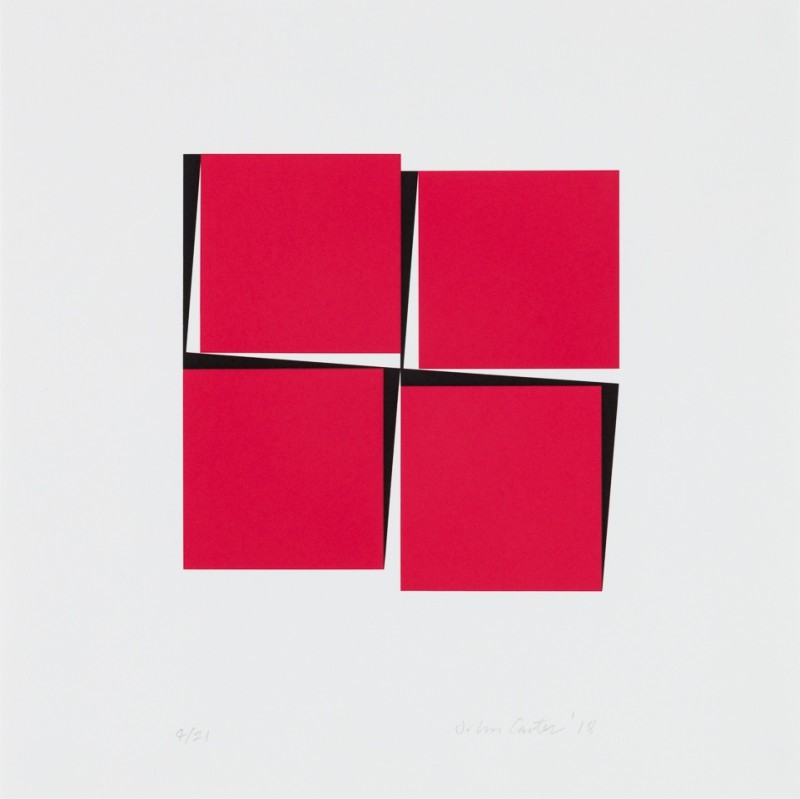 John Carter RADouble Transition I, 2018Screenprint32 x 32 cm (sheet)From the edition of 21 impressionsSigned, dated and numbered%3Cdiv%20class%3D%22artist%22%3E%3Cspan%20class%3D%22artist%22%3E%3Cstrong%3EJohn%20Carter%20RA%3C/strong%3E%3C/span%3E%3C/div%3E%0D%3Cdiv%20class%3D%22title%22%3E%3Cem%3EDouble%20Transition%20I%3C/em%3E%2C%202018%3C/div%3E%0D%3Cdiv%20class%3D%22signed_and_dated%22%3ESigned%2C%20dated%20and%20numbered%3C/div%3E%0D%3Cdiv%20class%3D%22medium%22%3EScreenprint%3C/div%3E%0D%3Cdiv%20class%3D%22dimensions%22%3E32%20x%2032%20cm%20%28sheet%29%3C/div%3E%0D%3Cdiv%20class%3D%22edition_details%22%3EFrom%20the%20edition%20of%2021%20impressions%3C/div%3E
John Carter RADouble Transition I, 2018Screenprint32 x 32 cm (sheet)From the edition of 21 impressionsSigned, dated and numbered%3Cdiv%20class%3D%22artist%22%3E%3Cspan%20class%3D%22artist%22%3E%3Cstrong%3EJohn%20Carter%20RA%3C/strong%3E%3C/span%3E%3C/div%3E%0D%3Cdiv%20class%3D%22title%22%3E%3Cem%3EDouble%20Transition%20I%3C/em%3E%2C%202018%3C/div%3E%0D%3Cdiv%20class%3D%22signed_and_dated%22%3ESigned%2C%20dated%20and%20numbered%3C/div%3E%0D%3Cdiv%20class%3D%22medium%22%3EScreenprint%3C/div%3E%0D%3Cdiv%20class%3D%22dimensions%22%3E32%20x%2032%20cm%20%28sheet%29%3C/div%3E%0D%3Cdiv%20class%3D%22edition_details%22%3EFrom%20the%20edition%20of%2021%20impressions%3C/div%3E -
 John Carter RAIdentical Shapes: Brown, 2018Acrylic on paper29.1 x 41.2cm%3Cdiv%20class%3D%22artist%22%3E%3Cspan%20class%3D%22artist%22%3E%3Cstrong%3EJohn%20Carter%20RA%3C/strong%3E%3C/span%3E%3C/div%3E%0D%3Cdiv%20class%3D%22title%22%3E%3Cem%3EIdentical%20Shapes%3A%20Brown%3C/em%3E%2C%202018%3C/div%3E%0D%3Cdiv%20class%3D%22medium%22%3EAcrylic%20on%20paper%3C/div%3E%0D%3Cdiv%20class%3D%22dimensions%22%3E29.1%20x%2041.2cm%3C/div%3E
John Carter RAIdentical Shapes: Brown, 2018Acrylic on paper29.1 x 41.2cm%3Cdiv%20class%3D%22artist%22%3E%3Cspan%20class%3D%22artist%22%3E%3Cstrong%3EJohn%20Carter%20RA%3C/strong%3E%3C/span%3E%3C/div%3E%0D%3Cdiv%20class%3D%22title%22%3E%3Cem%3EIdentical%20Shapes%3A%20Brown%3C/em%3E%2C%202018%3C/div%3E%0D%3Cdiv%20class%3D%22medium%22%3EAcrylic%20on%20paper%3C/div%3E%0D%3Cdiv%20class%3D%22dimensions%22%3E29.1%20x%2041.2cm%3C/div%3E -
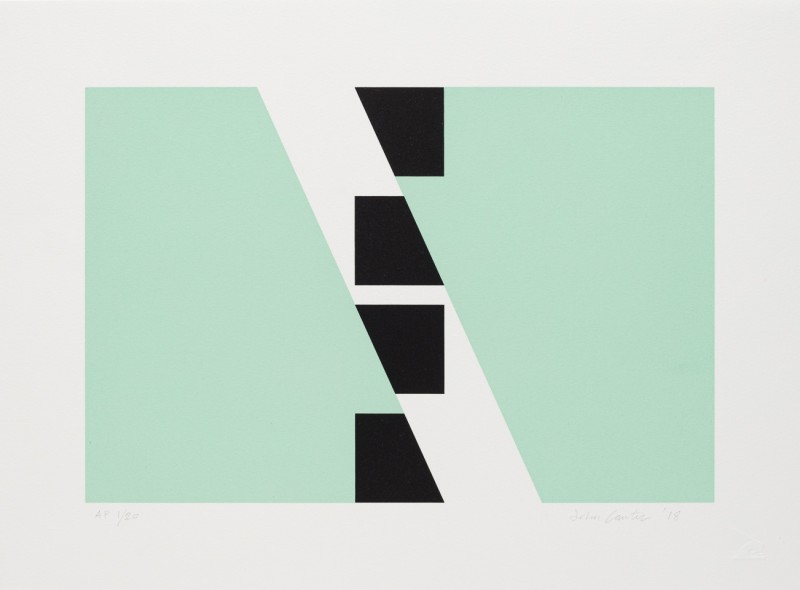 John Carter RAIdentical Shapes: Green, 2018Screenprint29.5 x 40.5 cm (sheet)From the edition of 50 impressionsSigned, dated and numbered%3Cdiv%20class%3D%22artist%22%3E%3Cspan%20class%3D%22artist%22%3E%3Cstrong%3EJohn%20Carter%20RA%3C/strong%3E%3C/span%3E%3C/div%3E%0D%3Cdiv%20class%3D%22title%22%3E%3Cem%3EIdentical%20Shapes%3A%20Green%3C/em%3E%2C%202018%3C/div%3E%0D%3Cdiv%20class%3D%22signed_and_dated%22%3ESigned%2C%20dated%20and%20numbered%3C/div%3E%0D%3Cdiv%20class%3D%22medium%22%3EScreenprint%3C/div%3E%0D%3Cdiv%20class%3D%22dimensions%22%3E29.5%20x%2040.5%20cm%20%28sheet%29%3C/div%3E%0D%3Cdiv%20class%3D%22edition_details%22%3EFrom%20the%20edition%20of%2050%20impressions%3C/div%3E
John Carter RAIdentical Shapes: Green, 2018Screenprint29.5 x 40.5 cm (sheet)From the edition of 50 impressionsSigned, dated and numbered%3Cdiv%20class%3D%22artist%22%3E%3Cspan%20class%3D%22artist%22%3E%3Cstrong%3EJohn%20Carter%20RA%3C/strong%3E%3C/span%3E%3C/div%3E%0D%3Cdiv%20class%3D%22title%22%3E%3Cem%3EIdentical%20Shapes%3A%20Green%3C/em%3E%2C%202018%3C/div%3E%0D%3Cdiv%20class%3D%22signed_and_dated%22%3ESigned%2C%20dated%20and%20numbered%3C/div%3E%0D%3Cdiv%20class%3D%22medium%22%3EScreenprint%3C/div%3E%0D%3Cdiv%20class%3D%22dimensions%22%3E29.5%20x%2040.5%20cm%20%28sheet%29%3C/div%3E%0D%3Cdiv%20class%3D%22edition_details%22%3EFrom%20the%20edition%20of%2050%20impressions%3C/div%3E -
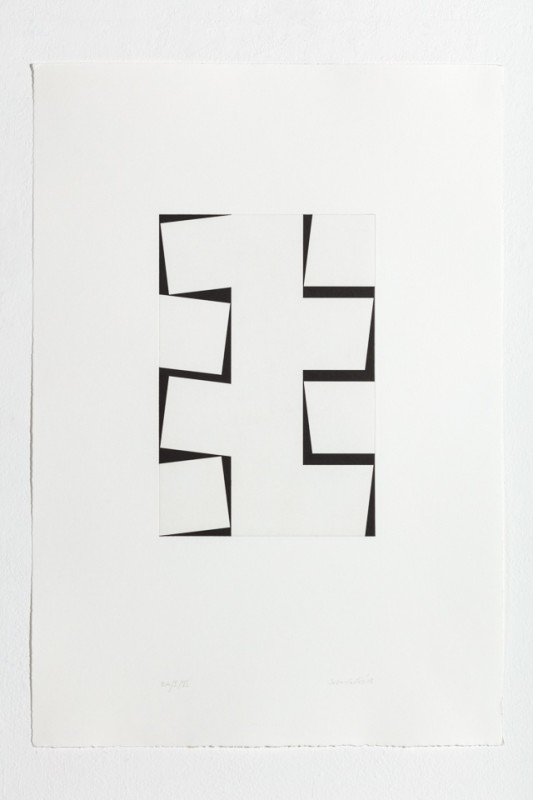 John Carter RAOne Column: Eight Identical Shapes, 2018Aquatint53 x 37 cm (sheet)From the edition of 15 impressionsSigned, dated and numbered%3Cdiv%20class%3D%22artist%22%3E%3Cspan%20class%3D%22artist%22%3E%3Cstrong%3EJohn%20Carter%20RA%3C/strong%3E%3C/span%3E%3C/div%3E%0D%3Cdiv%20class%3D%22title%22%3E%3Cem%3EOne%20Column%3A%20Eight%20Identical%20Shapes%3C/em%3E%2C%202018%3C/div%3E%0D%3Cdiv%20class%3D%22signed_and_dated%22%3ESigned%2C%20dated%20and%20numbered%3C/div%3E%0D%3Cdiv%20class%3D%22medium%22%3EAquatint%3C/div%3E%0D%3Cdiv%20class%3D%22dimensions%22%3E53%20x%2037%20cm%20%28sheet%29%3C/div%3E%0D%3Cdiv%20class%3D%22edition_details%22%3EFrom%20the%20edition%20of%2015%20impressions%3C/div%3E
John Carter RAOne Column: Eight Identical Shapes, 2018Aquatint53 x 37 cm (sheet)From the edition of 15 impressionsSigned, dated and numbered%3Cdiv%20class%3D%22artist%22%3E%3Cspan%20class%3D%22artist%22%3E%3Cstrong%3EJohn%20Carter%20RA%3C/strong%3E%3C/span%3E%3C/div%3E%0D%3Cdiv%20class%3D%22title%22%3E%3Cem%3EOne%20Column%3A%20Eight%20Identical%20Shapes%3C/em%3E%2C%202018%3C/div%3E%0D%3Cdiv%20class%3D%22signed_and_dated%22%3ESigned%2C%20dated%20and%20numbered%3C/div%3E%0D%3Cdiv%20class%3D%22medium%22%3EAquatint%3C/div%3E%0D%3Cdiv%20class%3D%22dimensions%22%3E53%20x%2037%20cm%20%28sheet%29%3C/div%3E%0D%3Cdiv%20class%3D%22edition_details%22%3EFrom%20the%20edition%20of%2015%20impressions%3C/div%3E -
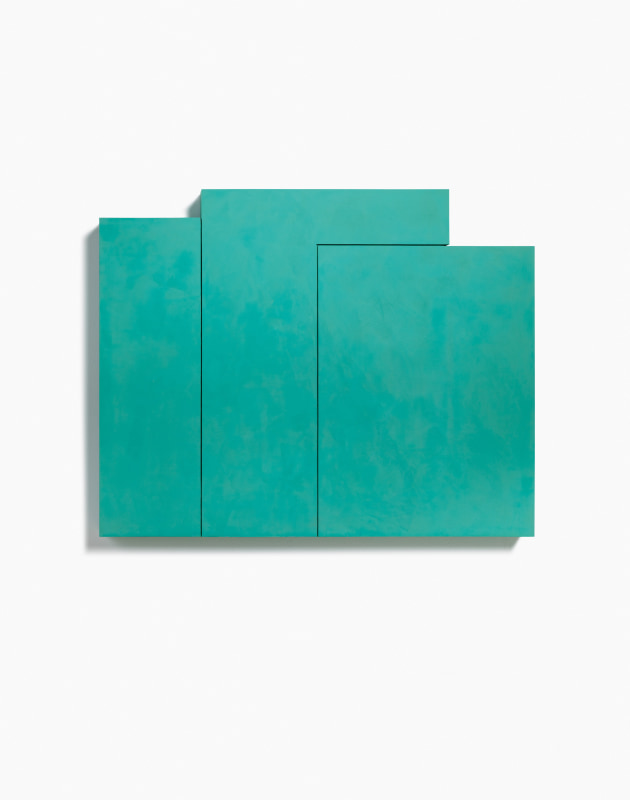 John Carter RAThree Rectangles, 2017/22Acrylic with marble powder on plywood60.8 x 76 x 5.5 cm%3Cdiv%20class%3D%22artist%22%3E%3Cspan%20class%3D%22artist%22%3E%3Cstrong%3EJohn%20Carter%20RA%20%3C/strong%3E%3C/span%3E%3C/div%3E%0D%3Cdiv%20class%3D%22title%22%3E%3Cem%3EThree%20Rectangles%3C/em%3E%2C%202017/22%3C/div%3E%0D%3Cdiv%20class%3D%22medium%22%3EAcrylic%20with%20marble%20powder%20on%20plywood%3C/div%3E%0D%3Cdiv%20class%3D%22dimensions%22%3E60.8%20x%2076%20x%205.5%20cm%3C/div%3E
John Carter RAThree Rectangles, 2017/22Acrylic with marble powder on plywood60.8 x 76 x 5.5 cm%3Cdiv%20class%3D%22artist%22%3E%3Cspan%20class%3D%22artist%22%3E%3Cstrong%3EJohn%20Carter%20RA%20%3C/strong%3E%3C/span%3E%3C/div%3E%0D%3Cdiv%20class%3D%22title%22%3E%3Cem%3EThree%20Rectangles%3C/em%3E%2C%202017/22%3C/div%3E%0D%3Cdiv%20class%3D%22medium%22%3EAcrylic%20with%20marble%20powder%20on%20plywood%3C/div%3E%0D%3Cdiv%20class%3D%22dimensions%22%3E60.8%20x%2076%20x%205.5%20cm%3C/div%3E -
 John Carter RAAbutting Squares, Greys, Halved Areas, 2017Acrylic with marble powder on plywood16.7 x 21.2 cmSigned, dated and titled verso%3Cdiv%20class%3D%22artist%22%3E%3Cspan%20class%3D%22artist%22%3E%3Cstrong%3EJohn%20Carter%20RA%3C/strong%3E%3C/span%3E%3C/div%3E%0D%3Cdiv%20class%3D%22title%22%3E%3Cem%3EAbutting%20Squares%2C%20Greys%2C%20Halved%20Areas%3C/em%3E%2C%202017%3C/div%3E%0D%3Cdiv%20class%3D%22signed_and_dated%22%3ESigned%2C%20dated%20and%20titled%20verso%3C/div%3E%0D%3Cdiv%20class%3D%22medium%22%3EAcrylic%20with%20marble%20powder%20on%20plywood%3C/div%3E%0D%3Cdiv%20class%3D%22dimensions%22%3E16.7%20x%2021.2%20cm%3C/div%3E
John Carter RAAbutting Squares, Greys, Halved Areas, 2017Acrylic with marble powder on plywood16.7 x 21.2 cmSigned, dated and titled verso%3Cdiv%20class%3D%22artist%22%3E%3Cspan%20class%3D%22artist%22%3E%3Cstrong%3EJohn%20Carter%20RA%3C/strong%3E%3C/span%3E%3C/div%3E%0D%3Cdiv%20class%3D%22title%22%3E%3Cem%3EAbutting%20Squares%2C%20Greys%2C%20Halved%20Areas%3C/em%3E%2C%202017%3C/div%3E%0D%3Cdiv%20class%3D%22signed_and_dated%22%3ESigned%2C%20dated%20and%20titled%20verso%3C/div%3E%0D%3Cdiv%20class%3D%22medium%22%3EAcrylic%20with%20marble%20powder%20on%20plywood%3C/div%3E%0D%3Cdiv%20class%3D%22dimensions%22%3E16.7%20x%2021.2%20cm%3C/div%3E -
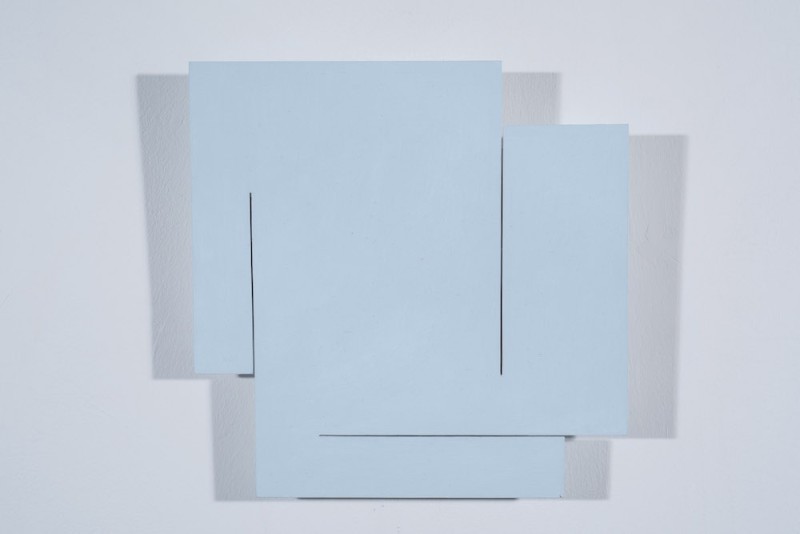 John Carter RAAgglomeration: Three Squares, 2016Acrylic on plywood18 x 18cm%3Cdiv%20class%3D%22artist%22%3E%3Cspan%20class%3D%22artist%22%3E%3Cstrong%3EJohn%20Carter%20RA%3C/strong%3E%3C/span%3E%3C/div%3E%0D%3Cdiv%20class%3D%22title%22%3E%3Cem%3EAgglomeration%3A%20Three%20Squares%3C/em%3E%2C%202016%3C/div%3E%0D%3Cdiv%20class%3D%22medium%22%3EAcrylic%20on%20plywood%3C/div%3E%0D%3Cdiv%20class%3D%22dimensions%22%3E18%20x%2018cm%3C/div%3E
John Carter RAAgglomeration: Three Squares, 2016Acrylic on plywood18 x 18cm%3Cdiv%20class%3D%22artist%22%3E%3Cspan%20class%3D%22artist%22%3E%3Cstrong%3EJohn%20Carter%20RA%3C/strong%3E%3C/span%3E%3C/div%3E%0D%3Cdiv%20class%3D%22title%22%3E%3Cem%3EAgglomeration%3A%20Three%20Squares%3C/em%3E%2C%202016%3C/div%3E%0D%3Cdiv%20class%3D%22medium%22%3EAcrylic%20on%20plywood%3C/div%3E%0D%3Cdiv%20class%3D%22dimensions%22%3E18%20x%2018cm%3C/div%3E -
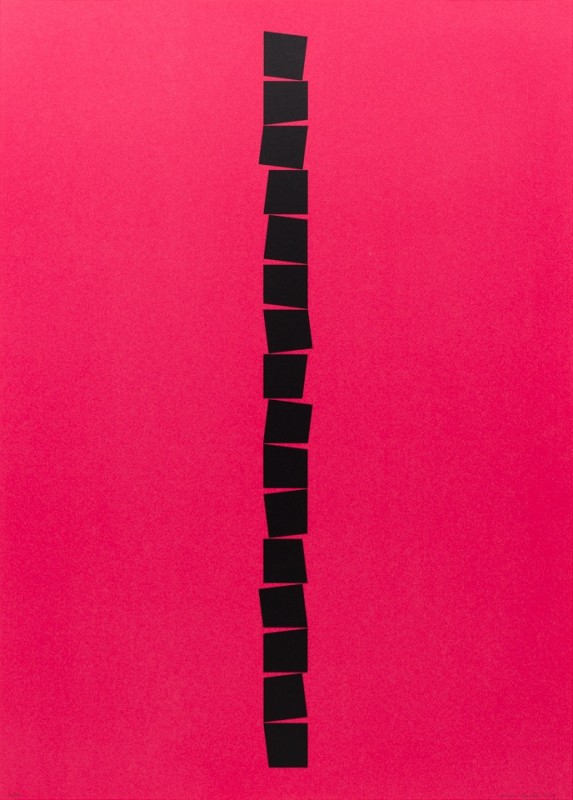 John Carter RAIdentical Shapes: 16 Orientations, 2016Screenprint71 x 51 cm (sheet)From the edition of 40 impressionsSigned, dated and numbered%3Cdiv%20class%3D%22artist%22%3E%3Cspan%20class%3D%22artist%22%3E%3Cstrong%3EJohn%20Carter%20RA%3C/strong%3E%3C/span%3E%3C/div%3E%0D%3Cdiv%20class%3D%22title%22%3E%3Cem%3EIdentical%20Shapes%3A%2016%20Orientations%3C/em%3E%2C%202016%3C/div%3E%0D%3Cdiv%20class%3D%22signed_and_dated%22%3ESigned%2C%20dated%20and%20numbered%3C/div%3E%0D%3Cdiv%20class%3D%22medium%22%3EScreenprint%3C/div%3E%0D%3Cdiv%20class%3D%22dimensions%22%3E71%20x%2051%20cm%20%28sheet%29%3C/div%3E%0D%3Cdiv%20class%3D%22edition_details%22%3EFrom%20the%20edition%20of%2040%20impressions%3C/div%3E
John Carter RAIdentical Shapes: 16 Orientations, 2016Screenprint71 x 51 cm (sheet)From the edition of 40 impressionsSigned, dated and numbered%3Cdiv%20class%3D%22artist%22%3E%3Cspan%20class%3D%22artist%22%3E%3Cstrong%3EJohn%20Carter%20RA%3C/strong%3E%3C/span%3E%3C/div%3E%0D%3Cdiv%20class%3D%22title%22%3E%3Cem%3EIdentical%20Shapes%3A%2016%20Orientations%3C/em%3E%2C%202016%3C/div%3E%0D%3Cdiv%20class%3D%22signed_and_dated%22%3ESigned%2C%20dated%20and%20numbered%3C/div%3E%0D%3Cdiv%20class%3D%22medium%22%3EScreenprint%3C/div%3E%0D%3Cdiv%20class%3D%22dimensions%22%3E71%20x%2051%20cm%20%28sheet%29%3C/div%3E%0D%3Cdiv%20class%3D%22edition_details%22%3EFrom%20the%20edition%20of%2040%20impressions%3C/div%3E -
 John Carter RAIdentical Shapes: Mirror Pairs, 2016Screenprint41 x 35.5 cm (sheet)From the edition of 40 impressionsSigned, dated, titled and numbered%3Cdiv%20class%3D%22artist%22%3E%3Cspan%20class%3D%22artist%22%3E%3Cstrong%3EJohn%20Carter%20RA%3C/strong%3E%3C/span%3E%3C/div%3E%0D%3Cdiv%20class%3D%22title%22%3E%3Cem%3EIdentical%20Shapes%3A%20Mirror%20Pairs%3C/em%3E%2C%202016%3C/div%3E%0D%3Cdiv%20class%3D%22signed_and_dated%22%3ESigned%2C%20dated%2C%20titled%20and%20numbered%3C/div%3E%0D%3Cdiv%20class%3D%22medium%22%3EScreenprint%3C/div%3E%0D%3Cdiv%20class%3D%22dimensions%22%3E41%20x%2035.5%20cm%20%28sheet%29%3C/div%3E%0D%3Cdiv%20class%3D%22edition_details%22%3EFrom%20the%20edition%20of%2040%20impressions%3C/div%3E
John Carter RAIdentical Shapes: Mirror Pairs, 2016Screenprint41 x 35.5 cm (sheet)From the edition of 40 impressionsSigned, dated, titled and numbered%3Cdiv%20class%3D%22artist%22%3E%3Cspan%20class%3D%22artist%22%3E%3Cstrong%3EJohn%20Carter%20RA%3C/strong%3E%3C/span%3E%3C/div%3E%0D%3Cdiv%20class%3D%22title%22%3E%3Cem%3EIdentical%20Shapes%3A%20Mirror%20Pairs%3C/em%3E%2C%202016%3C/div%3E%0D%3Cdiv%20class%3D%22signed_and_dated%22%3ESigned%2C%20dated%2C%20titled%20and%20numbered%3C/div%3E%0D%3Cdiv%20class%3D%22medium%22%3EScreenprint%3C/div%3E%0D%3Cdiv%20class%3D%22dimensions%22%3E41%20x%2035.5%20cm%20%28sheet%29%3C/div%3E%0D%3Cdiv%20class%3D%22edition_details%22%3EFrom%20the%20edition%20of%2040%20impressions%3C/div%3E -
 John Carter RAPierced Red Shape, 2015Acrylic with marble powder on plywood145 x 119 x 9 cmSigned, dated and titled verso%3Cdiv%20class%3D%22artist%22%3E%3Cspan%20class%3D%22artist%22%3E%3Cstrong%3EJohn%20Carter%20RA%20%3C/strong%3E%3C/span%3E%3C/div%3E%0D%3Cdiv%20class%3D%22title%22%3E%3Cem%3EPierced%20Red%20Shape%3C/em%3E%2C%202015%3C/div%3E%0D%3Cdiv%20class%3D%22signed_and_dated%22%3ESigned%2C%20dated%20and%20titled%20verso%3C/div%3E%0D%3Cdiv%20class%3D%22medium%22%3EAcrylic%20with%20marble%20powder%20on%20plywood%3C/div%3E%0D%3Cdiv%20class%3D%22dimensions%22%3E145%20x%20119%20x%209%20cm%3C/div%3E
John Carter RAPierced Red Shape, 2015Acrylic with marble powder on plywood145 x 119 x 9 cmSigned, dated and titled verso%3Cdiv%20class%3D%22artist%22%3E%3Cspan%20class%3D%22artist%22%3E%3Cstrong%3EJohn%20Carter%20RA%20%3C/strong%3E%3C/span%3E%3C/div%3E%0D%3Cdiv%20class%3D%22title%22%3E%3Cem%3EPierced%20Red%20Shape%3C/em%3E%2C%202015%3C/div%3E%0D%3Cdiv%20class%3D%22signed_and_dated%22%3ESigned%2C%20dated%20and%20titled%20verso%3C/div%3E%0D%3Cdiv%20class%3D%22medium%22%3EAcrylic%20with%20marble%20powder%20on%20plywood%3C/div%3E%0D%3Cdiv%20class%3D%22dimensions%22%3E145%20x%20119%20x%209%20cm%3C/div%3E -
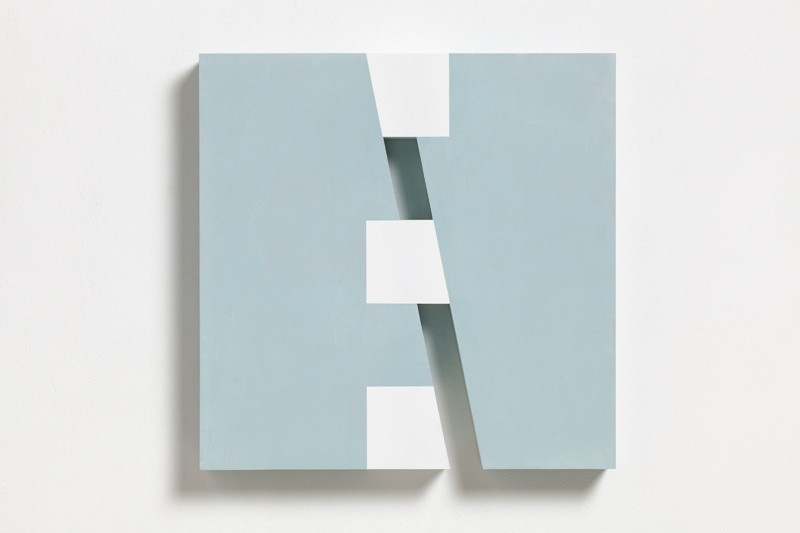 John Carter RAThree Identical Shapes, 2015Acrylic with marble powder on plywood50 x 50 x 7 cmSigned, dated and titled verso%3Cdiv%20class%3D%22artist%22%3E%3Cspan%20class%3D%22artist%22%3E%3Cstrong%3EJohn%20Carter%20RA%3C/strong%3E%3C/span%3E%3C/div%3E%0D%3Cdiv%20class%3D%22title%22%3E%3Cem%3EThree%20Identical%20Shapes%3C/em%3E%2C%202015%3C/div%3E%0D%3Cdiv%20class%3D%22signed_and_dated%22%3ESigned%2C%20dated%20and%20titled%20verso%3C/div%3E%0D%3Cdiv%20class%3D%22medium%22%3EAcrylic%20with%20marble%20powder%20on%20plywood%3C/div%3E%0D%3Cdiv%20class%3D%22dimensions%22%3E50%20x%2050%20x%207%20cm%3C/div%3E
John Carter RAThree Identical Shapes, 2015Acrylic with marble powder on plywood50 x 50 x 7 cmSigned, dated and titled verso%3Cdiv%20class%3D%22artist%22%3E%3Cspan%20class%3D%22artist%22%3E%3Cstrong%3EJohn%20Carter%20RA%3C/strong%3E%3C/span%3E%3C/div%3E%0D%3Cdiv%20class%3D%22title%22%3E%3Cem%3EThree%20Identical%20Shapes%3C/em%3E%2C%202015%3C/div%3E%0D%3Cdiv%20class%3D%22signed_and_dated%22%3ESigned%2C%20dated%20and%20titled%20verso%3C/div%3E%0D%3Cdiv%20class%3D%22medium%22%3EAcrylic%20with%20marble%20powder%20on%20plywood%3C/div%3E%0D%3Cdiv%20class%3D%22dimensions%22%3E50%20x%2050%20x%207%20cm%3C/div%3E -
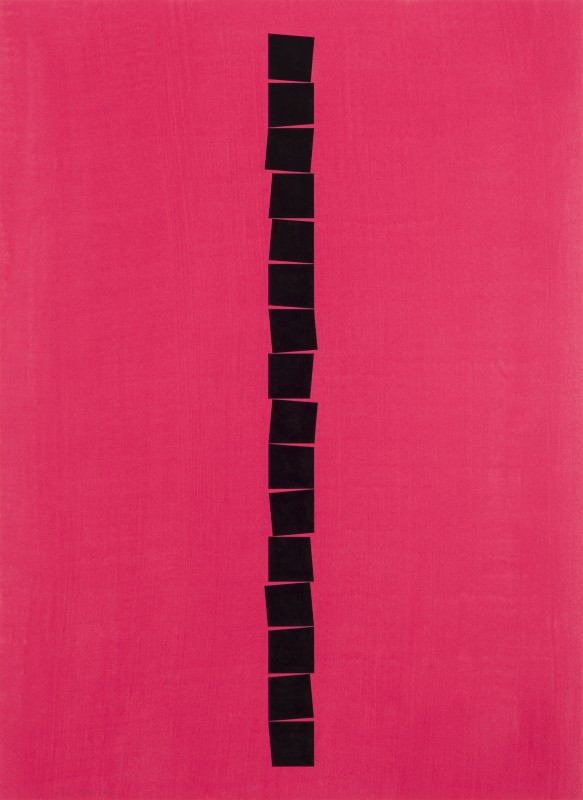 John Carter RAIdentical Shapes Cascade, Coral Ground, 2014Acrylic on paper71 x 52 cmSigned and dated lower left%3Cdiv%20class%3D%22artist%22%3E%3Cspan%20class%3D%22artist%22%3E%3Cstrong%3EJohn%20Carter%20RA%3C/strong%3E%3C/span%3E%3C/div%3E%0D%3Cdiv%20class%3D%22title%22%3E%3Cem%3EIdentical%20Shapes%20Cascade%2C%20Coral%20Ground%3C/em%3E%2C%202014%3C/div%3E%0D%3Cdiv%20class%3D%22signed_and_dated%22%3ESigned%20and%20dated%20lower%20left%3C/div%3E%0D%3Cdiv%20class%3D%22medium%22%3EAcrylic%20on%20paper%3C/div%3E%0D%3Cdiv%20class%3D%22dimensions%22%3E71%20x%2052%20cm%3C/div%3E
John Carter RAIdentical Shapes Cascade, Coral Ground, 2014Acrylic on paper71 x 52 cmSigned and dated lower left%3Cdiv%20class%3D%22artist%22%3E%3Cspan%20class%3D%22artist%22%3E%3Cstrong%3EJohn%20Carter%20RA%3C/strong%3E%3C/span%3E%3C/div%3E%0D%3Cdiv%20class%3D%22title%22%3E%3Cem%3EIdentical%20Shapes%20Cascade%2C%20Coral%20Ground%3C/em%3E%2C%202014%3C/div%3E%0D%3Cdiv%20class%3D%22signed_and_dated%22%3ESigned%20and%20dated%20lower%20left%3C/div%3E%0D%3Cdiv%20class%3D%22medium%22%3EAcrylic%20on%20paper%3C/div%3E%0D%3Cdiv%20class%3D%22dimensions%22%3E71%20x%2052%20cm%3C/div%3E -
 John Carter RAIdentical Shapes: Archipelago, 2014Acrylic on plywood106 x 106 x 8 cmSigned, dated and titled verso%3Cdiv%20class%3D%22artist%22%3E%3Cspan%20class%3D%22artist%22%3E%3Cstrong%3EJohn%20Carter%20RA%3C/strong%3E%3C/span%3E%3C/div%3E%0D%3Cdiv%20class%3D%22title%22%3E%3Cem%3EIdentical%20Shapes%3A%20Archipelago%3C/em%3E%2C%202014%3C/div%3E%0D%3Cdiv%20class%3D%22signed_and_dated%22%3ESigned%2C%20dated%20and%20titled%20verso%3C/div%3E%0D%3Cdiv%20class%3D%22medium%22%3EAcrylic%20on%20plywood%3C/div%3E%0D%3Cdiv%20class%3D%22dimensions%22%3E106%20x%20106%20x%208%20cm%3C/div%3E
John Carter RAIdentical Shapes: Archipelago, 2014Acrylic on plywood106 x 106 x 8 cmSigned, dated and titled verso%3Cdiv%20class%3D%22artist%22%3E%3Cspan%20class%3D%22artist%22%3E%3Cstrong%3EJohn%20Carter%20RA%3C/strong%3E%3C/span%3E%3C/div%3E%0D%3Cdiv%20class%3D%22title%22%3E%3Cem%3EIdentical%20Shapes%3A%20Archipelago%3C/em%3E%2C%202014%3C/div%3E%0D%3Cdiv%20class%3D%22signed_and_dated%22%3ESigned%2C%20dated%20and%20titled%20verso%3C/div%3E%0D%3Cdiv%20class%3D%22medium%22%3EAcrylic%20on%20plywood%3C/div%3E%0D%3Cdiv%20class%3D%22dimensions%22%3E106%20x%20106%20x%208%20cm%3C/div%3E -
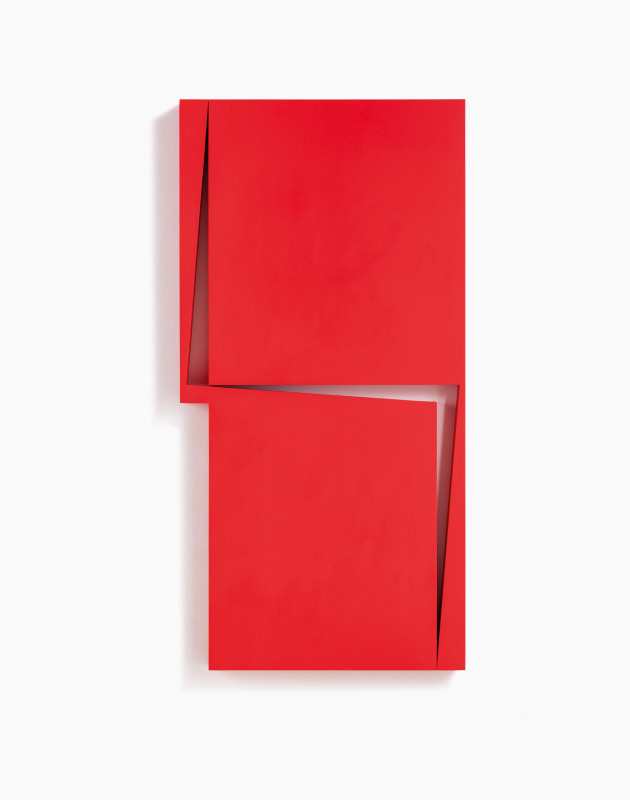 John Carter RATransition in Red , 2014Acrylic on plywood122 x 61 x 6.3 cm%3Cdiv%20class%3D%22artist%22%3E%3Cspan%20class%3D%22artist%22%3E%3Cstrong%3EJohn%20Carter%20RA%3C/strong%3E%3C/span%3E%3C/div%3E%0D%3Cdiv%20class%3D%22title%22%3E%3Cem%3ETransition%20in%20Red%20%3C/em%3E%2C%202014%3C/div%3E%0D%3Cdiv%20class%3D%22medium%22%3EAcrylic%20on%20plywood%20%3C/div%3E%0D%3Cdiv%20class%3D%22dimensions%22%3E122%20x%2061%20x%206.3%20cm%3C/div%3E
John Carter RATransition in Red , 2014Acrylic on plywood122 x 61 x 6.3 cm%3Cdiv%20class%3D%22artist%22%3E%3Cspan%20class%3D%22artist%22%3E%3Cstrong%3EJohn%20Carter%20RA%3C/strong%3E%3C/span%3E%3C/div%3E%0D%3Cdiv%20class%3D%22title%22%3E%3Cem%3ETransition%20in%20Red%20%3C/em%3E%2C%202014%3C/div%3E%0D%3Cdiv%20class%3D%22medium%22%3EAcrylic%20on%20plywood%20%3C/div%3E%0D%3Cdiv%20class%3D%22dimensions%22%3E122%20x%2061%20x%206.3%20cm%3C/div%3E -
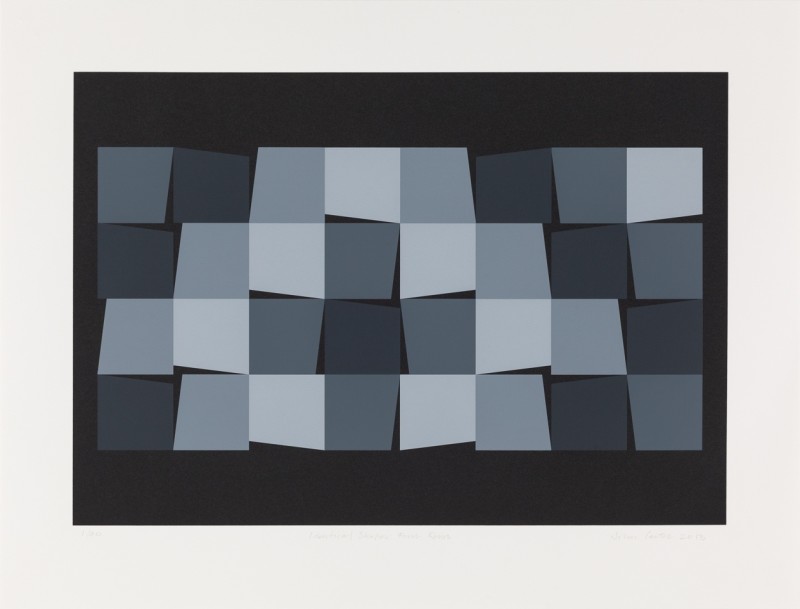 John Carter RAIdentical Shapes: Four Rows, 2013Screenprint49 x 66 cm (sheet)From the edition of 40 impressionsSigned, dated, titled and numbered%3Cdiv%20class%3D%22artist%22%3E%3Cspan%20class%3D%22artist%22%3E%3Cstrong%3EJohn%20Carter%20RA%3C/strong%3E%3C/span%3E%3C/div%3E%0D%3Cdiv%20class%3D%22title%22%3E%3Cem%3EIdentical%20Shapes%3A%20Four%20Rows%3C/em%3E%2C%202013%3C/div%3E%0D%3Cdiv%20class%3D%22signed_and_dated%22%3ESigned%2C%20dated%2C%20titled%20and%20numbered%3C/div%3E%0D%3Cdiv%20class%3D%22medium%22%3EScreenprint%3C/div%3E%0D%3Cdiv%20class%3D%22dimensions%22%3E49%20x%2066%20cm%20%28sheet%29%3C/div%3E%0D%3Cdiv%20class%3D%22edition_details%22%3EFrom%20the%20edition%20of%2040%20impressions%20%3C/div%3E
John Carter RAIdentical Shapes: Four Rows, 2013Screenprint49 x 66 cm (sheet)From the edition of 40 impressionsSigned, dated, titled and numbered%3Cdiv%20class%3D%22artist%22%3E%3Cspan%20class%3D%22artist%22%3E%3Cstrong%3EJohn%20Carter%20RA%3C/strong%3E%3C/span%3E%3C/div%3E%0D%3Cdiv%20class%3D%22title%22%3E%3Cem%3EIdentical%20Shapes%3A%20Four%20Rows%3C/em%3E%2C%202013%3C/div%3E%0D%3Cdiv%20class%3D%22signed_and_dated%22%3ESigned%2C%20dated%2C%20titled%20and%20numbered%3C/div%3E%0D%3Cdiv%20class%3D%22medium%22%3EScreenprint%3C/div%3E%0D%3Cdiv%20class%3D%22dimensions%22%3E49%20x%2066%20cm%20%28sheet%29%3C/div%3E%0D%3Cdiv%20class%3D%22edition_details%22%3EFrom%20the%20edition%20of%2040%20impressions%20%3C/div%3E -
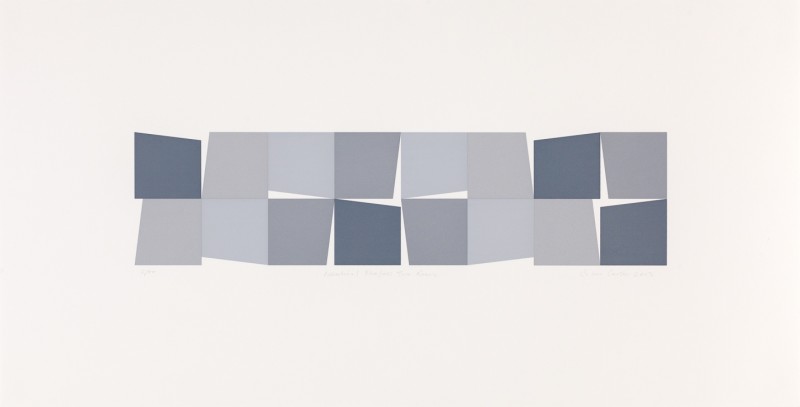 John Carter RAIdentical Shapes: Two Rows, 2013Screenprint44 x 81 cm (sheet)From the edition of 40 impressionsSigned, dated, titled and numbered%3Cdiv%20class%3D%22artist%22%3E%3Cspan%20class%3D%22artist%22%3E%3Cstrong%3EJohn%20Carter%20RA%3C/strong%3E%3C/span%3E%3C/div%3E%0D%3Cdiv%20class%3D%22title%22%3E%3Cem%3EIdentical%20Shapes%3A%20Two%20Rows%3C/em%3E%2C%202013%3C/div%3E%0D%3Cdiv%20class%3D%22signed_and_dated%22%3ESigned%2C%20dated%2C%20titled%20and%20numbered%3C/div%3E%0D%3Cdiv%20class%3D%22medium%22%3EScreenprint%3C/div%3E%0D%3Cdiv%20class%3D%22dimensions%22%3E44%20x%2081%20cm%20%28sheet%29%3C/div%3E%0D%3Cdiv%20class%3D%22edition_details%22%3EFrom%20the%20edition%20of%2040%20impressions%3C/div%3E
John Carter RAIdentical Shapes: Two Rows, 2013Screenprint44 x 81 cm (sheet)From the edition of 40 impressionsSigned, dated, titled and numbered%3Cdiv%20class%3D%22artist%22%3E%3Cspan%20class%3D%22artist%22%3E%3Cstrong%3EJohn%20Carter%20RA%3C/strong%3E%3C/span%3E%3C/div%3E%0D%3Cdiv%20class%3D%22title%22%3E%3Cem%3EIdentical%20Shapes%3A%20Two%20Rows%3C/em%3E%2C%202013%3C/div%3E%0D%3Cdiv%20class%3D%22signed_and_dated%22%3ESigned%2C%20dated%2C%20titled%20and%20numbered%3C/div%3E%0D%3Cdiv%20class%3D%22medium%22%3EScreenprint%3C/div%3E%0D%3Cdiv%20class%3D%22dimensions%22%3E44%20x%2081%20cm%20%28sheet%29%3C/div%3E%0D%3Cdiv%20class%3D%22edition_details%22%3EFrom%20the%20edition%20of%2040%20impressions%3C/div%3E -
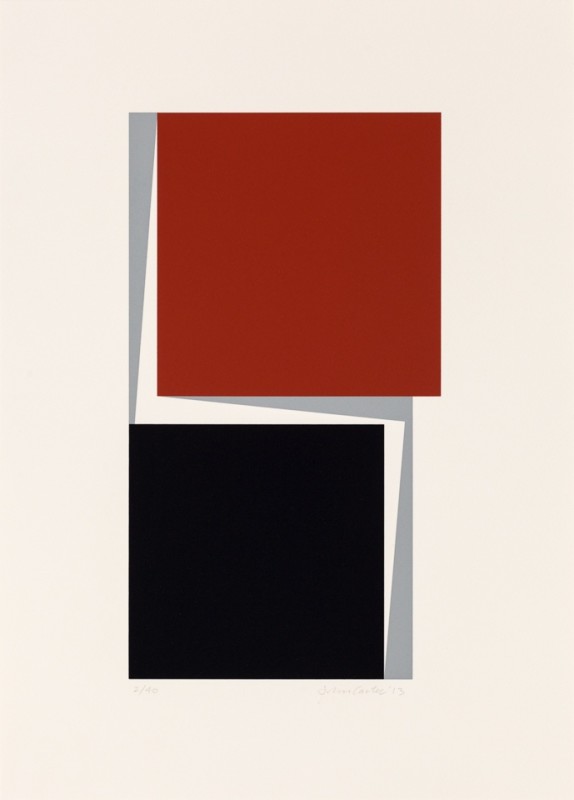 John Carter RATransition, 2013Screenprint43 x 30 cm (sheet)From the edition of 40 impressionsSigned, dated and numbered%3Cdiv%20class%3D%22artist%22%3E%3Cspan%20class%3D%22artist%22%3E%3Cstrong%3EJohn%20Carter%20RA%3C/strong%3E%3C/span%3E%3C/div%3E%0D%3Cdiv%20class%3D%22title%22%3E%3Cem%3ETransition%3C/em%3E%2C%202013%3C/div%3E%0D%3Cdiv%20class%3D%22signed_and_dated%22%3ESigned%2C%20dated%20and%20numbered%3C/div%3E%0D%3Cdiv%20class%3D%22medium%22%3EScreenprint%3C/div%3E%0D%3Cdiv%20class%3D%22dimensions%22%3E43%20x%2030%20cm%20%28sheet%29%3C/div%3E%0D%3Cdiv%20class%3D%22edition_details%22%3EFrom%20the%20edition%20of%2040%20impressions%3C/div%3E
John Carter RATransition, 2013Screenprint43 x 30 cm (sheet)From the edition of 40 impressionsSigned, dated and numbered%3Cdiv%20class%3D%22artist%22%3E%3Cspan%20class%3D%22artist%22%3E%3Cstrong%3EJohn%20Carter%20RA%3C/strong%3E%3C/span%3E%3C/div%3E%0D%3Cdiv%20class%3D%22title%22%3E%3Cem%3ETransition%3C/em%3E%2C%202013%3C/div%3E%0D%3Cdiv%20class%3D%22signed_and_dated%22%3ESigned%2C%20dated%20and%20numbered%3C/div%3E%0D%3Cdiv%20class%3D%22medium%22%3EScreenprint%3C/div%3E%0D%3Cdiv%20class%3D%22dimensions%22%3E43%20x%2030%20cm%20%28sheet%29%3C/div%3E%0D%3Cdiv%20class%3D%22edition_details%22%3EFrom%20the%20edition%20of%2040%20impressions%3C/div%3E -
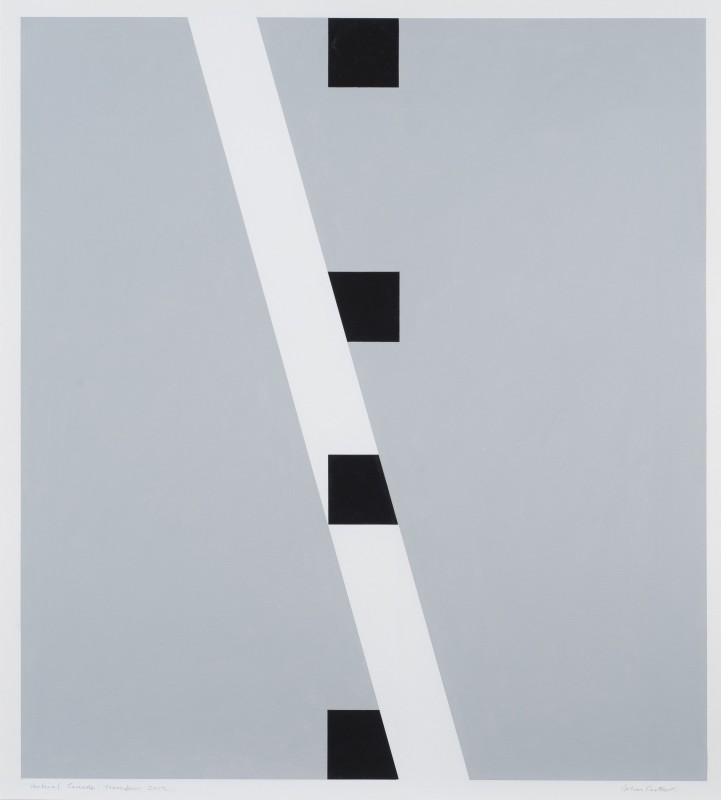 John Carter RAVertical Cascade: Transfer, 2013Gouache on paper58 x 50 cmSigned lower right; titled and dated lower left%3Cdiv%20class%3D%22artist%22%3E%3Cspan%20class%3D%22artist%22%3E%3Cstrong%3EJohn%20Carter%20RA%3C/strong%3E%3C/span%3E%3C/div%3E%0D%3Cdiv%20class%3D%22title%22%3E%3Cem%3EVertical%20Cascade%3A%20Transfer%3C/em%3E%2C%202013%3C/div%3E%0D%3Cdiv%20class%3D%22signed_and_dated%22%3ESigned%20lower%20right%3B%20titled%20and%20dated%20lower%20left%3C/div%3E%0D%3Cdiv%20class%3D%22medium%22%3EGouache%20on%20paper%3C/div%3E%0D%3Cdiv%20class%3D%22dimensions%22%3E58%20x%2050%20cm%3C/div%3E
John Carter RAVertical Cascade: Transfer, 2013Gouache on paper58 x 50 cmSigned lower right; titled and dated lower left%3Cdiv%20class%3D%22artist%22%3E%3Cspan%20class%3D%22artist%22%3E%3Cstrong%3EJohn%20Carter%20RA%3C/strong%3E%3C/span%3E%3C/div%3E%0D%3Cdiv%20class%3D%22title%22%3E%3Cem%3EVertical%20Cascade%3A%20Transfer%3C/em%3E%2C%202013%3C/div%3E%0D%3Cdiv%20class%3D%22signed_and_dated%22%3ESigned%20lower%20right%3B%20titled%20and%20dated%20lower%20left%3C/div%3E%0D%3Cdiv%20class%3D%22medium%22%3EGouache%20on%20paper%3C/div%3E%0D%3Cdiv%20class%3D%22dimensions%22%3E58%20x%2050%20cm%3C/div%3E -
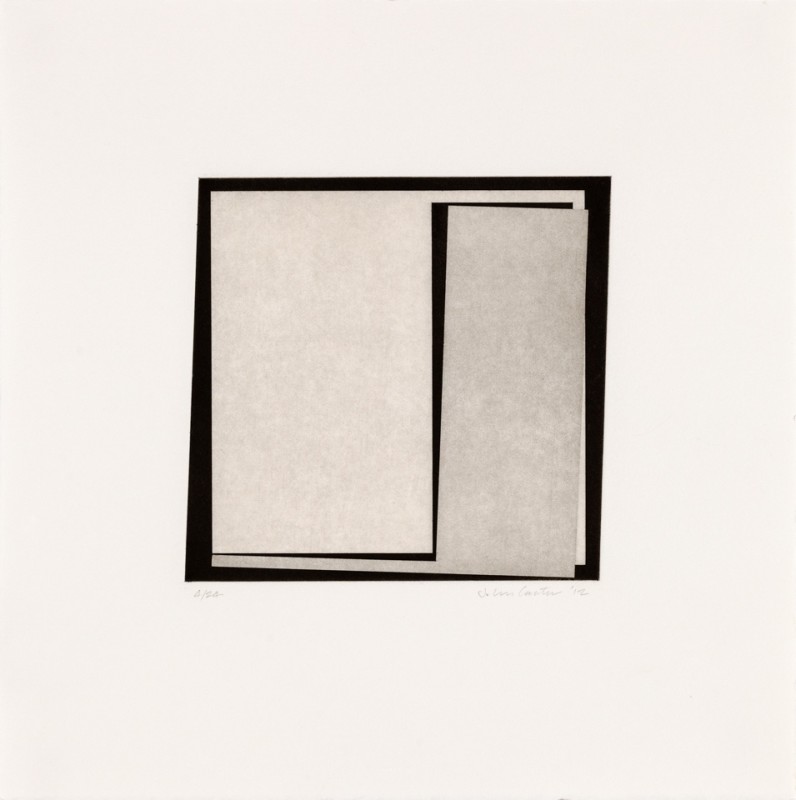 John Carter RADisplacement, 2012Aquatint34 x 34 cm (sheet)From the edition of 24 impressionsSigned, dated and numbered%3Cdiv%20class%3D%22artist%22%3E%3Cspan%20class%3D%22artist%22%3E%3Cstrong%3EJohn%20Carter%20RA%3C/strong%3E%3C/span%3E%3C/div%3E%0D%3Cdiv%20class%3D%22title%22%3E%3Cem%3EDisplacement%3C/em%3E%2C%202012%3C/div%3E%0D%3Cdiv%20class%3D%22signed_and_dated%22%3ESigned%2C%20dated%20and%20numbered%3C/div%3E%0D%3Cdiv%20class%3D%22medium%22%3EAquatint%3C/div%3E%0D%3Cdiv%20class%3D%22dimensions%22%3E34%20x%2034%20cm%20%28sheet%29%3C/div%3E%0D%3Cdiv%20class%3D%22edition_details%22%3EFrom%20the%20edition%20of%2024%20impressions%3C/div%3E
John Carter RADisplacement, 2012Aquatint34 x 34 cm (sheet)From the edition of 24 impressionsSigned, dated and numbered%3Cdiv%20class%3D%22artist%22%3E%3Cspan%20class%3D%22artist%22%3E%3Cstrong%3EJohn%20Carter%20RA%3C/strong%3E%3C/span%3E%3C/div%3E%0D%3Cdiv%20class%3D%22title%22%3E%3Cem%3EDisplacement%3C/em%3E%2C%202012%3C/div%3E%0D%3Cdiv%20class%3D%22signed_and_dated%22%3ESigned%2C%20dated%20and%20numbered%3C/div%3E%0D%3Cdiv%20class%3D%22medium%22%3EAquatint%3C/div%3E%0D%3Cdiv%20class%3D%22dimensions%22%3E34%20x%2034%20cm%20%28sheet%29%3C/div%3E%0D%3Cdiv%20class%3D%22edition_details%22%3EFrom%20the%20edition%20of%2024%20impressions%3C/div%3E -
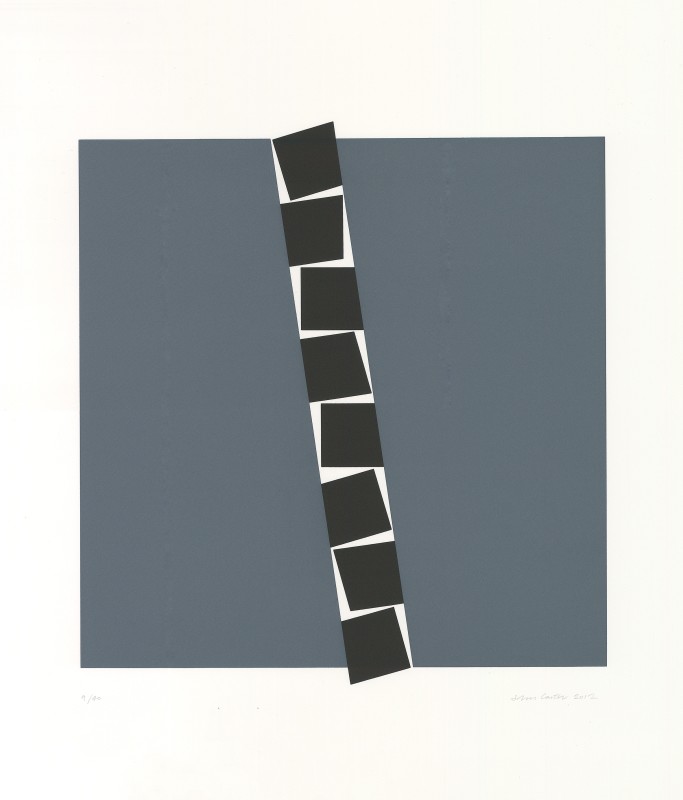 John Carter RAEight Identical Shapes 82º, 2012Screenprint64 x 53 cm (sheet)From the edition of 40 impressionsSigned, dated and numbered%3Cdiv%20class%3D%22artist%22%3E%3Cspan%20class%3D%22artist%22%3E%3Cstrong%3EJohn%20Carter%20RA%3C%2Fstrong%3E%3C%2Fspan%3E%3C%2Fdiv%3E%0D%3Cdiv%20class%3D%22title%22%3E%3Cem%3EEight%20Identical%20Shapes%2082%C2%BA%3C%2Fem%3E%2C%202012%3C%2Fdiv%3E%0D%3Cdiv%20class%3D%22signed_and_dated%22%3ESigned%2C%20dated%20and%20numbered%20%3C%2Fdiv%3E%0D%3Cdiv%20class%3D%22medium%22%3EScreenprint%3C%2Fdiv%3E%0D%3Cdiv%20class%3D%22dimensions%22%3E64%20x%2053%20cm%20%28sheet%29%3C%2Fdiv%3E%0D%3Cdiv%20class%3D%22edition_details%22%3EFrom%20the%20edition%20of%2040%20impressions%20%3C%2Fdiv%3E
John Carter RAEight Identical Shapes 82º, 2012Screenprint64 x 53 cm (sheet)From the edition of 40 impressionsSigned, dated and numbered%3Cdiv%20class%3D%22artist%22%3E%3Cspan%20class%3D%22artist%22%3E%3Cstrong%3EJohn%20Carter%20RA%3C%2Fstrong%3E%3C%2Fspan%3E%3C%2Fdiv%3E%0D%3Cdiv%20class%3D%22title%22%3E%3Cem%3EEight%20Identical%20Shapes%2082%C2%BA%3C%2Fem%3E%2C%202012%3C%2Fdiv%3E%0D%3Cdiv%20class%3D%22signed_and_dated%22%3ESigned%2C%20dated%20and%20numbered%20%3C%2Fdiv%3E%0D%3Cdiv%20class%3D%22medium%22%3EScreenprint%3C%2Fdiv%3E%0D%3Cdiv%20class%3D%22dimensions%22%3E64%20x%2053%20cm%20%28sheet%29%3C%2Fdiv%3E%0D%3Cdiv%20class%3D%22edition_details%22%3EFrom%20the%20edition%20of%2040%20impressions%20%3C%2Fdiv%3E -
 John Carter RAEmergence II, 2012Acrylic with marble powder on plywood40 x 27 cmSigned, dated and titled verso%3Cdiv%20class%3D%22artist%22%3E%3Cspan%20class%3D%22artist%22%3E%3Cstrong%3EJohn%20Carter%20RA%3C/strong%3E%3C/span%3E%3C/div%3E%0D%3Cdiv%20class%3D%22title%22%3E%3Cem%3EEmergence%20II%3C/em%3E%2C%202012%3C/div%3E%0D%3Cdiv%20class%3D%22signed_and_dated%22%3ESigned%2C%20dated%20and%20titled%20verso%3C/div%3E%0D%3Cdiv%20class%3D%22medium%22%3EAcrylic%20with%20marble%20powder%20on%20plywood%3C/div%3E%0D%3Cdiv%20class%3D%22dimensions%22%3E40%20x%2027%20cm%3C/div%3E
John Carter RAEmergence II, 2012Acrylic with marble powder on plywood40 x 27 cmSigned, dated and titled verso%3Cdiv%20class%3D%22artist%22%3E%3Cspan%20class%3D%22artist%22%3E%3Cstrong%3EJohn%20Carter%20RA%3C/strong%3E%3C/span%3E%3C/div%3E%0D%3Cdiv%20class%3D%22title%22%3E%3Cem%3EEmergence%20II%3C/em%3E%2C%202012%3C/div%3E%0D%3Cdiv%20class%3D%22signed_and_dated%22%3ESigned%2C%20dated%20and%20titled%20verso%3C/div%3E%0D%3Cdiv%20class%3D%22medium%22%3EAcrylic%20with%20marble%20powder%20on%20plywood%3C/div%3E%0D%3Cdiv%20class%3D%22dimensions%22%3E40%20x%2027%20cm%3C/div%3E -
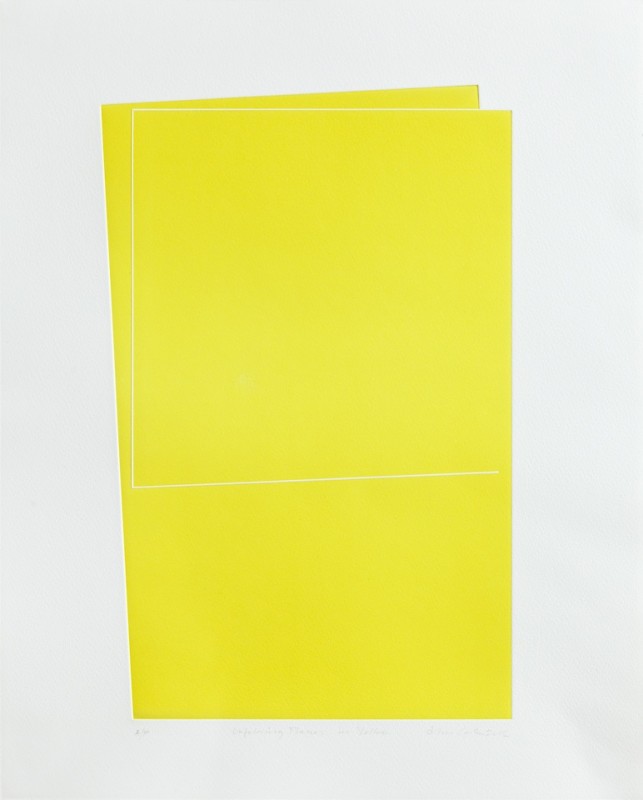 John Carter RAUnfolding Planes in Yellow, 2012Relief print with blind embossing64 x 54 cm (sheet)From the edition of 12 impressionsSigned, dated, titled and numbered%3Cdiv%20class%3D%22artist%22%3E%3Cspan%20class%3D%22artist%22%3E%3Cstrong%3EJohn%20Carter%20RA%3C/strong%3E%3C/span%3E%3C/div%3E%0D%3Cdiv%20class%3D%22title%22%3E%3Cem%3EUnfolding%20Planes%20in%20Yellow%3C/em%3E%2C%202012%3C/div%3E%0D%3Cdiv%20class%3D%22signed_and_dated%22%3ESigned%2C%20dated%2C%20titled%20and%20numbered%3C/div%3E%0D%3Cdiv%20class%3D%22medium%22%3ERelief%20print%20with%20blind%20embossing%3C/div%3E%0D%3Cdiv%20class%3D%22dimensions%22%3E64%20x%2054%20cm%20%28sheet%29%3C/div%3E%0D%3Cdiv%20class%3D%22edition_details%22%3EFrom%20the%20edition%20of%2012%20impressions%3C/div%3E
John Carter RAUnfolding Planes in Yellow, 2012Relief print with blind embossing64 x 54 cm (sheet)From the edition of 12 impressionsSigned, dated, titled and numbered%3Cdiv%20class%3D%22artist%22%3E%3Cspan%20class%3D%22artist%22%3E%3Cstrong%3EJohn%20Carter%20RA%3C/strong%3E%3C/span%3E%3C/div%3E%0D%3Cdiv%20class%3D%22title%22%3E%3Cem%3EUnfolding%20Planes%20in%20Yellow%3C/em%3E%2C%202012%3C/div%3E%0D%3Cdiv%20class%3D%22signed_and_dated%22%3ESigned%2C%20dated%2C%20titled%20and%20numbered%3C/div%3E%0D%3Cdiv%20class%3D%22medium%22%3ERelief%20print%20with%20blind%20embossing%3C/div%3E%0D%3Cdiv%20class%3D%22dimensions%22%3E64%20x%2054%20cm%20%28sheet%29%3C/div%3E%0D%3Cdiv%20class%3D%22edition_details%22%3EFrom%20the%20edition%20of%2012%20impressions%3C/div%3E -
 John Carter RARotation Study II, 2011Acrylic gouache on paper35 x 35 cmSigned and dated lower left; titled lower right%3Cdiv%20class%3D%22artist%22%3E%3Cspan%20class%3D%22artist%22%3E%3Cstrong%3EJohn%20Carter%20RA%3C/strong%3E%3C/span%3E%3C/div%3E%0D%3Cdiv%20class%3D%22title%22%3E%3Cem%3ERotation%20Study%20II%3C/em%3E%2C%202011%3C/div%3E%0D%3Cdiv%20class%3D%22signed_and_dated%22%3ESigned%20and%20dated%20lower%20left%3B%20titled%20lower%20right%3C/div%3E%0D%3Cdiv%20class%3D%22medium%22%3EAcrylic%20gouache%20on%20paper%3C/div%3E%0D%3Cdiv%20class%3D%22dimensions%22%3E35%20x%2035%20cm%3C/div%3E
John Carter RARotation Study II, 2011Acrylic gouache on paper35 x 35 cmSigned and dated lower left; titled lower right%3Cdiv%20class%3D%22artist%22%3E%3Cspan%20class%3D%22artist%22%3E%3Cstrong%3EJohn%20Carter%20RA%3C/strong%3E%3C/span%3E%3C/div%3E%0D%3Cdiv%20class%3D%22title%22%3E%3Cem%3ERotation%20Study%20II%3C/em%3E%2C%202011%3C/div%3E%0D%3Cdiv%20class%3D%22signed_and_dated%22%3ESigned%20and%20dated%20lower%20left%3B%20titled%20lower%20right%3C/div%3E%0D%3Cdiv%20class%3D%22medium%22%3EAcrylic%20gouache%20on%20paper%3C/div%3E%0D%3Cdiv%20class%3D%22dimensions%22%3E35%20x%2035%20cm%3C/div%3E -
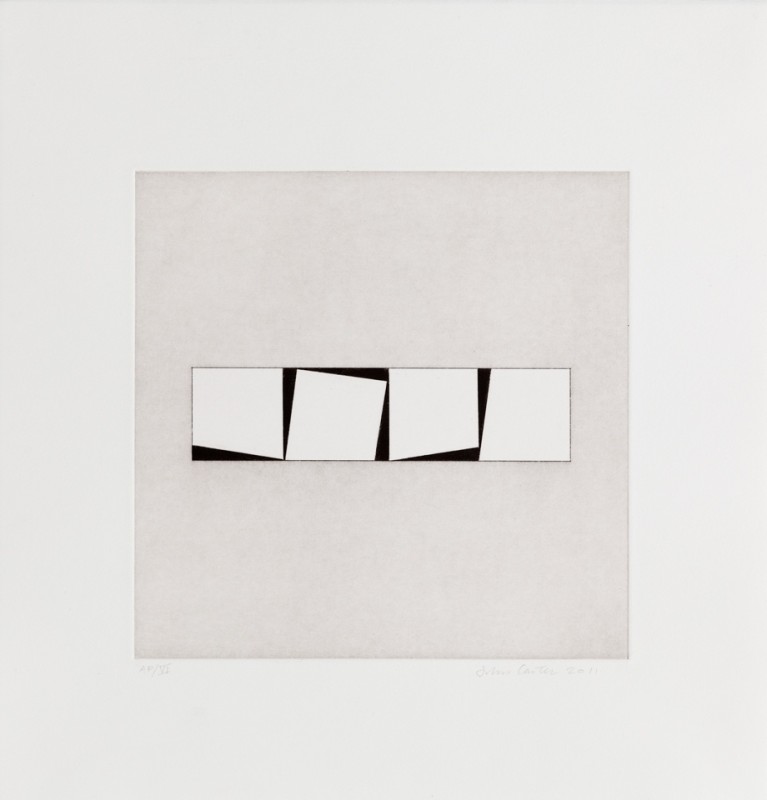 John Carter RASix Identical Shapes, 2010Etching33 x 36 cm (sheet)From the edition of 21 impressionsSigned and numbered%3Cdiv%20class%3D%22artist%22%3E%3Cspan%20class%3D%22artist%22%3E%3Cstrong%3EJohn%20Carter%20RA%3C/strong%3E%3C/span%3E%3C/div%3E%0D%3Cdiv%20class%3D%22title%22%3E%3Cem%3ESix%20Identical%20Shapes%3C/em%3E%2C%202010%3C/div%3E%0D%3Cdiv%20class%3D%22signed_and_dated%22%3ESigned%20and%20numbered%20%3C/div%3E%0D%3Cdiv%20class%3D%22medium%22%3EEtching%3C/div%3E%0D%3Cdiv%20class%3D%22dimensions%22%3E33%20x%2036%20cm%20%28sheet%29%3C/div%3E%0D%3Cdiv%20class%3D%22edition_details%22%3EFrom%20the%20edition%20of%2021%20impressions%20%3C/div%3E
John Carter RASix Identical Shapes, 2010Etching33 x 36 cm (sheet)From the edition of 21 impressionsSigned and numbered%3Cdiv%20class%3D%22artist%22%3E%3Cspan%20class%3D%22artist%22%3E%3Cstrong%3EJohn%20Carter%20RA%3C/strong%3E%3C/span%3E%3C/div%3E%0D%3Cdiv%20class%3D%22title%22%3E%3Cem%3ESix%20Identical%20Shapes%3C/em%3E%2C%202010%3C/div%3E%0D%3Cdiv%20class%3D%22signed_and_dated%22%3ESigned%20and%20numbered%20%3C/div%3E%0D%3Cdiv%20class%3D%22medium%22%3EEtching%3C/div%3E%0D%3Cdiv%20class%3D%22dimensions%22%3E33%20x%2036%20cm%20%28sheet%29%3C/div%3E%0D%3Cdiv%20class%3D%22edition_details%22%3EFrom%20the%20edition%20of%2021%20impressions%20%3C/div%3E -
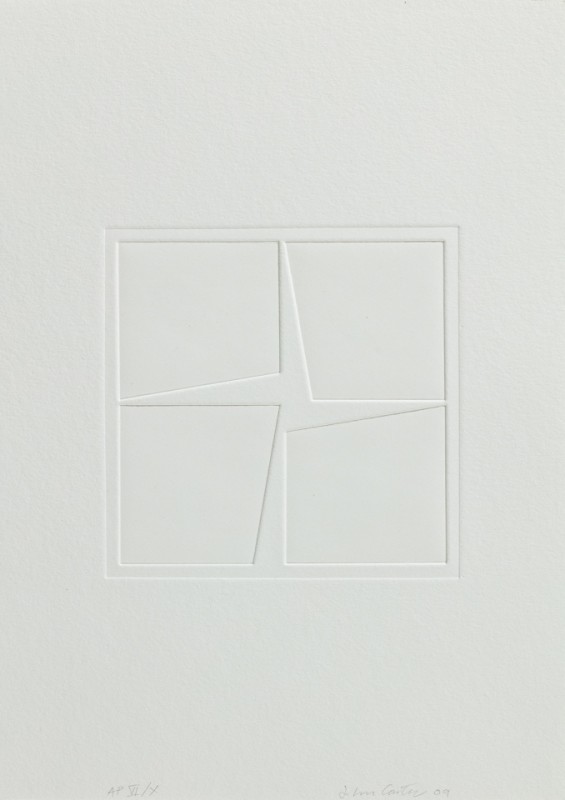 John Carter RAEtoile: Four Identical Shapes, 2009Blind embossing40 x 39 cm (sheet)From the edition of 20 impressionsSigned, dated and numbered%3Cdiv%20class%3D%22artist%22%3E%3Cspan%20class%3D%22artist%22%3E%3Cstrong%3EJohn%20Carter%20RA%3C/strong%3E%3C/span%3E%3C/div%3E%0D%3Cdiv%20class%3D%22title%22%3E%3Cem%3EEtoile%3A%20Four%20Identical%20Shapes%3C/em%3E%2C%202009%3C/div%3E%0D%3Cdiv%20class%3D%22signed_and_dated%22%3ESigned%2C%20dated%20and%20numbered%3C/div%3E%0D%3Cdiv%20class%3D%22medium%22%3EBlind%20embossing%3C/div%3E%0D%3Cdiv%20class%3D%22dimensions%22%3E40%20x%2039%20cm%20%28sheet%29%3C/div%3E%0D%3Cdiv%20class%3D%22edition_details%22%3EFrom%20the%20edition%20of%2020%20impressions%20%3C/div%3E
John Carter RAEtoile: Four Identical Shapes, 2009Blind embossing40 x 39 cm (sheet)From the edition of 20 impressionsSigned, dated and numbered%3Cdiv%20class%3D%22artist%22%3E%3Cspan%20class%3D%22artist%22%3E%3Cstrong%3EJohn%20Carter%20RA%3C/strong%3E%3C/span%3E%3C/div%3E%0D%3Cdiv%20class%3D%22title%22%3E%3Cem%3EEtoile%3A%20Four%20Identical%20Shapes%3C/em%3E%2C%202009%3C/div%3E%0D%3Cdiv%20class%3D%22signed_and_dated%22%3ESigned%2C%20dated%20and%20numbered%3C/div%3E%0D%3Cdiv%20class%3D%22medium%22%3EBlind%20embossing%3C/div%3E%0D%3Cdiv%20class%3D%22dimensions%22%3E40%20x%2039%20cm%20%28sheet%29%3C/div%3E%0D%3Cdiv%20class%3D%22edition_details%22%3EFrom%20the%20edition%20of%2020%20impressions%20%3C/div%3E -
 John Carter RAFault Line: Four Identical Shapes, 2009Acrylic gouache on paper33 x 32 cmSigned lower right; titled and dated lower left%3Cdiv%20class%3D%22artist%22%3E%3Cspan%20class%3D%22artist%22%3E%3Cstrong%3EJohn%20Carter%20RA%3C/strong%3E%3C/span%3E%3C/div%3E%0D%3Cdiv%20class%3D%22title%22%3E%3Cem%3EFault%20Line%3A%20Four%20Identical%20Shapes%3C/em%3E%2C%202009%3C/div%3E%0D%3Cdiv%20class%3D%22signed_and_dated%22%3ESigned%20lower%20right%3B%20titled%20and%20dated%20lower%20left%3C/div%3E%0D%3Cdiv%20class%3D%22medium%22%3EAcrylic%20gouache%20on%20paper%3C/div%3E%0D%3Cdiv%20class%3D%22dimensions%22%3E33%20x%2032%20cm%3C/div%3E
John Carter RAFault Line: Four Identical Shapes, 2009Acrylic gouache on paper33 x 32 cmSigned lower right; titled and dated lower left%3Cdiv%20class%3D%22artist%22%3E%3Cspan%20class%3D%22artist%22%3E%3Cstrong%3EJohn%20Carter%20RA%3C/strong%3E%3C/span%3E%3C/div%3E%0D%3Cdiv%20class%3D%22title%22%3E%3Cem%3EFault%20Line%3A%20Four%20Identical%20Shapes%3C/em%3E%2C%202009%3C/div%3E%0D%3Cdiv%20class%3D%22signed_and_dated%22%3ESigned%20lower%20right%3B%20titled%20and%20dated%20lower%20left%3C/div%3E%0D%3Cdiv%20class%3D%22medium%22%3EAcrylic%20gouache%20on%20paper%3C/div%3E%0D%3Cdiv%20class%3D%22dimensions%22%3E33%20x%2032%20cm%3C/div%3E -
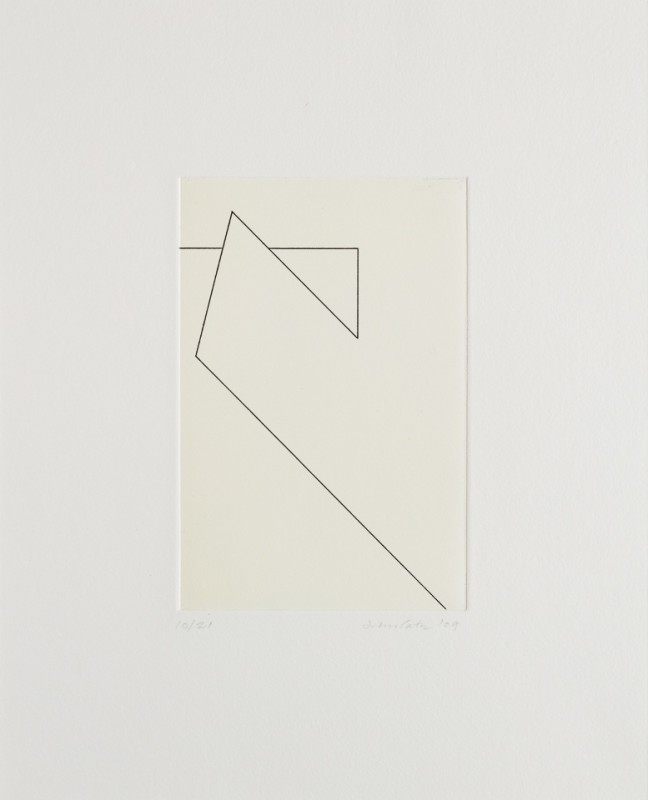 John Carter RALinear Etching: Intrusion I, 2009Etching36 x 29 cm (sheet)From the edition of 21 impressionsSigned, dated and numbered%3Cdiv%20class%3D%22artist%22%3E%3Cspan%20class%3D%22artist%22%3E%3Cstrong%3EJohn%20Carter%20RA%3C/strong%3E%3C/span%3E%3C/div%3E%0D%3Cdiv%20class%3D%22title%22%3E%3Cem%3ELinear%20Etching%3A%20Intrusion%20I%3C/em%3E%2C%202009%3C/div%3E%0D%3Cdiv%20class%3D%22signed_and_dated%22%3ESigned%2C%20dated%20and%20numbered%3C/div%3E%0D%3Cdiv%20class%3D%22medium%22%3EEtching%3C/div%3E%0D%3Cdiv%20class%3D%22dimensions%22%3E36%20x%2029%20cm%20%28sheet%29%3C/div%3E%0D%3Cdiv%20class%3D%22edition_details%22%3EFrom%20the%20edition%20of%2021%20impressions%3C/div%3E
John Carter RALinear Etching: Intrusion I, 2009Etching36 x 29 cm (sheet)From the edition of 21 impressionsSigned, dated and numbered%3Cdiv%20class%3D%22artist%22%3E%3Cspan%20class%3D%22artist%22%3E%3Cstrong%3EJohn%20Carter%20RA%3C/strong%3E%3C/span%3E%3C/div%3E%0D%3Cdiv%20class%3D%22title%22%3E%3Cem%3ELinear%20Etching%3A%20Intrusion%20I%3C/em%3E%2C%202009%3C/div%3E%0D%3Cdiv%20class%3D%22signed_and_dated%22%3ESigned%2C%20dated%20and%20numbered%3C/div%3E%0D%3Cdiv%20class%3D%22medium%22%3EEtching%3C/div%3E%0D%3Cdiv%20class%3D%22dimensions%22%3E36%20x%2029%20cm%20%28sheet%29%3C/div%3E%0D%3Cdiv%20class%3D%22edition_details%22%3EFrom%20the%20edition%20of%2021%20impressions%3C/div%3E -
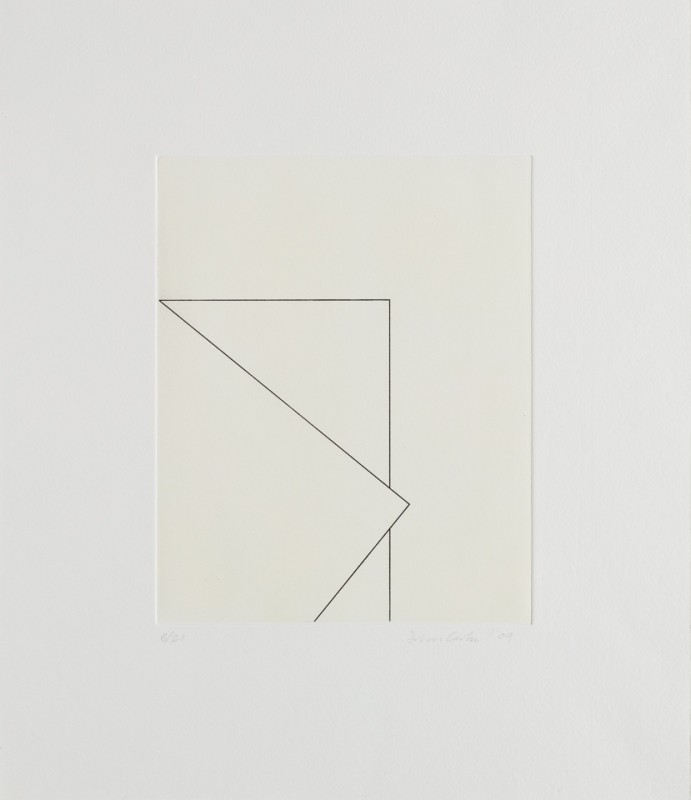 John Carter RALinear Etching: Intrusion II, 2009Etching40.5 x 35 cm (sheet)From the edition of 21 impressionsSigned, dated and numbered%3Cdiv%20class%3D%22artist%22%3E%3Cspan%20class%3D%22artist%22%3E%3Cstrong%3EJohn%20Carter%20RA%3C/strong%3E%3C/span%3E%3C/div%3E%0D%3Cdiv%20class%3D%22title%22%3E%3Cem%3ELinear%20Etching%3A%20Intrusion%20II%3C/em%3E%2C%202009%3C/div%3E%0D%3Cdiv%20class%3D%22signed_and_dated%22%3ESigned%2C%20dated%20and%20numbered%3C/div%3E%0D%3Cdiv%20class%3D%22medium%22%3EEtching%3C/div%3E%0D%3Cdiv%20class%3D%22dimensions%22%3E40.5%20x%2035%20cm%20%28sheet%29%3C/div%3E%0D%3Cdiv%20class%3D%22edition_details%22%3EFrom%20the%20edition%20of%2021%20impressions%3C/div%3E
John Carter RALinear Etching: Intrusion II, 2009Etching40.5 x 35 cm (sheet)From the edition of 21 impressionsSigned, dated and numbered%3Cdiv%20class%3D%22artist%22%3E%3Cspan%20class%3D%22artist%22%3E%3Cstrong%3EJohn%20Carter%20RA%3C/strong%3E%3C/span%3E%3C/div%3E%0D%3Cdiv%20class%3D%22title%22%3E%3Cem%3ELinear%20Etching%3A%20Intrusion%20II%3C/em%3E%2C%202009%3C/div%3E%0D%3Cdiv%20class%3D%22signed_and_dated%22%3ESigned%2C%20dated%20and%20numbered%3C/div%3E%0D%3Cdiv%20class%3D%22medium%22%3EEtching%3C/div%3E%0D%3Cdiv%20class%3D%22dimensions%22%3E40.5%20x%2035%20cm%20%28sheet%29%3C/div%3E%0D%3Cdiv%20class%3D%22edition_details%22%3EFrom%20the%20edition%20of%2021%20impressions%3C/div%3E -
 John Carter RAStudy II, 2009Acrylic gouache on paper31 x 31 cmSigned and dated lower left; titled lower right%3Cdiv%20class%3D%22artist%22%3E%3Cspan%20class%3D%22artist%22%3E%3Cstrong%3EJohn%20Carter%20RA%3C/strong%3E%3C/span%3E%3C/div%3E%0D%3Cdiv%20class%3D%22title%22%3E%3Cem%3EStudy%20II%3C/em%3E%2C%202009%3C/div%3E%0D%3Cdiv%20class%3D%22signed_and_dated%22%3ESigned%20and%20dated%20lower%20left%3B%20titled%20lower%20right%3C/div%3E%0D%3Cdiv%20class%3D%22medium%22%3EAcrylic%20gouache%20on%20paper%3C/div%3E%0D%3Cdiv%20class%3D%22dimensions%22%3E31%20x%2031%20cm%3C/div%3E
John Carter RAStudy II, 2009Acrylic gouache on paper31 x 31 cmSigned and dated lower left; titled lower right%3Cdiv%20class%3D%22artist%22%3E%3Cspan%20class%3D%22artist%22%3E%3Cstrong%3EJohn%20Carter%20RA%3C/strong%3E%3C/span%3E%3C/div%3E%0D%3Cdiv%20class%3D%22title%22%3E%3Cem%3EStudy%20II%3C/em%3E%2C%202009%3C/div%3E%0D%3Cdiv%20class%3D%22signed_and_dated%22%3ESigned%20and%20dated%20lower%20left%3B%20titled%20lower%20right%3C/div%3E%0D%3Cdiv%20class%3D%22medium%22%3EAcrylic%20gouache%20on%20paper%3C/div%3E%0D%3Cdiv%20class%3D%22dimensions%22%3E31%20x%2031%20cm%3C/div%3E -
 John Carter RAThrough a Square: Study, 2009Acrylic gouache on paper31 x 21 cmSigned and dated lower left; titled lower right%3Cdiv%20class%3D%22artist%22%3E%3Cspan%20class%3D%22artist%22%3E%3Cstrong%3EJohn%20Carter%20RA%3C/strong%3E%3C/span%3E%3C/div%3E%0D%3Cdiv%20class%3D%22title%22%3E%3Cem%3EThrough%20a%20Square%3A%20Study%3C/em%3E%2C%202009%3C/div%3E%0D%3Cdiv%20class%3D%22signed_and_dated%22%3ESigned%20and%20dated%20lower%20left%3B%20titled%20lower%20right%3C/div%3E%0D%3Cdiv%20class%3D%22medium%22%3EAcrylic%20gouache%20on%20paper%3C/div%3E%0D%3Cdiv%20class%3D%22dimensions%22%3E31%20x%2021%20cm%3C/div%3E
John Carter RAThrough a Square: Study, 2009Acrylic gouache on paper31 x 21 cmSigned and dated lower left; titled lower right%3Cdiv%20class%3D%22artist%22%3E%3Cspan%20class%3D%22artist%22%3E%3Cstrong%3EJohn%20Carter%20RA%3C/strong%3E%3C/span%3E%3C/div%3E%0D%3Cdiv%20class%3D%22title%22%3E%3Cem%3EThrough%20a%20Square%3A%20Study%3C/em%3E%2C%202009%3C/div%3E%0D%3Cdiv%20class%3D%22signed_and_dated%22%3ESigned%20and%20dated%20lower%20left%3B%20titled%20lower%20right%3C/div%3E%0D%3Cdiv%20class%3D%22medium%22%3EAcrylic%20gouache%20on%20paper%3C/div%3E%0D%3Cdiv%20class%3D%22dimensions%22%3E31%20x%2021%20cm%3C/div%3E -
 John Carter RAThrough an Oblong, 2009Acrylic gouache on paper38.5 x 25 cmSigned and dated lower left; titled lower right%3Cdiv%20class%3D%22artist%22%3E%3Cspan%20class%3D%22artist%22%3E%3Cstrong%3EJohn%20Carter%20RA%3C/strong%3E%3C/span%3E%3C/div%3E%0D%3Cdiv%20class%3D%22title%22%3E%3Cem%3EThrough%20an%20Oblong%3C/em%3E%2C%202009%3C/div%3E%0D%3Cdiv%20class%3D%22signed_and_dated%22%3ESigned%20and%20dated%20lower%20left%3B%20titled%20lower%20right%3C/div%3E%0D%3Cdiv%20class%3D%22medium%22%3EAcrylic%20gouache%20on%20paper%3C/div%3E%0D%3Cdiv%20class%3D%22dimensions%22%3E38.5%20x%2025%20cm%3C/div%3E
John Carter RAThrough an Oblong, 2009Acrylic gouache on paper38.5 x 25 cmSigned and dated lower left; titled lower right%3Cdiv%20class%3D%22artist%22%3E%3Cspan%20class%3D%22artist%22%3E%3Cstrong%3EJohn%20Carter%20RA%3C/strong%3E%3C/span%3E%3C/div%3E%0D%3Cdiv%20class%3D%22title%22%3E%3Cem%3EThrough%20an%20Oblong%3C/em%3E%2C%202009%3C/div%3E%0D%3Cdiv%20class%3D%22signed_and_dated%22%3ESigned%20and%20dated%20lower%20left%3B%20titled%20lower%20right%3C/div%3E%0D%3Cdiv%20class%3D%22medium%22%3EAcrylic%20gouache%20on%20paper%3C/div%3E%0D%3Cdiv%20class%3D%22dimensions%22%3E38.5%20x%2025%20cm%3C/div%3E -
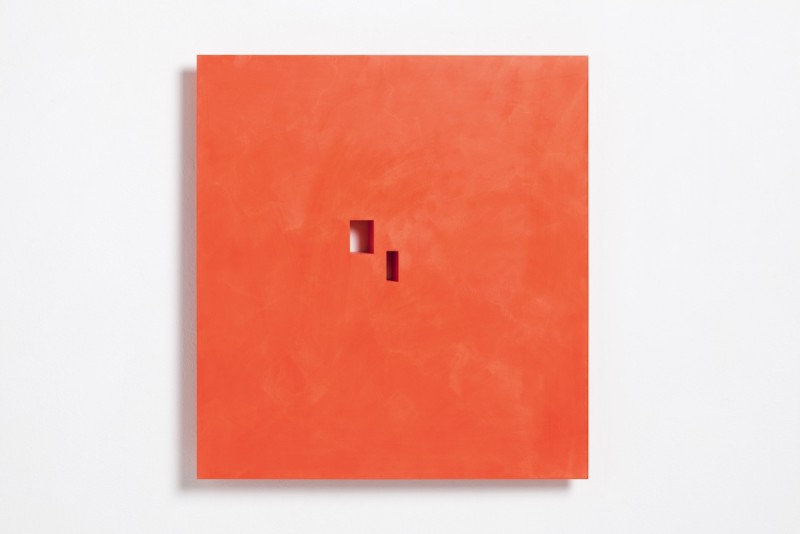 John Carter RAPierced Square in Red, 2008-10Acrylic with marble powder on plywood51 x 49 x 4cm%3Cdiv%20class%3D%22artist%22%3E%3Cspan%20class%3D%22artist%22%3E%3Cstrong%3EJohn%20Carter%20RA%3C/strong%3E%3C/span%3E%3C/div%3E%0D%3Cdiv%20class%3D%22title%22%3E%3Cem%3EPierced%20Square%20in%20Red%3C/em%3E%2C%202008-10%3C/div%3E%0D%3Cdiv%20class%3D%22medium%22%3EAcrylic%20with%20marble%20powder%20on%20plywood%3C/div%3E%0D%3Cdiv%20class%3D%22dimensions%22%3E51%20x%2049%20x%204cm%3C/div%3E
John Carter RAPierced Square in Red, 2008-10Acrylic with marble powder on plywood51 x 49 x 4cm%3Cdiv%20class%3D%22artist%22%3E%3Cspan%20class%3D%22artist%22%3E%3Cstrong%3EJohn%20Carter%20RA%3C/strong%3E%3C/span%3E%3C/div%3E%0D%3Cdiv%20class%3D%22title%22%3E%3Cem%3EPierced%20Square%20in%20Red%3C/em%3E%2C%202008-10%3C/div%3E%0D%3Cdiv%20class%3D%22medium%22%3EAcrylic%20with%20marble%20powder%20on%20plywood%3C/div%3E%0D%3Cdiv%20class%3D%22dimensions%22%3E51%20x%2049%20x%204cm%3C/div%3E -
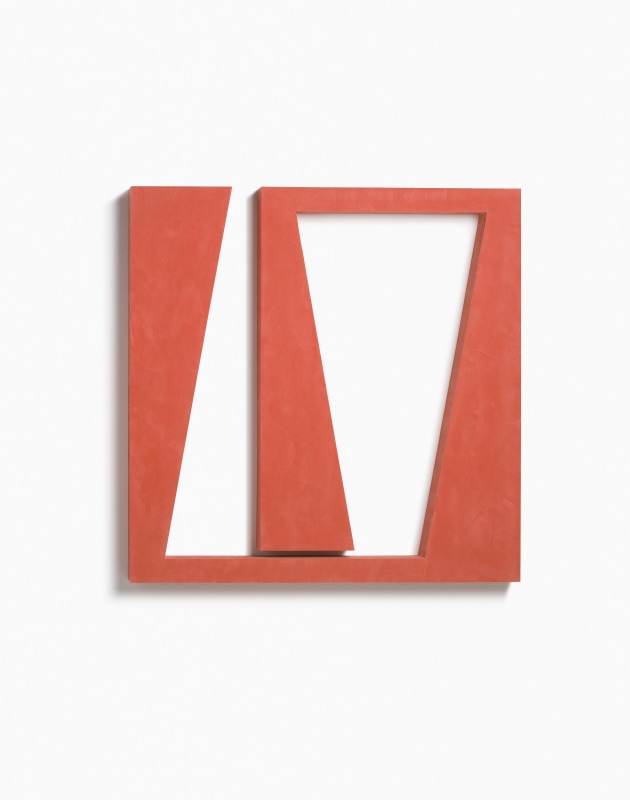 John Carter RAPositive and Negative Forms I, 2008Acrylic with marble powder on plywood100 x 100 x 8.5 cm%3Cdiv%20class%3D%22artist%22%3E%3Cspan%20class%3D%22artist%22%3E%3Cstrong%3EJohn%20Carter%20RA%3C/strong%3E%3C/span%3E%3C/div%3E%0D%3Cdiv%20class%3D%22title%22%3E%3Cem%3EPositive%20and%20Negative%20Forms%20I%3C/em%3E%2C%202008%3C/div%3E%0D%3Cdiv%20class%3D%22medium%22%3EAcrylic%20with%20marble%20powder%20on%20plywood%3C/div%3E%0D%3Cdiv%20class%3D%22dimensions%22%3E100%20x%20100%20x%208.5%20cm%3C/div%3E
John Carter RAPositive and Negative Forms I, 2008Acrylic with marble powder on plywood100 x 100 x 8.5 cm%3Cdiv%20class%3D%22artist%22%3E%3Cspan%20class%3D%22artist%22%3E%3Cstrong%3EJohn%20Carter%20RA%3C/strong%3E%3C/span%3E%3C/div%3E%0D%3Cdiv%20class%3D%22title%22%3E%3Cem%3EPositive%20and%20Negative%20Forms%20I%3C/em%3E%2C%202008%3C/div%3E%0D%3Cdiv%20class%3D%22medium%22%3EAcrylic%20with%20marble%20powder%20on%20plywood%3C/div%3E%0D%3Cdiv%20class%3D%22dimensions%22%3E100%20x%20100%20x%208.5%20cm%3C/div%3E -
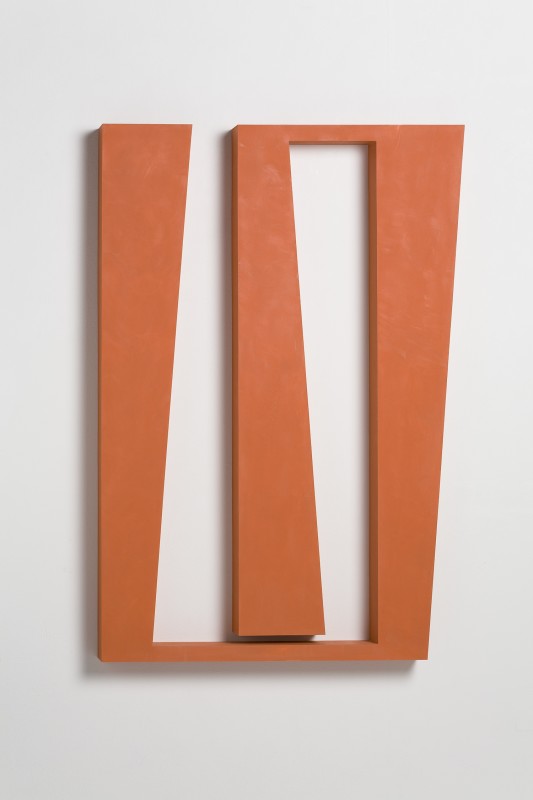 John Carter RAPositive and Negative Forms II, 2008Acrylic with marble powder on plywood122 x 83.5 x 8.5 cmSigned, dated and titled verso%3Cdiv%20class%3D%22artist%22%3E%3Cspan%20class%3D%22artist%22%3E%3Cstrong%3EJohn%20Carter%20RA%3C/strong%3E%3C/span%3E%3C/div%3E%0D%3Cdiv%20class%3D%22title%22%3E%3Cem%3EPositive%20and%20Negative%20Forms%20II%3C/em%3E%2C%202008%3C/div%3E%0D%3Cdiv%20class%3D%22signed_and_dated%22%3ESigned%2C%20dated%20and%20titled%20verso%3C/div%3E%0D%3Cdiv%20class%3D%22medium%22%3EAcrylic%20with%20marble%20powder%20on%20plywood%3C/div%3E%0D%3Cdiv%20class%3D%22dimensions%22%3E122%20x%2083.5%20x%208.5%20cm%3C/div%3E
John Carter RAPositive and Negative Forms II, 2008Acrylic with marble powder on plywood122 x 83.5 x 8.5 cmSigned, dated and titled verso%3Cdiv%20class%3D%22artist%22%3E%3Cspan%20class%3D%22artist%22%3E%3Cstrong%3EJohn%20Carter%20RA%3C/strong%3E%3C/span%3E%3C/div%3E%0D%3Cdiv%20class%3D%22title%22%3E%3Cem%3EPositive%20and%20Negative%20Forms%20II%3C/em%3E%2C%202008%3C/div%3E%0D%3Cdiv%20class%3D%22signed_and_dated%22%3ESigned%2C%20dated%20and%20titled%20verso%3C/div%3E%0D%3Cdiv%20class%3D%22medium%22%3EAcrylic%20with%20marble%20powder%20on%20plywood%3C/div%3E%0D%3Cdiv%20class%3D%22dimensions%22%3E122%20x%2083.5%20x%208.5%20cm%3C/div%3E -
 John Carter RATo the Edge Variation, 2006/14Acrylic with marble powder on plywood100 x 60 x 4.2 cm%3Cdiv%20class%3D%22artist%22%3E%3Cspan%20class%3D%22artist%22%3E%3Cstrong%3EJohn%20Carter%20RA%3C/strong%3E%3C/span%3E%3C/div%3E%0D%3Cdiv%20class%3D%22title%22%3E%3Cem%3ETo%20the%20Edge%20Variation%3C/em%3E%2C%202006/14%3C/div%3E%0D%3Cdiv%20class%3D%22medium%22%3EAcrylic%20with%20marble%20powder%20on%20plywood%3C/div%3E%0D%3Cdiv%20class%3D%22dimensions%22%3E100%20x%2060%20x%204.2%20cm%3C/div%3E
John Carter RATo the Edge Variation, 2006/14Acrylic with marble powder on plywood100 x 60 x 4.2 cm%3Cdiv%20class%3D%22artist%22%3E%3Cspan%20class%3D%22artist%22%3E%3Cstrong%3EJohn%20Carter%20RA%3C/strong%3E%3C/span%3E%3C/div%3E%0D%3Cdiv%20class%3D%22title%22%3E%3Cem%3ETo%20the%20Edge%20Variation%3C/em%3E%2C%202006/14%3C/div%3E%0D%3Cdiv%20class%3D%22medium%22%3EAcrylic%20with%20marble%20powder%20on%20plywood%3C/div%3E%0D%3Cdiv%20class%3D%22dimensions%22%3E100%20x%2060%20x%204.2%20cm%3C/div%3E -
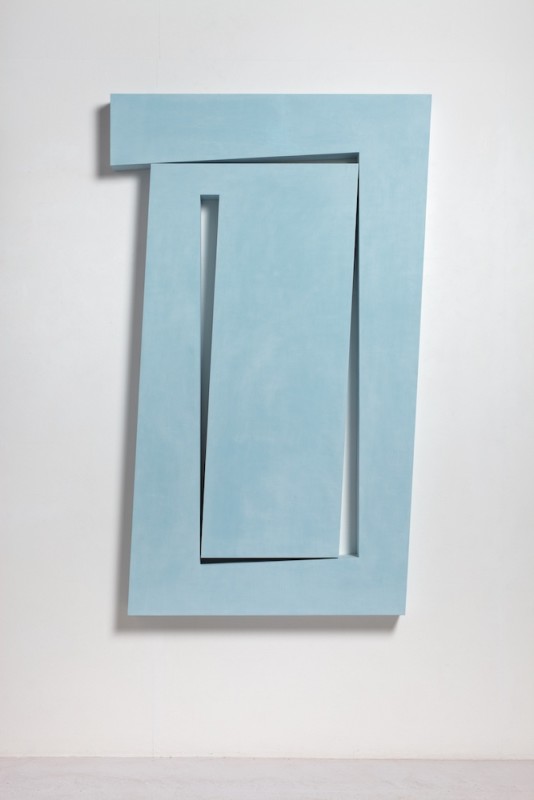 John Carter RAFour Turns: Vertical Format, 2005Acrylic with marble powder on plywood178 x 120 x 10cm%3Cdiv%20class%3D%22artist%22%3E%3Cspan%20class%3D%22artist%22%3E%3Cstrong%3EJohn%20Carter%20RA%3C/strong%3E%3C/span%3E%3C/div%3E%0D%3Cdiv%20class%3D%22title%22%3E%3Cem%3EFour%20Turns%3A%20Vertical%20Format%3C/em%3E%2C%202005%3C/div%3E%0D%3Cdiv%20class%3D%22medium%22%3EAcrylic%20with%20marble%20powder%20on%20plywood%3C/div%3E%0D%3Cdiv%20class%3D%22dimensions%22%3E178%20x%20120%20x%2010cm%3C/div%3E
John Carter RAFour Turns: Vertical Format, 2005Acrylic with marble powder on plywood178 x 120 x 10cm%3Cdiv%20class%3D%22artist%22%3E%3Cspan%20class%3D%22artist%22%3E%3Cstrong%3EJohn%20Carter%20RA%3C/strong%3E%3C/span%3E%3C/div%3E%0D%3Cdiv%20class%3D%22title%22%3E%3Cem%3EFour%20Turns%3A%20Vertical%20Format%3C/em%3E%2C%202005%3C/div%3E%0D%3Cdiv%20class%3D%22medium%22%3EAcrylic%20with%20marble%20powder%20on%20plywood%3C/div%3E%0D%3Cdiv%20class%3D%22dimensions%22%3E178%20x%20120%20x%2010cm%3C/div%3E -
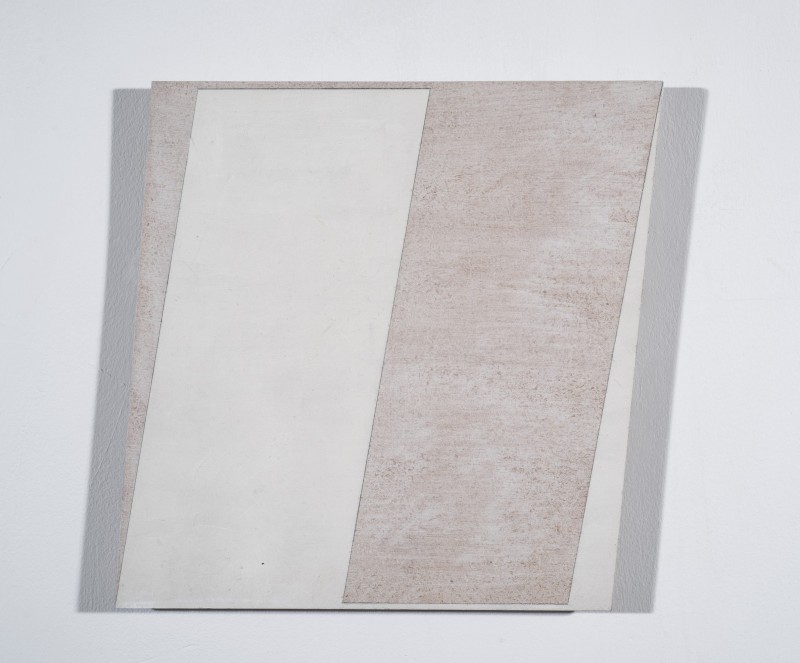 John Carter RAMeander Theme Study, 2005Acrylic and pencil on board23 x 22 cmSigned, dated and titled verso%3Cdiv%20class%3D%22artist%22%3E%3Cspan%20class%3D%22artist%22%3E%3Cstrong%3EJohn%20Carter%20RA%3C/strong%3E%3C/span%3E%3C/div%3E%0D%3Cdiv%20class%3D%22title%22%3E%3Cem%3EMeander%20Theme%20Study%3C/em%3E%2C%202005%3C/div%3E%0D%3Cdiv%20class%3D%22signed_and_dated%22%3ESigned%2C%20dated%20and%20titled%20verso%3C/div%3E%0D%3Cdiv%20class%3D%22medium%22%3EAcrylic%20and%20pencil%20on%20board%3C/div%3E%0D%3Cdiv%20class%3D%22dimensions%22%3E23%20x%2022%20cm%3C/div%3E
John Carter RAMeander Theme Study, 2005Acrylic and pencil on board23 x 22 cmSigned, dated and titled verso%3Cdiv%20class%3D%22artist%22%3E%3Cspan%20class%3D%22artist%22%3E%3Cstrong%3EJohn%20Carter%20RA%3C/strong%3E%3C/span%3E%3C/div%3E%0D%3Cdiv%20class%3D%22title%22%3E%3Cem%3EMeander%20Theme%20Study%3C/em%3E%2C%202005%3C/div%3E%0D%3Cdiv%20class%3D%22signed_and_dated%22%3ESigned%2C%20dated%20and%20titled%20verso%3C/div%3E%0D%3Cdiv%20class%3D%22medium%22%3EAcrylic%20and%20pencil%20on%20board%3C/div%3E%0D%3Cdiv%20class%3D%22dimensions%22%3E23%20x%2022%20cm%3C/div%3E -
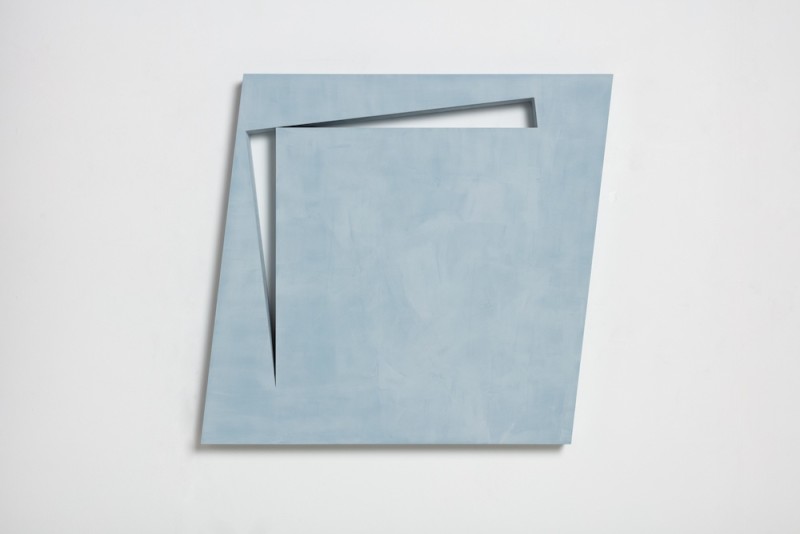 John Carter RAParallelogram: Folded Square, 2004Acrylic with marble powder on plywood80 x 88 x 6.7cm%3Cdiv%20class%3D%22artist%22%3E%3Cspan%20class%3D%22artist%22%3E%3Cstrong%3EJohn%20Carter%20RA%3C/strong%3E%3C/span%3E%3C/div%3E%0D%3Cdiv%20class%3D%22title%22%3E%3Cem%3EParallelogram%3A%20Folded%20Square%3C/em%3E%2C%202004%3C/div%3E%0D%3Cdiv%20class%3D%22medium%22%3EAcrylic%20with%20marble%20powder%20on%20plywood%3C/div%3E%0D%3Cdiv%20class%3D%22dimensions%22%3E80%20x%2088%20x%206.7cm%3C/div%3E
John Carter RAParallelogram: Folded Square, 2004Acrylic with marble powder on plywood80 x 88 x 6.7cm%3Cdiv%20class%3D%22artist%22%3E%3Cspan%20class%3D%22artist%22%3E%3Cstrong%3EJohn%20Carter%20RA%3C/strong%3E%3C/span%3E%3C/div%3E%0D%3Cdiv%20class%3D%22title%22%3E%3Cem%3EParallelogram%3A%20Folded%20Square%3C/em%3E%2C%202004%3C/div%3E%0D%3Cdiv%20class%3D%22medium%22%3EAcrylic%20with%20marble%20powder%20on%20plywood%3C/div%3E%0D%3Cdiv%20class%3D%22dimensions%22%3E80%20x%2088%20x%206.7cm%3C/div%3E -
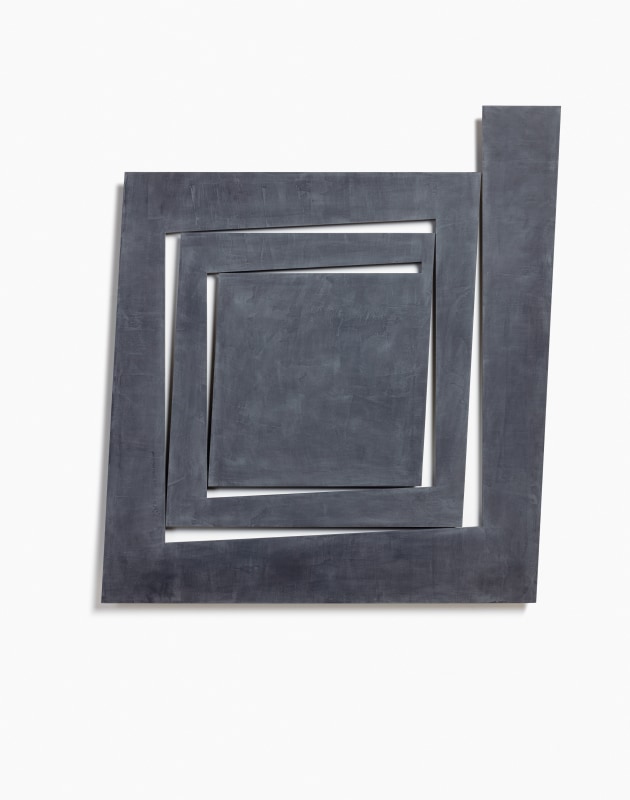 John Carter RAEight Turns, 2003Acrylic with marble powder on plywood124 x 115 x 8 cm%3Cdiv%20class%3D%22artist%22%3E%3Cspan%20class%3D%22artist%22%3E%3Cstrong%3EJohn%20Carter%20RA%20%3C/strong%3E%3C/span%3E%3C/div%3E%0D%3Cdiv%20class%3D%22title%22%3E%3Cem%3EEight%20Turns%3C/em%3E%2C%202003%3C/div%3E%0D%3Cdiv%20class%3D%22medium%22%3EAcrylic%20with%20marble%20powder%20on%20plywood%3C/div%3E%0D%3Cdiv%20class%3D%22dimensions%22%3E124%20x%20115%20x%208%20cm%3C/div%3E
John Carter RAEight Turns, 2003Acrylic with marble powder on plywood124 x 115 x 8 cm%3Cdiv%20class%3D%22artist%22%3E%3Cspan%20class%3D%22artist%22%3E%3Cstrong%3EJohn%20Carter%20RA%20%3C/strong%3E%3C/span%3E%3C/div%3E%0D%3Cdiv%20class%3D%22title%22%3E%3Cem%3EEight%20Turns%3C/em%3E%2C%202003%3C/div%3E%0D%3Cdiv%20class%3D%22medium%22%3EAcrylic%20with%20marble%20powder%20on%20plywood%3C/div%3E%0D%3Cdiv%20class%3D%22dimensions%22%3E124%20x%20115%20x%208%20cm%3C/div%3E -
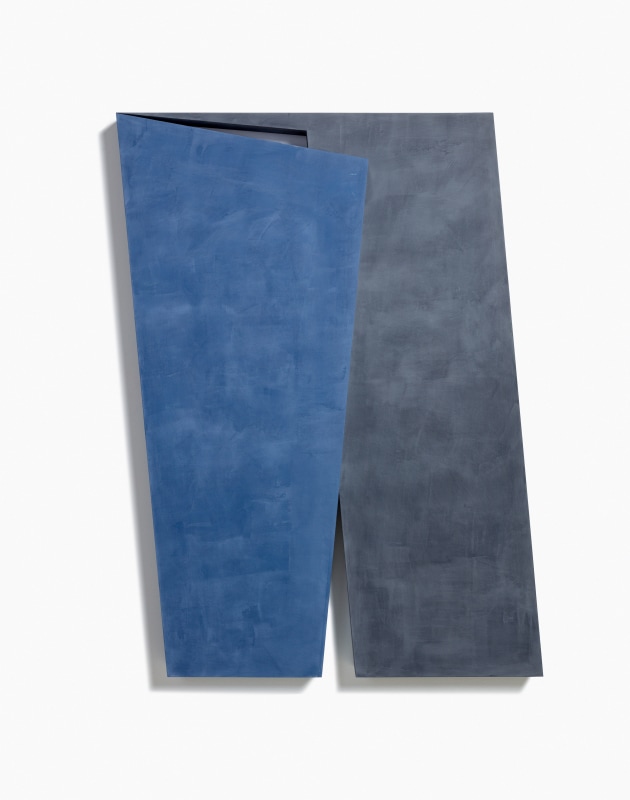 John Carter RADouble Form: Vertical II, 2002/3Acrylic with marble powder on plywood113 x 85.5 x 7.8 cm%3Cdiv%20class%3D%22artist%22%3E%3Cspan%20class%3D%22artist%22%3E%3Cstrong%3EJohn%20Carter%20RA%3C/strong%3E%3C/span%3E%3C/div%3E%0D%3Cdiv%20class%3D%22title%22%3E%3Cem%3EDouble%20Form%3A%20Vertical%20II%3C/em%3E%2C%202002/3%3C/div%3E%0D%3Cdiv%20class%3D%22medium%22%3EAcrylic%20with%20marble%20powder%20on%20plywood%3C/div%3E%0D%3Cdiv%20class%3D%22dimensions%22%3E113%20x%2085.5%20x%207.8%20cm%3C/div%3E
John Carter RADouble Form: Vertical II, 2002/3Acrylic with marble powder on plywood113 x 85.5 x 7.8 cm%3Cdiv%20class%3D%22artist%22%3E%3Cspan%20class%3D%22artist%22%3E%3Cstrong%3EJohn%20Carter%20RA%3C/strong%3E%3C/span%3E%3C/div%3E%0D%3Cdiv%20class%3D%22title%22%3E%3Cem%3EDouble%20Form%3A%20Vertical%20II%3C/em%3E%2C%202002/3%3C/div%3E%0D%3Cdiv%20class%3D%22medium%22%3EAcrylic%20with%20marble%20powder%20on%20plywood%3C/div%3E%0D%3Cdiv%20class%3D%22dimensions%22%3E113%20x%2085.5%20x%207.8%20cm%3C/div%3E -
 John Carter RADouble Form: Overlapping III, 2002Acrylic with marble powder on plywood75 x 150 x 7.7 cm%3Cdiv%20class%3D%22artist%22%3E%3Cspan%20class%3D%22artist%22%3E%3Cstrong%3EJohn%20Carter%20RA%3C/strong%3E%3C/span%3E%3C/div%3E%0D%3Cdiv%20class%3D%22title%22%3E%3Cem%3EDouble%20Form%3A%20Overlapping%20III%3C/em%3E%2C%202002%3C/div%3E%0D%3Cdiv%20class%3D%22medium%22%3EAcrylic%20with%20marble%20powder%20on%20plywood%3C/div%3E%0D%3Cdiv%20class%3D%22dimensions%22%3E75%20x%20150%20x%207.7%20cm%3C/div%3E
John Carter RADouble Form: Overlapping III, 2002Acrylic with marble powder on plywood75 x 150 x 7.7 cm%3Cdiv%20class%3D%22artist%22%3E%3Cspan%20class%3D%22artist%22%3E%3Cstrong%3EJohn%20Carter%20RA%3C/strong%3E%3C/span%3E%3C/div%3E%0D%3Cdiv%20class%3D%22title%22%3E%3Cem%3EDouble%20Form%3A%20Overlapping%20III%3C/em%3E%2C%202002%3C/div%3E%0D%3Cdiv%20class%3D%22medium%22%3EAcrylic%20with%20marble%20powder%20on%20plywood%3C/div%3E%0D%3Cdiv%20class%3D%22dimensions%22%3E75%20x%20150%20x%207.7%20cm%3C/div%3E -
 John Carter RAFour Turns: Overlapping, 2002Watercolour on paper52 x 50 cmSigned lower righted dated and titled lower left%3Cdiv%20class%3D%22artist%22%3E%3Cspan%20class%3D%22artist%22%3E%3Cstrong%3EJohn%20Carter%20RA%3C/strong%3E%3C/span%3E%3C/div%3E%0D%3Cdiv%20class%3D%22title%22%3E%3Cem%3EFour%20Turns%3A%20Overlapping%3C/em%3E%2C%202002%3C/div%3E%0D%3Cdiv%20class%3D%22signed_and_dated%22%3ESigned%20lower%20righted%20dated%20and%20titled%20lower%20left%3C/div%3E%0D%3Cdiv%20class%3D%22medium%22%3EWatercolour%20on%20paper%3C/div%3E%0D%3Cdiv%20class%3D%22dimensions%22%3E52%20x%2050%20cm%3C/div%3E
John Carter RAFour Turns: Overlapping, 2002Watercolour on paper52 x 50 cmSigned lower righted dated and titled lower left%3Cdiv%20class%3D%22artist%22%3E%3Cspan%20class%3D%22artist%22%3E%3Cstrong%3EJohn%20Carter%20RA%3C/strong%3E%3C/span%3E%3C/div%3E%0D%3Cdiv%20class%3D%22title%22%3E%3Cem%3EFour%20Turns%3A%20Overlapping%3C/em%3E%2C%202002%3C/div%3E%0D%3Cdiv%20class%3D%22signed_and_dated%22%3ESigned%20lower%20righted%20dated%20and%20titled%20lower%20left%3C/div%3E%0D%3Cdiv%20class%3D%22medium%22%3EWatercolour%20on%20paper%3C/div%3E%0D%3Cdiv%20class%3D%22dimensions%22%3E52%20x%2050%20cm%3C/div%3E -
 John Carter RAThree Turns, 2002Acrylic with marble powder on plywood93 x 97.7 x 7cm%3Cdiv%20class%3D%22artist%22%3E%3Cspan%20class%3D%22artist%22%3E%3Cstrong%3EJohn%20Carter%20RA%3C/strong%3E%3C/span%3E%3C/div%3E%0D%3Cdiv%20class%3D%22title%22%3E%3Cem%3EThree%20Turns%3C/em%3E%2C%202002%3C/div%3E%0D%3Cdiv%20class%3D%22medium%22%3EAcrylic%20with%20marble%20powder%20on%20plywood%3C/div%3E%0D%3Cdiv%20class%3D%22dimensions%22%3E93%20x%2097.7%20x%207cm%3C/div%3E
John Carter RAThree Turns, 2002Acrylic with marble powder on plywood93 x 97.7 x 7cm%3Cdiv%20class%3D%22artist%22%3E%3Cspan%20class%3D%22artist%22%3E%3Cstrong%3EJohn%20Carter%20RA%3C/strong%3E%3C/span%3E%3C/div%3E%0D%3Cdiv%20class%3D%22title%22%3E%3Cem%3EThree%20Turns%3C/em%3E%2C%202002%3C/div%3E%0D%3Cdiv%20class%3D%22medium%22%3EAcrylic%20with%20marble%20powder%20on%20plywood%3C/div%3E%0D%3Cdiv%20class%3D%22dimensions%22%3E93%20x%2097.7%20x%207cm%3C/div%3E -
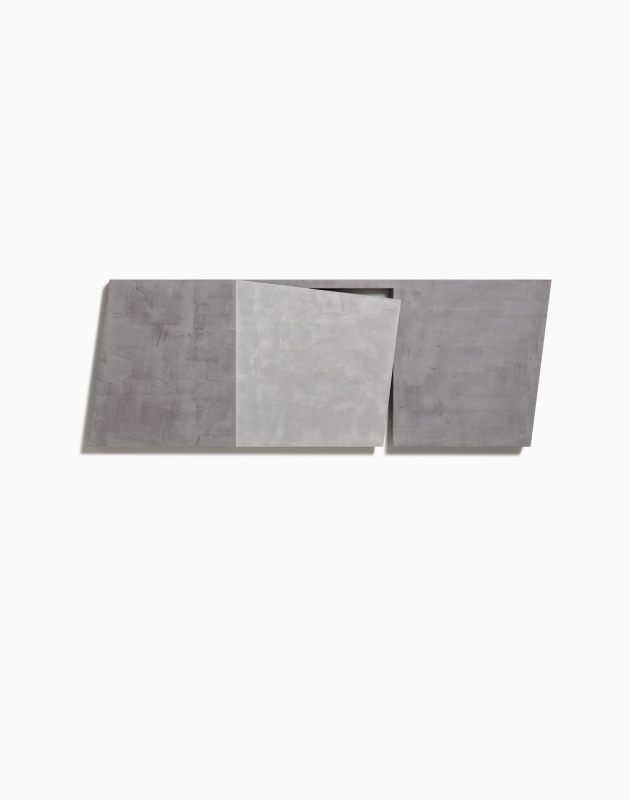 John Carter RATriple Form, Vertical Edge, 2002Acrylic with marble and slate powder on plywood40 x 111 x 5.4 cm%3Cdiv%20class%3D%22artist%22%3E%3Cspan%20class%3D%22artist%22%3E%3Cstrong%3EJohn%20Carter%20RA%3C/strong%3E%3C/span%3E%3C/div%3E%0D%3Cdiv%20class%3D%22title%22%3E%3Cem%3ETriple%20Form%2C%20Vertical%20Edge%3C/em%3E%2C%202002%3C/div%3E%0D%3Cdiv%20class%3D%22medium%22%3EAcrylic%20with%20marble%20and%20slate%20powder%20on%20plywood%3C/div%3E%0D%3Cdiv%20class%3D%22dimensions%22%3E40%20x%20111%20x%205.4%20cm%3C/div%3E
John Carter RATriple Form, Vertical Edge, 2002Acrylic with marble and slate powder on plywood40 x 111 x 5.4 cm%3Cdiv%20class%3D%22artist%22%3E%3Cspan%20class%3D%22artist%22%3E%3Cstrong%3EJohn%20Carter%20RA%3C/strong%3E%3C/span%3E%3C/div%3E%0D%3Cdiv%20class%3D%22title%22%3E%3Cem%3ETriple%20Form%2C%20Vertical%20Edge%3C/em%3E%2C%202002%3C/div%3E%0D%3Cdiv%20class%3D%22medium%22%3EAcrylic%20with%20marble%20and%20slate%20powder%20on%20plywood%3C/div%3E%0D%3Cdiv%20class%3D%22dimensions%22%3E40%20x%20111%20x%205.4%20cm%3C/div%3E -
 John Carter RATwo Parallelograms, Three Areas, Study, 2002Watercolour and ink on paper26 x 33 cmSigned lower right; titled and dated lower left%3Cdiv%20class%3D%22artist%22%3E%3Cspan%20class%3D%22artist%22%3E%3Cstrong%3EJohn%20Carter%20RA%3C/strong%3E%3C/span%3E%3C/div%3E%0D%3Cdiv%20class%3D%22title%22%3E%3Cem%3ETwo%20Parallelograms%2C%20Three%20Areas%2C%20Study%3C/em%3E%2C%202002%3C/div%3E%0D%3Cdiv%20class%3D%22signed_and_dated%22%3ESigned%20lower%20right%3B%20titled%20and%20dated%20lower%20left%3C/div%3E%0D%3Cdiv%20class%3D%22medium%22%3EWatercolour%20and%20ink%20on%20paper%3C/div%3E%0D%3Cdiv%20class%3D%22dimensions%22%3E26%20x%2033%20cm%3C/div%3E
John Carter RATwo Parallelograms, Three Areas, Study, 2002Watercolour and ink on paper26 x 33 cmSigned lower right; titled and dated lower left%3Cdiv%20class%3D%22artist%22%3E%3Cspan%20class%3D%22artist%22%3E%3Cstrong%3EJohn%20Carter%20RA%3C/strong%3E%3C/span%3E%3C/div%3E%0D%3Cdiv%20class%3D%22title%22%3E%3Cem%3ETwo%20Parallelograms%2C%20Three%20Areas%2C%20Study%3C/em%3E%2C%202002%3C/div%3E%0D%3Cdiv%20class%3D%22signed_and_dated%22%3ESigned%20lower%20right%3B%20titled%20and%20dated%20lower%20left%3C/div%3E%0D%3Cdiv%20class%3D%22medium%22%3EWatercolour%20and%20ink%20on%20paper%3C/div%3E%0D%3Cdiv%20class%3D%22dimensions%22%3E26%20x%2033%20cm%3C/div%3E -
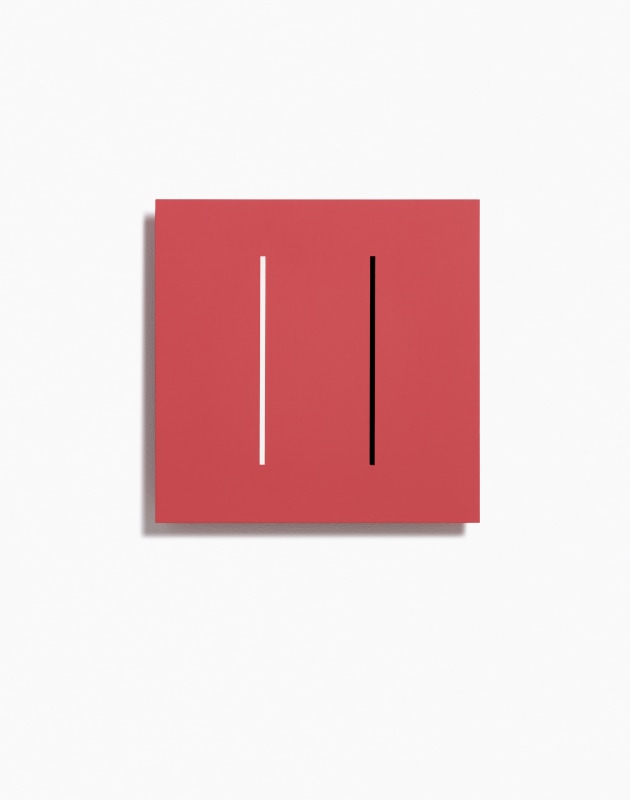 John Carter RATwo Verticals, 2000 (Completed 2020)Acrylic on plywood23 x 23 x 2 cm%3Cdiv%20class%3D%22artist%22%3E%3Cspan%20class%3D%22artist%22%3E%3Cstrong%3EJohn%20Carter%20RA%3C/strong%3E%3C/span%3E%3C/div%3E%0D%3Cdiv%20class%3D%22title%22%3E%3Cem%3ETwo%20Verticals%3C/em%3E%2C%202000%20%28Completed%202020%29%3C/div%3E%0D%3Cdiv%20class%3D%22medium%22%3EAcrylic%20on%20plywood%20%3C/div%3E%0D%3Cdiv%20class%3D%22dimensions%22%3E23%20x%2023%20x%202%20cm%3C/div%3E
John Carter RATwo Verticals, 2000 (Completed 2020)Acrylic on plywood23 x 23 x 2 cm%3Cdiv%20class%3D%22artist%22%3E%3Cspan%20class%3D%22artist%22%3E%3Cstrong%3EJohn%20Carter%20RA%3C/strong%3E%3C/span%3E%3C/div%3E%0D%3Cdiv%20class%3D%22title%22%3E%3Cem%3ETwo%20Verticals%3C/em%3E%2C%202000%20%28Completed%202020%29%3C/div%3E%0D%3Cdiv%20class%3D%22medium%22%3EAcrylic%20on%20plywood%20%3C/div%3E%0D%3Cdiv%20class%3D%22dimensions%22%3E23%20x%2023%20x%202%20cm%3C/div%3E -
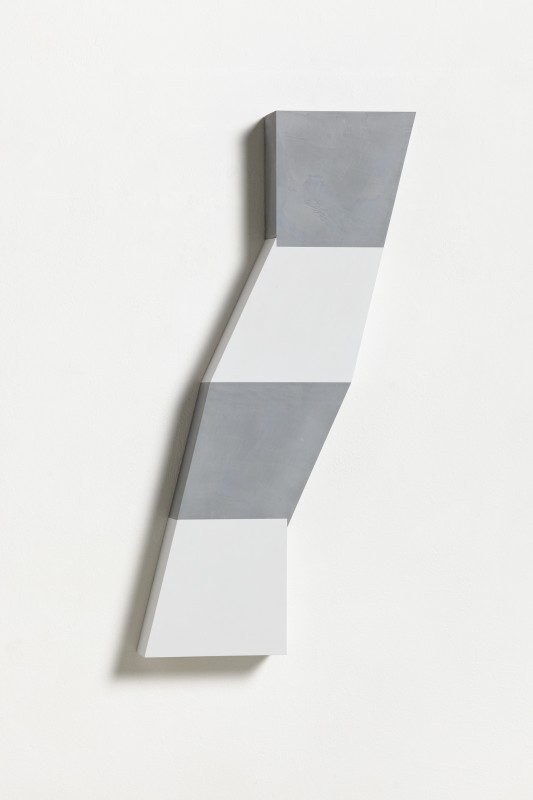 John Carter RAMeeting Point Configuration, 2000Acrylic with marble powder on board72.5 x 17 x 6 cmSigned, dated and titled verso%3Cdiv%20class%3D%22artist%22%3E%3Cspan%20class%3D%22artist%22%3E%3Cstrong%3EJohn%20Carter%20RA%3C/strong%3E%3C/span%3E%3C/div%3E%0D%3Cdiv%20class%3D%22title%22%3E%3Cem%3EMeeting%20Point%20Configuration%3C/em%3E%2C%202000%3C/div%3E%0D%3Cdiv%20class%3D%22signed_and_dated%22%3ESigned%2C%20dated%20and%20titled%20verso%3C/div%3E%0D%3Cdiv%20class%3D%22medium%22%3EAcrylic%20with%20marble%20powder%20on%20board%3C/div%3E%0D%3Cdiv%20class%3D%22dimensions%22%3E72.5%20x%2017%20x%206%20cm%3C/div%3E
John Carter RAMeeting Point Configuration, 2000Acrylic with marble powder on board72.5 x 17 x 6 cmSigned, dated and titled verso%3Cdiv%20class%3D%22artist%22%3E%3Cspan%20class%3D%22artist%22%3E%3Cstrong%3EJohn%20Carter%20RA%3C/strong%3E%3C/span%3E%3C/div%3E%0D%3Cdiv%20class%3D%22title%22%3E%3Cem%3EMeeting%20Point%20Configuration%3C/em%3E%2C%202000%3C/div%3E%0D%3Cdiv%20class%3D%22signed_and_dated%22%3ESigned%2C%20dated%20and%20titled%20verso%3C/div%3E%0D%3Cdiv%20class%3D%22medium%22%3EAcrylic%20with%20marble%20powder%20on%20board%3C/div%3E%0D%3Cdiv%20class%3D%22dimensions%22%3E72.5%20x%2017%20x%206%20cm%3C/div%3E -
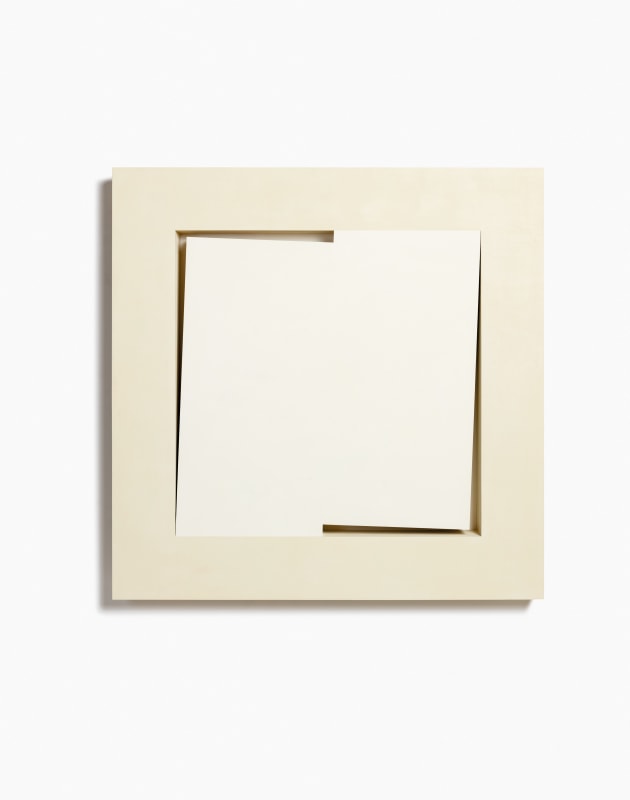 John Carter RASlots within a Frame , 2000Acrylic with marble powder on plywood100 x 100 x 10%3Cdiv%20class%3D%22artist%22%3E%3Cspan%20class%3D%22artist%22%3E%3Cstrong%3EJohn%20Carter%20RA%3C/strong%3E%3C/span%3E%3C/div%3E%0D%3Cdiv%20class%3D%22title%22%3E%3Cem%3ESlots%20within%20a%20Frame%20%3C/em%3E%2C%202000%3C/div%3E%0D%3Cdiv%20class%3D%22medium%22%3EAcrylic%20with%20marble%20powder%20on%20plywood%3C/div%3E%0D%3Cdiv%20class%3D%22dimensions%22%3E100%20x%20100%20x%2010%3C/div%3E
John Carter RASlots within a Frame , 2000Acrylic with marble powder on plywood100 x 100 x 10%3Cdiv%20class%3D%22artist%22%3E%3Cspan%20class%3D%22artist%22%3E%3Cstrong%3EJohn%20Carter%20RA%3C/strong%3E%3C/span%3E%3C/div%3E%0D%3Cdiv%20class%3D%22title%22%3E%3Cem%3ESlots%20within%20a%20Frame%20%3C/em%3E%2C%202000%3C/div%3E%0D%3Cdiv%20class%3D%22medium%22%3EAcrylic%20with%20marble%20powder%20on%20plywood%3C/div%3E%0D%3Cdiv%20class%3D%22dimensions%22%3E100%20x%20100%20x%2010%3C/div%3E -
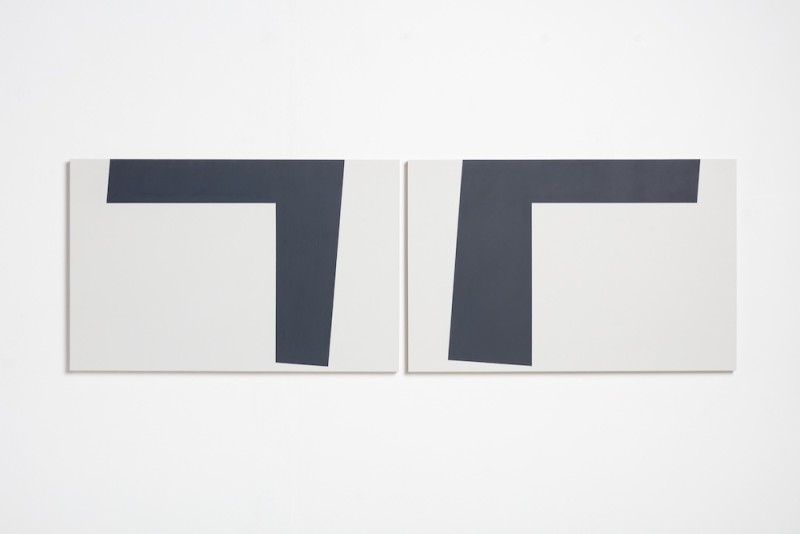 John Carter RARight Angles II, 1999/2020Acrylic with marble powder on hardboardDiptych overall length: 142.7cm
John Carter RARight Angles II, 1999/2020Acrylic with marble powder on hardboardDiptych overall length: 142.7cm
Each part: 45.7 x 71.1cm%3Cdiv%20class%3D%22artist%22%3E%3Cspan%20class%3D%22artist%22%3E%3Cstrong%3EJohn%20Carter%20RA%3C/strong%3E%3C/span%3E%3C/div%3E%0D%3Cdiv%20class%3D%22title%22%3E%3Cem%3ERight%20Angles%20II%3C/em%3E%2C%201999/2020%3C/div%3E%0D%3Cdiv%20class%3D%22medium%22%3EAcrylic%20with%20marble%20powder%20on%20hardboard%3C/div%3E%0D%3Cdiv%20class%3D%22dimensions%22%3EDiptych%20overall%20length%3A%20142.7cm%3Cbr%20/%3E%0AEach%20part%3A%2045.7%20x%2071.1cm%3C/div%3E -
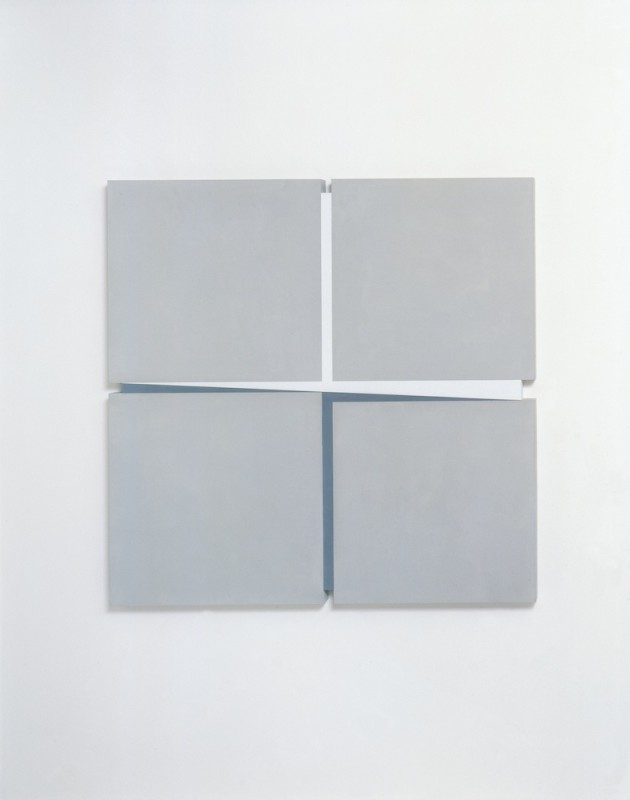 John Carter RACross Traversing a Square, 1999Acrylic with marble powder on plywood100 x 100 x 5cm%3Cdiv%20class%3D%22artist%22%3E%3Cspan%20class%3D%22artist%22%3E%3Cstrong%3EJohn%20Carter%20RA%3C/strong%3E%3C/span%3E%3C/div%3E%0D%3Cdiv%20class%3D%22title%22%3E%3Cem%3ECross%20Traversing%20a%20Square%3C/em%3E%2C%201999%3C/div%3E%0D%3Cdiv%20class%3D%22medium%22%3EAcrylic%20with%20marble%20powder%20on%20plywood%3C/div%3E%0D%3Cdiv%20class%3D%22dimensions%22%3E100%20x%20100%20x%205cm%3C/div%3E
John Carter RACross Traversing a Square, 1999Acrylic with marble powder on plywood100 x 100 x 5cm%3Cdiv%20class%3D%22artist%22%3E%3Cspan%20class%3D%22artist%22%3E%3Cstrong%3EJohn%20Carter%20RA%3C/strong%3E%3C/span%3E%3C/div%3E%0D%3Cdiv%20class%3D%22title%22%3E%3Cem%3ECross%20Traversing%20a%20Square%3C/em%3E%2C%201999%3C/div%3E%0D%3Cdiv%20class%3D%22medium%22%3EAcrylic%20with%20marble%20powder%20on%20plywood%3C/div%3E%0D%3Cdiv%20class%3D%22dimensions%22%3E100%20x%20100%20x%205cm%3C/div%3E -
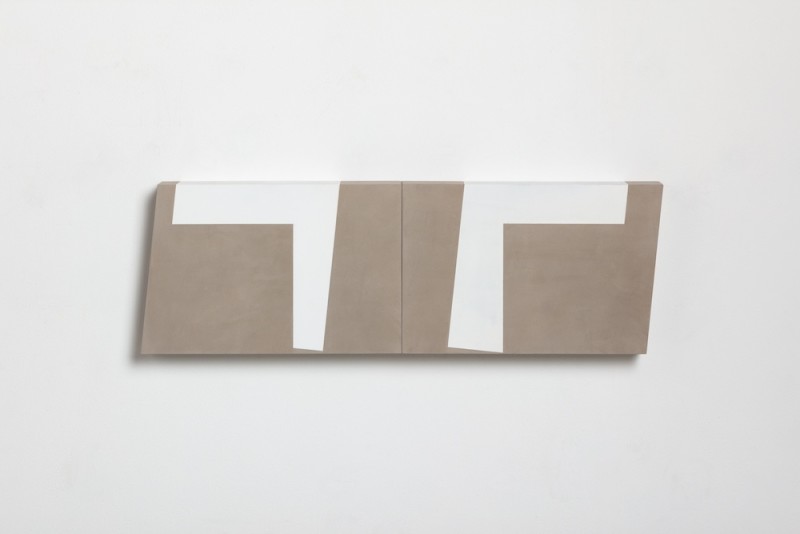 John Carter RARight-Angles (Raw Umber and White), 1999Acrylic with marble powder on board19.5 x 60.5 x 4.5cm%3Cdiv%20class%3D%22artist%22%3E%3Cspan%20class%3D%22artist%22%3E%3Cstrong%3EJohn%20Carter%20RA%3C/strong%3E%3C/span%3E%3C/div%3E%0D%3Cdiv%20class%3D%22title%22%3E%3Cem%3ERight-Angles%20%28Raw%20Umber%20and%20White%29%3C/em%3E%2C%201999%3C/div%3E%0D%3Cdiv%20class%3D%22medium%22%3EAcrylic%20with%20marble%20powder%20on%20board%3C/div%3E%0D%3Cdiv%20class%3D%22dimensions%22%3E19.5%20x%2060.5%20x%204.5cm%3C/div%3E
John Carter RARight-Angles (Raw Umber and White), 1999Acrylic with marble powder on board19.5 x 60.5 x 4.5cm%3Cdiv%20class%3D%22artist%22%3E%3Cspan%20class%3D%22artist%22%3E%3Cstrong%3EJohn%20Carter%20RA%3C/strong%3E%3C/span%3E%3C/div%3E%0D%3Cdiv%20class%3D%22title%22%3E%3Cem%3ERight-Angles%20%28Raw%20Umber%20and%20White%29%3C/em%3E%2C%201999%3C/div%3E%0D%3Cdiv%20class%3D%22medium%22%3EAcrylic%20with%20marble%20powder%20on%20board%3C/div%3E%0D%3Cdiv%20class%3D%22dimensions%22%3E19.5%20x%2060.5%20x%204.5cm%3C/div%3E -
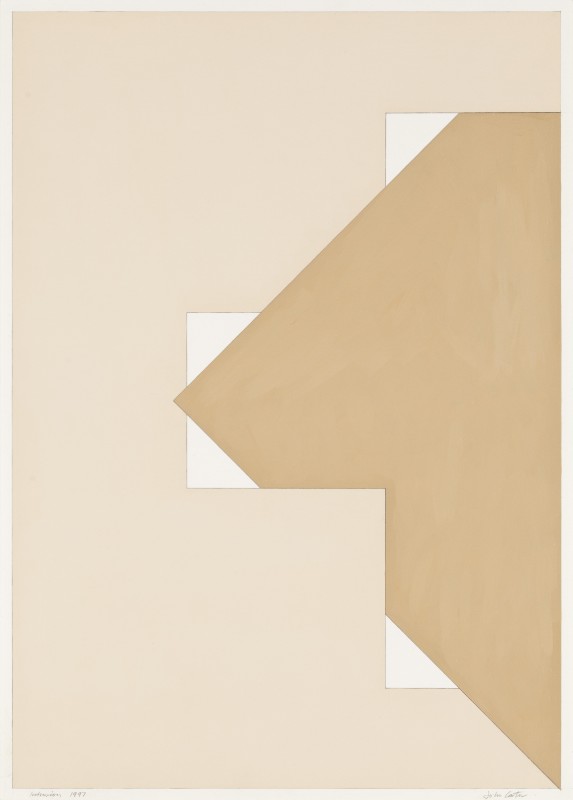 John Carter RAIntrusion, 1997Acrylic and pencil on paper66.5 x 48 cmSigned lower right; dated and titled lower left%3Cdiv%20class%3D%22artist%22%3E%3Cspan%20class%3D%22artist%22%3E%3Cstrong%3EJohn%20Carter%20RA%3C/strong%3E%3C/span%3E%3C/div%3E%0D%3Cdiv%20class%3D%22title%22%3E%3Cem%3EIntrusion%3C/em%3E%2C%201997%3C/div%3E%0D%3Cdiv%20class%3D%22signed_and_dated%22%3ESigned%20lower%20right%3B%20dated%20and%20titled%20lower%20left%3C/div%3E%0D%3Cdiv%20class%3D%22medium%22%3EAcrylic%20and%20pencil%20on%20paper%3C/div%3E%0D%3Cdiv%20class%3D%22dimensions%22%3E66.5%20x%2048%20cm%3C/div%3E
John Carter RAIntrusion, 1997Acrylic and pencil on paper66.5 x 48 cmSigned lower right; dated and titled lower left%3Cdiv%20class%3D%22artist%22%3E%3Cspan%20class%3D%22artist%22%3E%3Cstrong%3EJohn%20Carter%20RA%3C/strong%3E%3C/span%3E%3C/div%3E%0D%3Cdiv%20class%3D%22title%22%3E%3Cem%3EIntrusion%3C/em%3E%2C%201997%3C/div%3E%0D%3Cdiv%20class%3D%22signed_and_dated%22%3ESigned%20lower%20right%3B%20dated%20and%20titled%20lower%20left%3C/div%3E%0D%3Cdiv%20class%3D%22medium%22%3EAcrylic%20and%20pencil%20on%20paper%3C/div%3E%0D%3Cdiv%20class%3D%22dimensions%22%3E66.5%20x%2048%20cm%3C/div%3E -
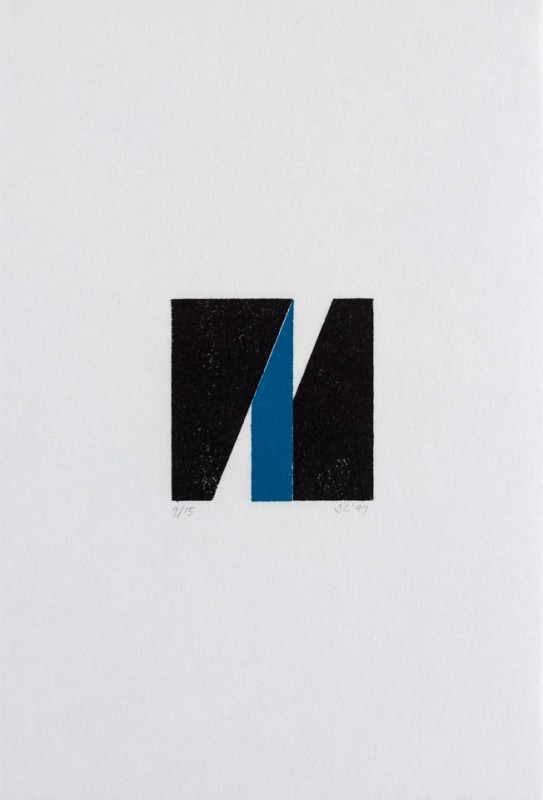 John Carter RAWithin a Square: Vertical, 1997Woodblock print28 x 19 cm (sheet)From the edition of 15 impressionsSigned, dated and numbered%3Cdiv%20class%3D%22artist%22%3E%3Cspan%20class%3D%22artist%22%3E%3Cstrong%3EJohn%20Carter%20RA%3C/strong%3E%3C/span%3E%3C/div%3E%0D%3Cdiv%20class%3D%22title%22%3E%3Cem%3EWithin%20a%20Square%3A%20Vertical%3C/em%3E%2C%201997%3C/div%3E%0D%3Cdiv%20class%3D%22signed_and_dated%22%3ESigned%2C%20dated%20and%20numbered%3C/div%3E%0D%3Cdiv%20class%3D%22medium%22%3EWoodblock%20print%20%3C/div%3E%0D%3Cdiv%20class%3D%22dimensions%22%3E28%20x%2019%20cm%20%28sheet%29%3C/div%3E%0D%3Cdiv%20class%3D%22edition_details%22%3EFrom%20the%20edition%20of%2015%20impressions%3C/div%3E
John Carter RAWithin a Square: Vertical, 1997Woodblock print28 x 19 cm (sheet)From the edition of 15 impressionsSigned, dated and numbered%3Cdiv%20class%3D%22artist%22%3E%3Cspan%20class%3D%22artist%22%3E%3Cstrong%3EJohn%20Carter%20RA%3C/strong%3E%3C/span%3E%3C/div%3E%0D%3Cdiv%20class%3D%22title%22%3E%3Cem%3EWithin%20a%20Square%3A%20Vertical%3C/em%3E%2C%201997%3C/div%3E%0D%3Cdiv%20class%3D%22signed_and_dated%22%3ESigned%2C%20dated%20and%20numbered%3C/div%3E%0D%3Cdiv%20class%3D%22medium%22%3EWoodblock%20print%20%3C/div%3E%0D%3Cdiv%20class%3D%22dimensions%22%3E28%20x%2019%20cm%20%28sheet%29%3C/div%3E%0D%3Cdiv%20class%3D%22edition_details%22%3EFrom%20the%20edition%20of%2015%20impressions%3C/div%3E -
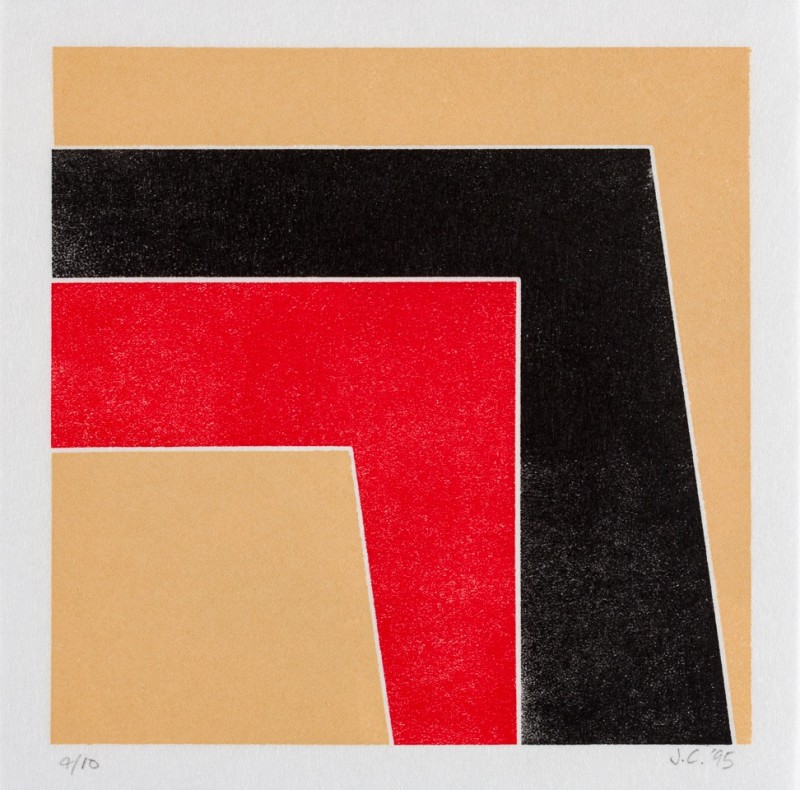 John Carter RAAngles within a Square, 1995Woodblock print19 x 19 cm (sheet)From the edition of 10 impressionsSigned, dated and numbered%3Cdiv%20class%3D%22artist%22%3E%3Cspan%20class%3D%22artist%22%3E%3Cstrong%3EJohn%20Carter%20RA%3C/strong%3E%3C/span%3E%3C/div%3E%0D%3Cdiv%20class%3D%22title%22%3E%3Cem%3EAngles%20within%20a%20Square%3C/em%3E%2C%201995%3C/div%3E%0D%3Cdiv%20class%3D%22signed_and_dated%22%3ESigned%2C%20dated%20and%20numbered%3C/div%3E%0D%3Cdiv%20class%3D%22medium%22%3EWoodblock%20print%20%3C/div%3E%0D%3Cdiv%20class%3D%22dimensions%22%3E19%20x%2019%20cm%20%28sheet%29%3C/div%3E%0D%3Cdiv%20class%3D%22edition_details%22%3EFrom%20the%20edition%20of%2010%20impressions%3C/div%3E
John Carter RAAngles within a Square, 1995Woodblock print19 x 19 cm (sheet)From the edition of 10 impressionsSigned, dated and numbered%3Cdiv%20class%3D%22artist%22%3E%3Cspan%20class%3D%22artist%22%3E%3Cstrong%3EJohn%20Carter%20RA%3C/strong%3E%3C/span%3E%3C/div%3E%0D%3Cdiv%20class%3D%22title%22%3E%3Cem%3EAngles%20within%20a%20Square%3C/em%3E%2C%201995%3C/div%3E%0D%3Cdiv%20class%3D%22signed_and_dated%22%3ESigned%2C%20dated%20and%20numbered%3C/div%3E%0D%3Cdiv%20class%3D%22medium%22%3EWoodblock%20print%20%3C/div%3E%0D%3Cdiv%20class%3D%22dimensions%22%3E19%20x%2019%20cm%20%28sheet%29%3C/div%3E%0D%3Cdiv%20class%3D%22edition_details%22%3EFrom%20the%20edition%20of%2010%20impressions%3C/div%3E -
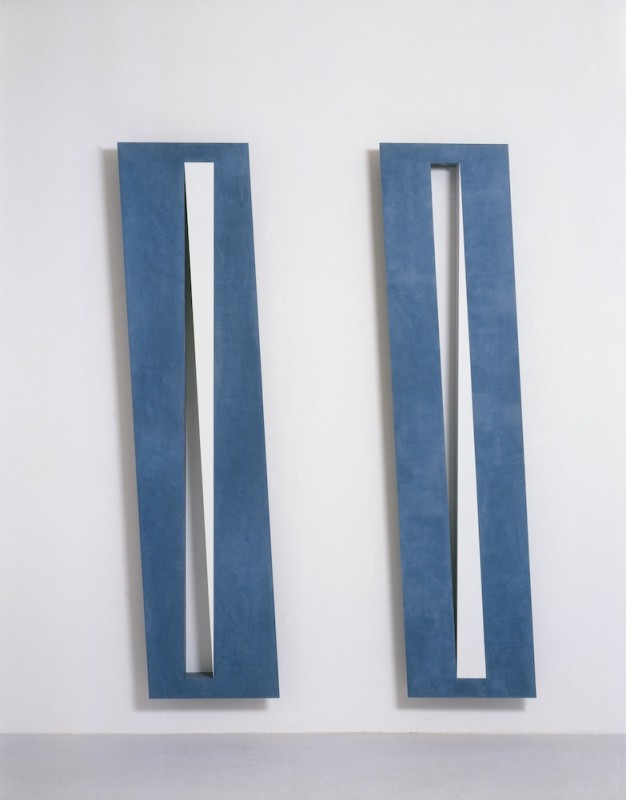 John Carter RADiagonal Slice, 1995Acrylic with marble powder on plywoodEach part: 226 x 66 x 12cm%3Cdiv%20class%3D%22artist%22%3E%3Cspan%20class%3D%22artist%22%3E%3Cstrong%3EJohn%20Carter%20RA%3C/strong%3E%3C/span%3E%3C/div%3E%0D%3Cdiv%20class%3D%22title%22%3E%3Cem%3EDiagonal%20Slice%3C/em%3E%2C%201995%3C/div%3E%0D%3Cdiv%20class%3D%22medium%22%3EAcrylic%20with%20marble%20powder%20on%20plywood%3C/div%3E%0D%3Cdiv%20class%3D%22dimensions%22%3EEach%20part%3A%20226%20x%2066%20x%2012cm%3C/div%3E
John Carter RADiagonal Slice, 1995Acrylic with marble powder on plywoodEach part: 226 x 66 x 12cm%3Cdiv%20class%3D%22artist%22%3E%3Cspan%20class%3D%22artist%22%3E%3Cstrong%3EJohn%20Carter%20RA%3C/strong%3E%3C/span%3E%3C/div%3E%0D%3Cdiv%20class%3D%22title%22%3E%3Cem%3EDiagonal%20Slice%3C/em%3E%2C%201995%3C/div%3E%0D%3Cdiv%20class%3D%22medium%22%3EAcrylic%20with%20marble%20powder%20on%20plywood%3C/div%3E%0D%3Cdiv%20class%3D%22dimensions%22%3EEach%20part%3A%20226%20x%2066%20x%2012cm%3C/div%3E -
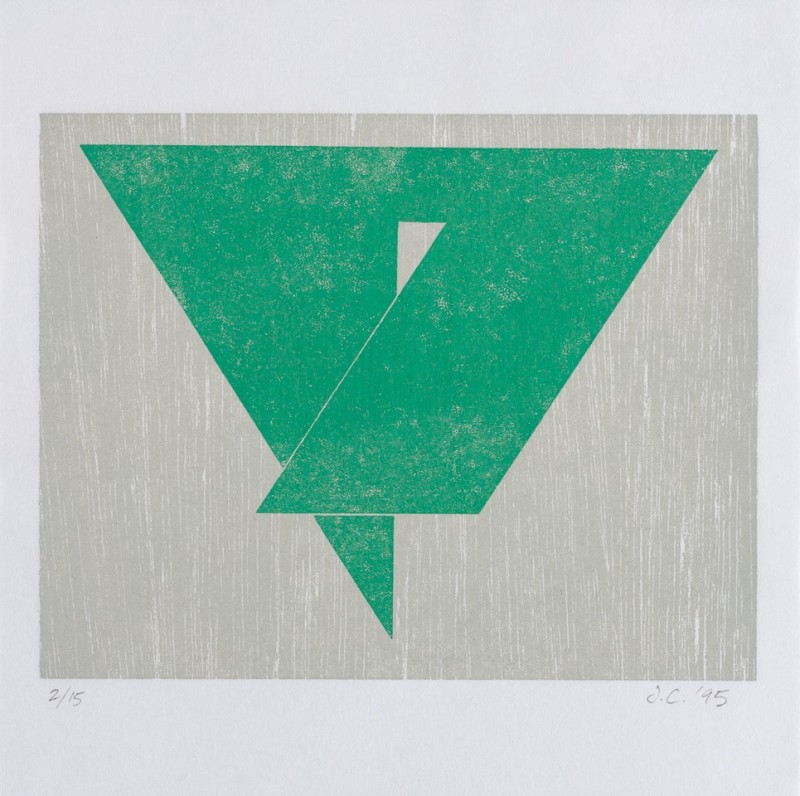 John Carter RATriangle: Enclosed Shape, 1995Woodblock print19 x 19 cm (sheet)From the edition of 15 impressionsSigned, dated and numbered%3Cdiv%20class%3D%22artist%22%3E%3Cspan%20class%3D%22artist%22%3E%3Cstrong%3EJohn%20Carter%20RA%3C/strong%3E%3C/span%3E%3C/div%3E%0D%3Cdiv%20class%3D%22title%22%3E%3Cem%3ETriangle%3A%20Enclosed%20Shape%3C/em%3E%2C%201995%3C/div%3E%0D%3Cdiv%20class%3D%22signed_and_dated%22%3ESigned%2C%20dated%20and%20numbered%3C/div%3E%0D%3Cdiv%20class%3D%22medium%22%3EWoodblock%20print%20%3C/div%3E%0D%3Cdiv%20class%3D%22dimensions%22%3E19%20x%2019%20cm%20%28sheet%29%3C/div%3E%0D%3Cdiv%20class%3D%22edition_details%22%3EFrom%20the%20edition%20of%2015%20impressions%3C/div%3E
John Carter RATriangle: Enclosed Shape, 1995Woodblock print19 x 19 cm (sheet)From the edition of 15 impressionsSigned, dated and numbered%3Cdiv%20class%3D%22artist%22%3E%3Cspan%20class%3D%22artist%22%3E%3Cstrong%3EJohn%20Carter%20RA%3C/strong%3E%3C/span%3E%3C/div%3E%0D%3Cdiv%20class%3D%22title%22%3E%3Cem%3ETriangle%3A%20Enclosed%20Shape%3C/em%3E%2C%201995%3C/div%3E%0D%3Cdiv%20class%3D%22signed_and_dated%22%3ESigned%2C%20dated%20and%20numbered%3C/div%3E%0D%3Cdiv%20class%3D%22medium%22%3EWoodblock%20print%20%3C/div%3E%0D%3Cdiv%20class%3D%22dimensions%22%3E19%20x%2019%20cm%20%28sheet%29%3C/div%3E%0D%3Cdiv%20class%3D%22edition_details%22%3EFrom%20the%20edition%20of%2015%20impressions%3C/div%3E -
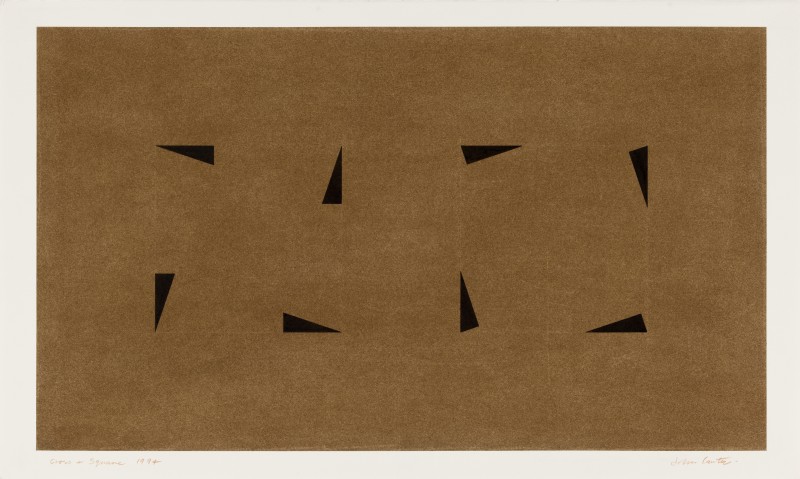 John Carter RACross and Square, 1994Pigment with ink on paper38.5 x 64 cmSigned lower right; dated and titled lower left%3Cdiv%20class%3D%22artist%22%3E%3Cspan%20class%3D%22artist%22%3E%3Cstrong%3EJohn%20Carter%20RA%3C/strong%3E%3C/span%3E%3C/div%3E%0D%3Cdiv%20class%3D%22title%22%3E%3Cem%3ECross%20and%20Square%3C/em%3E%2C%201994%3C/div%3E%0D%3Cdiv%20class%3D%22signed_and_dated%22%3ESigned%20lower%20right%3B%20dated%20and%20titled%20lower%20left%3C/div%3E%0D%3Cdiv%20class%3D%22medium%22%3EPigment%20with%20ink%20on%20paper%3C/div%3E%0D%3Cdiv%20class%3D%22dimensions%22%3E38.5%20x%2064%20cm%3C/div%3E
John Carter RACross and Square, 1994Pigment with ink on paper38.5 x 64 cmSigned lower right; dated and titled lower left%3Cdiv%20class%3D%22artist%22%3E%3Cspan%20class%3D%22artist%22%3E%3Cstrong%3EJohn%20Carter%20RA%3C/strong%3E%3C/span%3E%3C/div%3E%0D%3Cdiv%20class%3D%22title%22%3E%3Cem%3ECross%20and%20Square%3C/em%3E%2C%201994%3C/div%3E%0D%3Cdiv%20class%3D%22signed_and_dated%22%3ESigned%20lower%20right%3B%20dated%20and%20titled%20lower%20left%3C/div%3E%0D%3Cdiv%20class%3D%22medium%22%3EPigment%20with%20ink%20on%20paper%3C/div%3E%0D%3Cdiv%20class%3D%22dimensions%22%3E38.5%20x%2064%20cm%3C/div%3E -
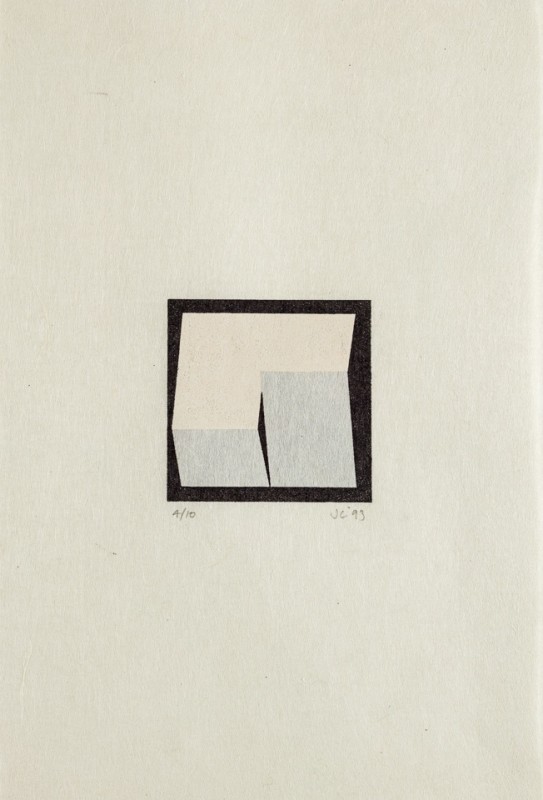 John Carter RAIllusion, 1993Woodblock print28 x 19 cm (sheet)From the edition of 10 impressionsSigned, dated and numbered%3Cdiv%20class%3D%22artist%22%3E%3Cspan%20class%3D%22artist%22%3E%3Cstrong%3EJohn%20Carter%20RA%3C/strong%3E%3C/span%3E%3C/div%3E%0D%3Cdiv%20class%3D%22title%22%3E%3Cem%3EIllusion%3C/em%3E%2C%201993%3C/div%3E%0D%3Cdiv%20class%3D%22signed_and_dated%22%3ESigned%2C%20dated%20and%20numbered%3C/div%3E%0D%3Cdiv%20class%3D%22medium%22%3EWoodblock%20print%20%3C/div%3E%0D%3Cdiv%20class%3D%22dimensions%22%3E28%20x%2019%20cm%20%28sheet%29%3C/div%3E%0D%3Cdiv%20class%3D%22edition_details%22%3EFrom%20the%20edition%20of%2010%20impressions%3C/div%3E
John Carter RAIllusion, 1993Woodblock print28 x 19 cm (sheet)From the edition of 10 impressionsSigned, dated and numbered%3Cdiv%20class%3D%22artist%22%3E%3Cspan%20class%3D%22artist%22%3E%3Cstrong%3EJohn%20Carter%20RA%3C/strong%3E%3C/span%3E%3C/div%3E%0D%3Cdiv%20class%3D%22title%22%3E%3Cem%3EIllusion%3C/em%3E%2C%201993%3C/div%3E%0D%3Cdiv%20class%3D%22signed_and_dated%22%3ESigned%2C%20dated%20and%20numbered%3C/div%3E%0D%3Cdiv%20class%3D%22medium%22%3EWoodblock%20print%20%3C/div%3E%0D%3Cdiv%20class%3D%22dimensions%22%3E28%20x%2019%20cm%20%28sheet%29%3C/div%3E%0D%3Cdiv%20class%3D%22edition_details%22%3EFrom%20the%20edition%20of%2010%20impressions%3C/div%3E -
 John Carter RAMaquette for ‘Enclosed Spaces: Equal Areas I’, 1992-94White paint and filler on plywood25 x 42 x 3.5cm%3Cdiv%20class%3D%22artist%22%3E%3Cspan%20class%3D%22artist%22%3E%3Cstrong%3EJohn%20Carter%20RA%3C%2Fstrong%3E%3C%2Fspan%3E%3C%2Fdiv%3E%0D%3Cdiv%20class%3D%22title%22%3E%3Cem%3EMaquette%20for%20%E2%80%98Enclosed%20Spaces%3A%20Equal%20Areas%20I%E2%80%99%3C%2Fem%3E%2C%201992-94%3C%2Fdiv%3E%0D%3Cdiv%20class%3D%22medium%22%3EWhite%20paint%20and%20filler%20on%20plywood%3C%2Fdiv%3E%0D%3Cdiv%20class%3D%22dimensions%22%3E25%20x%2042%20x%203.5cm%3C%2Fdiv%3E
John Carter RAMaquette for ‘Enclosed Spaces: Equal Areas I’, 1992-94White paint and filler on plywood25 x 42 x 3.5cm%3Cdiv%20class%3D%22artist%22%3E%3Cspan%20class%3D%22artist%22%3E%3Cstrong%3EJohn%20Carter%20RA%3C%2Fstrong%3E%3C%2Fspan%3E%3C%2Fdiv%3E%0D%3Cdiv%20class%3D%22title%22%3E%3Cem%3EMaquette%20for%20%E2%80%98Enclosed%20Spaces%3A%20Equal%20Areas%20I%E2%80%99%3C%2Fem%3E%2C%201992-94%3C%2Fdiv%3E%0D%3Cdiv%20class%3D%22medium%22%3EWhite%20paint%20and%20filler%20on%20plywood%3C%2Fdiv%3E%0D%3Cdiv%20class%3D%22dimensions%22%3E25%20x%2042%20x%203.5cm%3C%2Fdiv%3E -
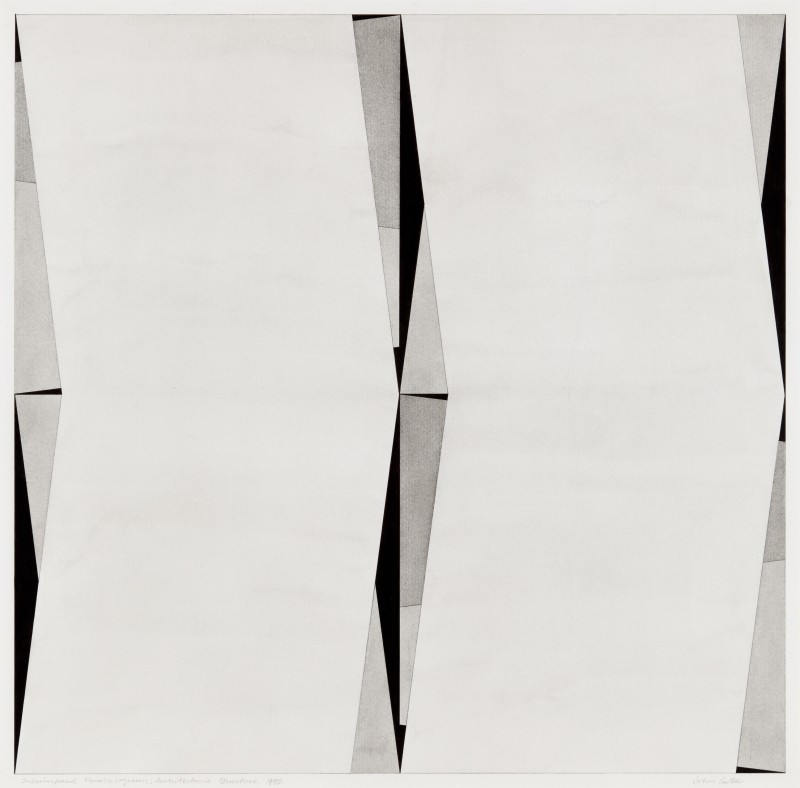 John Carter RASuperimposed Parallelograms: Architectonic Structure, 1992Ink wash on paper49 x 50 cmSigned lower right; dated and titled lower left%3Cdiv%20class%3D%22artist%22%3E%3Cspan%20class%3D%22artist%22%3E%3Cstrong%3EJohn%20Carter%20RA%3C/strong%3E%3C/span%3E%3C/div%3E%0D%3Cdiv%20class%3D%22title%22%3E%3Cem%3ESuperimposed%20Parallelograms%3A%20Architectonic%20Structure%3C/em%3E%2C%201992%3C/div%3E%0D%3Cdiv%20class%3D%22signed_and_dated%22%3ESigned%20lower%20right%3B%20dated%20and%20titled%20lower%20left%3C/div%3E%0D%3Cdiv%20class%3D%22medium%22%3EInk%20wash%20on%20paper%3C/div%3E%0D%3Cdiv%20class%3D%22dimensions%22%3E49%20x%2050%20cm%3C/div%3E
John Carter RASuperimposed Parallelograms: Architectonic Structure, 1992Ink wash on paper49 x 50 cmSigned lower right; dated and titled lower left%3Cdiv%20class%3D%22artist%22%3E%3Cspan%20class%3D%22artist%22%3E%3Cstrong%3EJohn%20Carter%20RA%3C/strong%3E%3C/span%3E%3C/div%3E%0D%3Cdiv%20class%3D%22title%22%3E%3Cem%3ESuperimposed%20Parallelograms%3A%20Architectonic%20Structure%3C/em%3E%2C%201992%3C/div%3E%0D%3Cdiv%20class%3D%22signed_and_dated%22%3ESigned%20lower%20right%3B%20dated%20and%20titled%20lower%20left%3C/div%3E%0D%3Cdiv%20class%3D%22medium%22%3EInk%20wash%20on%20paper%3C/div%3E%0D%3Cdiv%20class%3D%22dimensions%22%3E49%20x%2050%20cm%3C/div%3E -
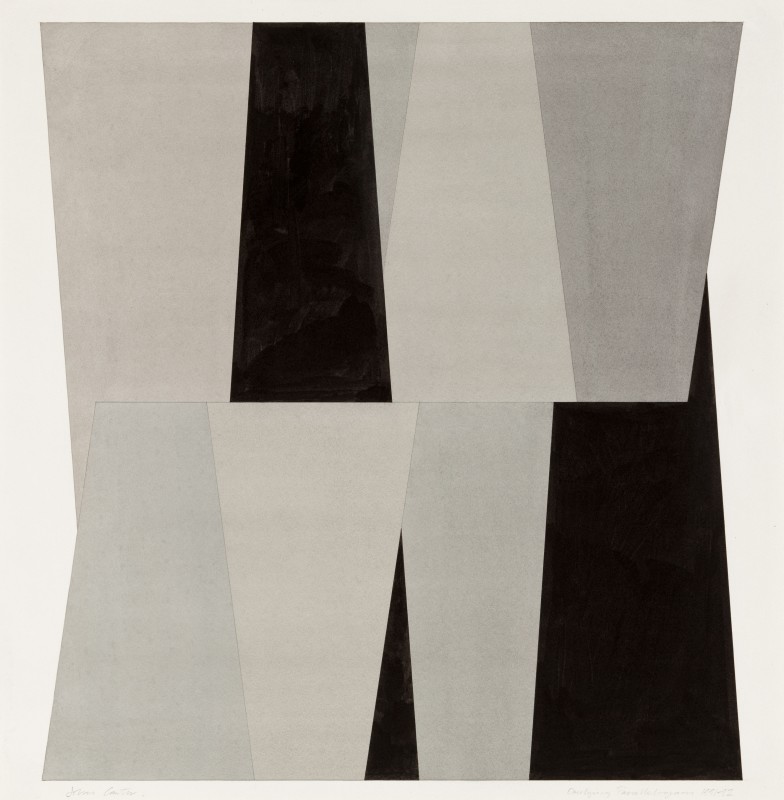 John Carter RAOverlying Parallelogram, 1991/92Watercolour on paper52.8 x 51.8 cmSigned lower left; dated and titled lower right%3Cdiv%20class%3D%22artist%22%3E%3Cspan%20class%3D%22artist%22%3E%3Cstrong%3EJohn%20Carter%20RA%3C/strong%3E%3C/span%3E%3C/div%3E%0D%3Cdiv%20class%3D%22title%22%3E%3Cem%3EOverlying%20Parallelogram%3C/em%3E%2C%201991/92%3C/div%3E%0D%3Cdiv%20class%3D%22signed_and_dated%22%3ESigned%20lower%20left%3B%20dated%20and%20titled%20lower%20right%3C/div%3E%0D%3Cdiv%20class%3D%22medium%22%3EWatercolour%20on%20paper%3C/div%3E%0D%3Cdiv%20class%3D%22dimensions%22%3E52.8%20x%2051.8%20cm%3C/div%3E
John Carter RAOverlying Parallelogram, 1991/92Watercolour on paper52.8 x 51.8 cmSigned lower left; dated and titled lower right%3Cdiv%20class%3D%22artist%22%3E%3Cspan%20class%3D%22artist%22%3E%3Cstrong%3EJohn%20Carter%20RA%3C/strong%3E%3C/span%3E%3C/div%3E%0D%3Cdiv%20class%3D%22title%22%3E%3Cem%3EOverlying%20Parallelogram%3C/em%3E%2C%201991/92%3C/div%3E%0D%3Cdiv%20class%3D%22signed_and_dated%22%3ESigned%20lower%20left%3B%20dated%20and%20titled%20lower%20right%3C/div%3E%0D%3Cdiv%20class%3D%22medium%22%3EWatercolour%20on%20paper%3C/div%3E%0D%3Cdiv%20class%3D%22dimensions%22%3E52.8%20x%2051.8%20cm%3C/div%3E -
 John Carter RAIntersecting Elements II, 1991Acrylic with marble powder on plywood60 x 30 x 10cm%3Cdiv%20class%3D%22artist%22%3E%3Cspan%20class%3D%22artist%22%3E%3Cstrong%3EJohn%20Carter%20RA%3C/strong%3E%3C/span%3E%3C/div%3E%0D%3Cdiv%20class%3D%22title%22%3E%3Cem%3EIntersecting%20Elements%20II%3C/em%3E%2C%201991%3C/div%3E%0D%3Cdiv%20class%3D%22medium%22%3EAcrylic%20with%20marble%20powder%20on%20plywood%3C/div%3E%0D%3Cdiv%20class%3D%22dimensions%22%3E60%20x%2030%20x%2010cm%3C/div%3E
John Carter RAIntersecting Elements II, 1991Acrylic with marble powder on plywood60 x 30 x 10cm%3Cdiv%20class%3D%22artist%22%3E%3Cspan%20class%3D%22artist%22%3E%3Cstrong%3EJohn%20Carter%20RA%3C/strong%3E%3C/span%3E%3C/div%3E%0D%3Cdiv%20class%3D%22title%22%3E%3Cem%3EIntersecting%20Elements%20II%3C/em%3E%2C%201991%3C/div%3E%0D%3Cdiv%20class%3D%22medium%22%3EAcrylic%20with%20marble%20powder%20on%20plywood%3C/div%3E%0D%3Cdiv%20class%3D%22dimensions%22%3E60%20x%2030%20x%2010cm%3C/div%3E -
 John Carter RASuperimposed Elements: Horizontal Formation (Blues), 1991Acrylic with marble powder on plywood25 x 50 x 7.3cm%3Cdiv%20class%3D%22artist%22%3E%3Cspan%20class%3D%22artist%22%3E%3Cstrong%3EJohn%20Carter%20RA%3C/strong%3E%3C/span%3E%3C/div%3E%0D%3Cdiv%20class%3D%22title%22%3E%3Cem%3ESuperimposed%20Elements%3A%20Horizontal%20Formation%20%28Blues%29%3C/em%3E%2C%201991%3C/div%3E%0D%3Cdiv%20class%3D%22medium%22%3EAcrylic%20with%20marble%20powder%20on%20plywood%3C/div%3E%0D%3Cdiv%20class%3D%22dimensions%22%3E25%20x%2050%20x%207.3cm%3C/div%3E
John Carter RASuperimposed Elements: Horizontal Formation (Blues), 1991Acrylic with marble powder on plywood25 x 50 x 7.3cm%3Cdiv%20class%3D%22artist%22%3E%3Cspan%20class%3D%22artist%22%3E%3Cstrong%3EJohn%20Carter%20RA%3C/strong%3E%3C/span%3E%3C/div%3E%0D%3Cdiv%20class%3D%22title%22%3E%3Cem%3ESuperimposed%20Elements%3A%20Horizontal%20Formation%20%28Blues%29%3C/em%3E%2C%201991%3C/div%3E%0D%3Cdiv%20class%3D%22medium%22%3EAcrylic%20with%20marble%20powder%20on%20plywood%3C/div%3E%0D%3Cdiv%20class%3D%22dimensions%22%3E25%20x%2050%20x%207.3cm%3C/div%3E -
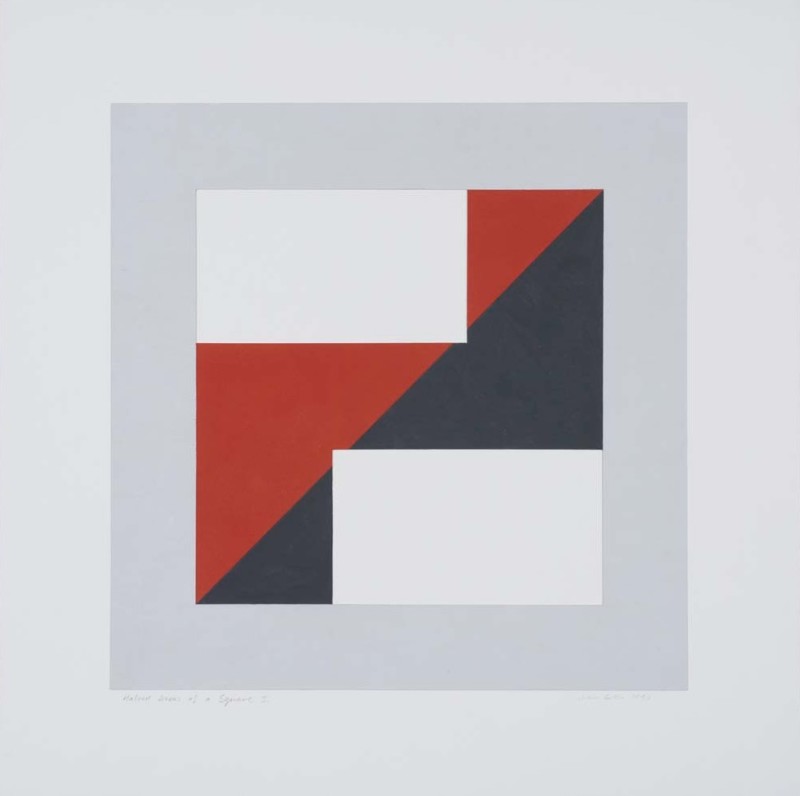 John Carter RAHalved Areas of a Square I, 1990Acrylic and card on paper47 x 47cm%3Cdiv%20class%3D%22artist%22%3E%3Cspan%20class%3D%22artist%22%3E%3Cstrong%3EJohn%20Carter%20RA%3C/strong%3E%3C/span%3E%3C/div%3E%0D%3Cdiv%20class%3D%22title%22%3E%3Cem%3EHalved%20Areas%20of%20a%20Square%20I%3C/em%3E%2C%201990%3C/div%3E%0D%3Cdiv%20class%3D%22medium%22%3EAcrylic%20and%20card%20on%20paper%3C/div%3E%0D%3Cdiv%20class%3D%22dimensions%22%3E47%20x%2047cm%3C/div%3E
John Carter RAHalved Areas of a Square I, 1990Acrylic and card on paper47 x 47cm%3Cdiv%20class%3D%22artist%22%3E%3Cspan%20class%3D%22artist%22%3E%3Cstrong%3EJohn%20Carter%20RA%3C/strong%3E%3C/span%3E%3C/div%3E%0D%3Cdiv%20class%3D%22title%22%3E%3Cem%3EHalved%20Areas%20of%20a%20Square%20I%3C/em%3E%2C%201990%3C/div%3E%0D%3Cdiv%20class%3D%22medium%22%3EAcrylic%20and%20card%20on%20paper%3C/div%3E%0D%3Cdiv%20class%3D%22dimensions%22%3E47%20x%2047cm%3C/div%3E -
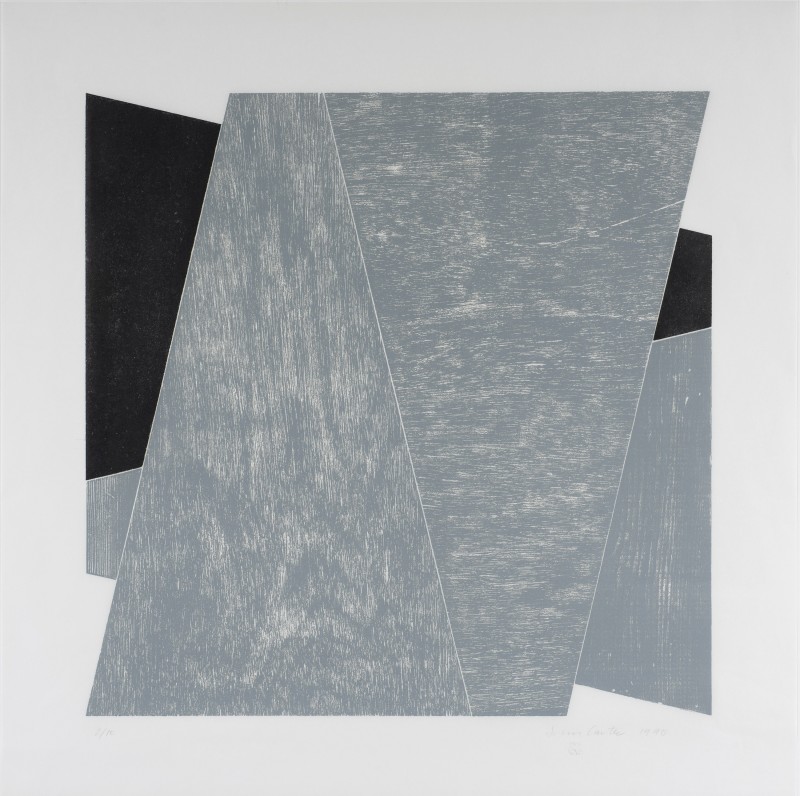 John Carter RASuperimposed Elements in a Square I, 1990Woodblock print56 x 56 cm (sheet)From the edition of 10 impressionsSigned, dated, titled and numbered%3Cdiv%20class%3D%22artist%22%3E%3Cspan%20class%3D%22artist%22%3E%3Cstrong%3EJohn%20Carter%20RA%3C/strong%3E%3C/span%3E%3C/div%3E%0D%3Cdiv%20class%3D%22title%22%3E%3Cem%3ESuperimposed%20Elements%20in%20a%20Square%20I%3C/em%3E%2C%201990%3C/div%3E%0D%3Cdiv%20class%3D%22signed_and_dated%22%3ESigned%2C%20dated%2C%20titled%20and%20numbered%3C/div%3E%0D%3Cdiv%20class%3D%22medium%22%3EWoodblock%20print%3C/div%3E%0D%3Cdiv%20class%3D%22dimensions%22%3E56%20x%2056%20cm%20%28sheet%29%3C/div%3E%0D%3Cdiv%20class%3D%22edition_details%22%3EFrom%20the%20edition%20of%2010%20impressions%20%3C/div%3E
John Carter RASuperimposed Elements in a Square I, 1990Woodblock print56 x 56 cm (sheet)From the edition of 10 impressionsSigned, dated, titled and numbered%3Cdiv%20class%3D%22artist%22%3E%3Cspan%20class%3D%22artist%22%3E%3Cstrong%3EJohn%20Carter%20RA%3C/strong%3E%3C/span%3E%3C/div%3E%0D%3Cdiv%20class%3D%22title%22%3E%3Cem%3ESuperimposed%20Elements%20in%20a%20Square%20I%3C/em%3E%2C%201990%3C/div%3E%0D%3Cdiv%20class%3D%22signed_and_dated%22%3ESigned%2C%20dated%2C%20titled%20and%20numbered%3C/div%3E%0D%3Cdiv%20class%3D%22medium%22%3EWoodblock%20print%3C/div%3E%0D%3Cdiv%20class%3D%22dimensions%22%3E56%20x%2056%20cm%20%28sheet%29%3C/div%3E%0D%3Cdiv%20class%3D%22edition_details%22%3EFrom%20the%20edition%20of%2010%20impressions%20%3C/div%3E -
 John Carter RASuperimposed Elements in a Square I & II, 1990Acrylic with marble powder on plywoodEach part: 100 x 100 x 15cm%3Cdiv%20class%3D%22artist%22%3E%3Cspan%20class%3D%22artist%22%3E%3Cstrong%3EJohn%20Carter%20RA%3C/strong%3E%3C/span%3E%3C/div%3E%0D%3Cdiv%20class%3D%22title%22%3E%3Cem%3ESuperimposed%20Elements%20in%20a%20Square%20I%20%26%20II%3C/em%3E%2C%201990%3C/div%3E%0D%3Cdiv%20class%3D%22medium%22%3EAcrylic%20with%20marble%20powder%20on%20plywood%3C/div%3E%0D%3Cdiv%20class%3D%22dimensions%22%3EEach%20part%3A%20100%20x%20100%20x%2015cm%3C/div%3E
John Carter RASuperimposed Elements in a Square I & II, 1990Acrylic with marble powder on plywoodEach part: 100 x 100 x 15cm%3Cdiv%20class%3D%22artist%22%3E%3Cspan%20class%3D%22artist%22%3E%3Cstrong%3EJohn%20Carter%20RA%3C/strong%3E%3C/span%3E%3C/div%3E%0D%3Cdiv%20class%3D%22title%22%3E%3Cem%3ESuperimposed%20Elements%20in%20a%20Square%20I%20%26%20II%3C/em%3E%2C%201990%3C/div%3E%0D%3Cdiv%20class%3D%22medium%22%3EAcrylic%20with%20marble%20powder%20on%20plywood%3C/div%3E%0D%3Cdiv%20class%3D%22dimensions%22%3EEach%20part%3A%20100%20x%20100%20x%2015cm%3C/div%3E -
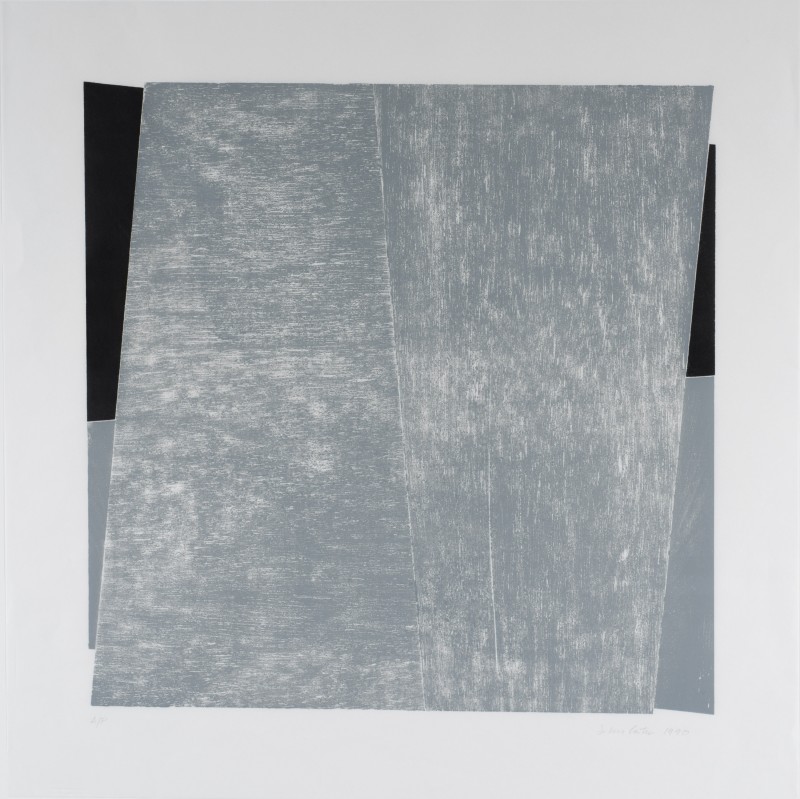 John Carter RASuperimposed Elements in a Square II, 1990Woodblock print56 x 56 cm (sheet)From the edition of 10 impressionsSigned, dated, titled and numbered%3Cdiv%20class%3D%22artist%22%3E%3Cspan%20class%3D%22artist%22%3E%3Cstrong%3EJohn%20Carter%20RA%3C/strong%3E%3C/span%3E%3C/div%3E%0D%3Cdiv%20class%3D%22title%22%3E%3Cem%3ESuperimposed%20Elements%20in%20a%20Square%20II%3C/em%3E%2C%201990%3C/div%3E%0D%3Cdiv%20class%3D%22signed_and_dated%22%3ESigned%2C%20dated%2C%20titled%20and%20numbered%3C/div%3E%0D%3Cdiv%20class%3D%22medium%22%3EWoodblock%20print%3C/div%3E%0D%3Cdiv%20class%3D%22dimensions%22%3E56%20x%2056%20cm%20%28sheet%29%3C/div%3E%0D%3Cdiv%20class%3D%22edition_details%22%3EFrom%20the%20edition%20of%2010%20impressions%20%3C/div%3E
John Carter RASuperimposed Elements in a Square II, 1990Woodblock print56 x 56 cm (sheet)From the edition of 10 impressionsSigned, dated, titled and numbered%3Cdiv%20class%3D%22artist%22%3E%3Cspan%20class%3D%22artist%22%3E%3Cstrong%3EJohn%20Carter%20RA%3C/strong%3E%3C/span%3E%3C/div%3E%0D%3Cdiv%20class%3D%22title%22%3E%3Cem%3ESuperimposed%20Elements%20in%20a%20Square%20II%3C/em%3E%2C%201990%3C/div%3E%0D%3Cdiv%20class%3D%22signed_and_dated%22%3ESigned%2C%20dated%2C%20titled%20and%20numbered%3C/div%3E%0D%3Cdiv%20class%3D%22medium%22%3EWoodblock%20print%3C/div%3E%0D%3Cdiv%20class%3D%22dimensions%22%3E56%20x%2056%20cm%20%28sheet%29%3C/div%3E%0D%3Cdiv%20class%3D%22edition_details%22%3EFrom%20the%20edition%20of%2010%20impressions%20%3C/div%3E -
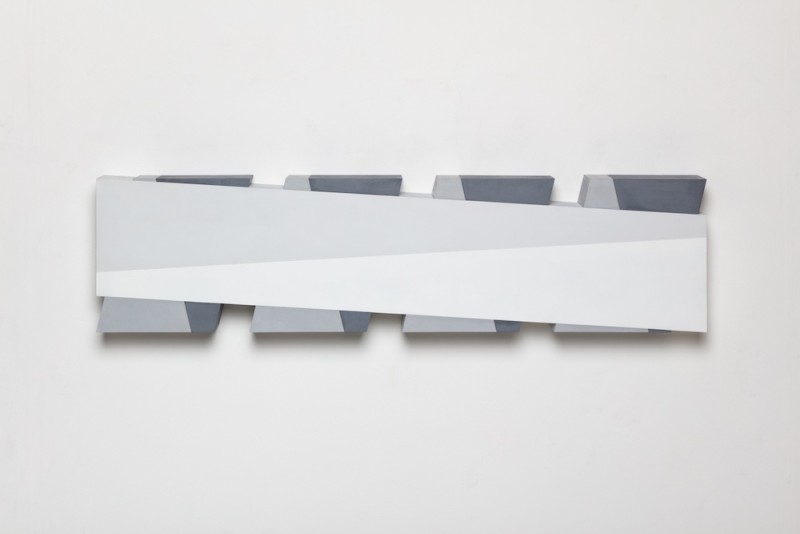 John Carter RASuperimposed Elements: Four Squares I, 1989/90Acrylic with marble powder on plywood24 x 96 x 9.5cm%3Cdiv%20class%3D%22artist%22%3E%3Cspan%20class%3D%22artist%22%3E%3Cstrong%3EJohn%20Carter%20RA%3C/strong%3E%3C/span%3E%3C/div%3E%0D%3Cdiv%20class%3D%22title%22%3E%3Cem%3ESuperimposed%20Elements%3A%20Four%20Squares%20I%3C/em%3E%2C%201989/90%3C/div%3E%0D%3Cdiv%20class%3D%22medium%22%3EAcrylic%20with%20marble%20powder%20on%20plywood%3C/div%3E%0D%3Cdiv%20class%3D%22dimensions%22%3E24%20x%2096%20x%209.5cm%3C/div%3E
John Carter RASuperimposed Elements: Four Squares I, 1989/90Acrylic with marble powder on plywood24 x 96 x 9.5cm%3Cdiv%20class%3D%22artist%22%3E%3Cspan%20class%3D%22artist%22%3E%3Cstrong%3EJohn%20Carter%20RA%3C/strong%3E%3C/span%3E%3C/div%3E%0D%3Cdiv%20class%3D%22title%22%3E%3Cem%3ESuperimposed%20Elements%3A%20Four%20Squares%20I%3C/em%3E%2C%201989/90%3C/div%3E%0D%3Cdiv%20class%3D%22medium%22%3EAcrylic%20with%20marble%20powder%20on%20plywood%3C/div%3E%0D%3Cdiv%20class%3D%22dimensions%22%3E24%20x%2096%20x%209.5cm%3C/div%3E -
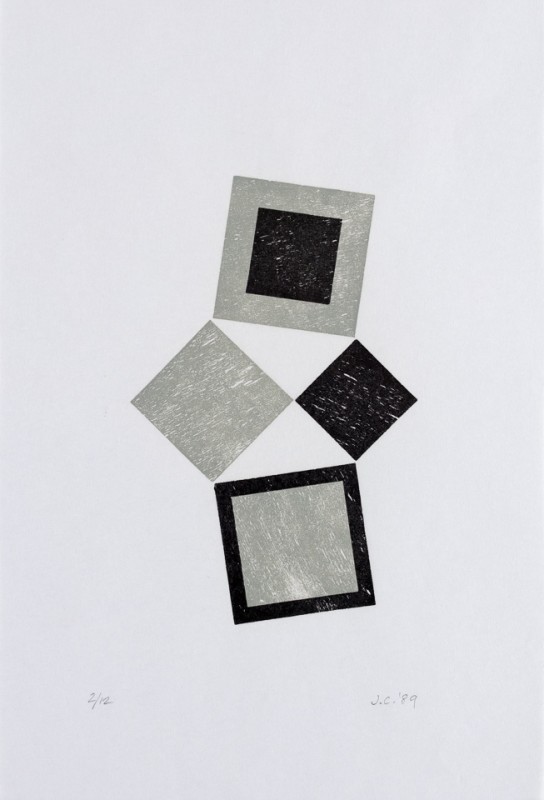 John Carter RAHommage à Pythagore, 1989Woodblock print28 x 19 cm (sheet)From the edition of 12 impressionsSigned, dated and numbered%3Cdiv%20class%3D%22artist%22%3E%3Cspan%20class%3D%22artist%22%3E%3Cstrong%3EJohn%20Carter%20RA%3C%2Fstrong%3E%3C%2Fspan%3E%3C%2Fdiv%3E%0D%3Cdiv%20class%3D%22title%22%3E%3Cem%3EHommage%20%C3%A0%20Pythagore%3C%2Fem%3E%2C%201989%3C%2Fdiv%3E%0D%3Cdiv%20class%3D%22signed_and_dated%22%3ESigned%2C%20dated%20and%20numbered%3C%2Fdiv%3E%0D%3Cdiv%20class%3D%22medium%22%3EWoodblock%20print%20%3C%2Fdiv%3E%0D%3Cdiv%20class%3D%22dimensions%22%3E28%20x%2019%20cm%20%28sheet%29%3C%2Fdiv%3E%0D%3Cdiv%20class%3D%22edition_details%22%3EFrom%20the%20edition%20of%2012%20impressions%3C%2Fdiv%3E
John Carter RAHommage à Pythagore, 1989Woodblock print28 x 19 cm (sheet)From the edition of 12 impressionsSigned, dated and numbered%3Cdiv%20class%3D%22artist%22%3E%3Cspan%20class%3D%22artist%22%3E%3Cstrong%3EJohn%20Carter%20RA%3C%2Fstrong%3E%3C%2Fspan%3E%3C%2Fdiv%3E%0D%3Cdiv%20class%3D%22title%22%3E%3Cem%3EHommage%20%C3%A0%20Pythagore%3C%2Fem%3E%2C%201989%3C%2Fdiv%3E%0D%3Cdiv%20class%3D%22signed_and_dated%22%3ESigned%2C%20dated%20and%20numbered%3C%2Fdiv%3E%0D%3Cdiv%20class%3D%22medium%22%3EWoodblock%20print%20%3C%2Fdiv%3E%0D%3Cdiv%20class%3D%22dimensions%22%3E28%20x%2019%20cm%20%28sheet%29%3C%2Fdiv%3E%0D%3Cdiv%20class%3D%22edition_details%22%3EFrom%20the%20edition%20of%2012%20impressions%3C%2Fdiv%3E -
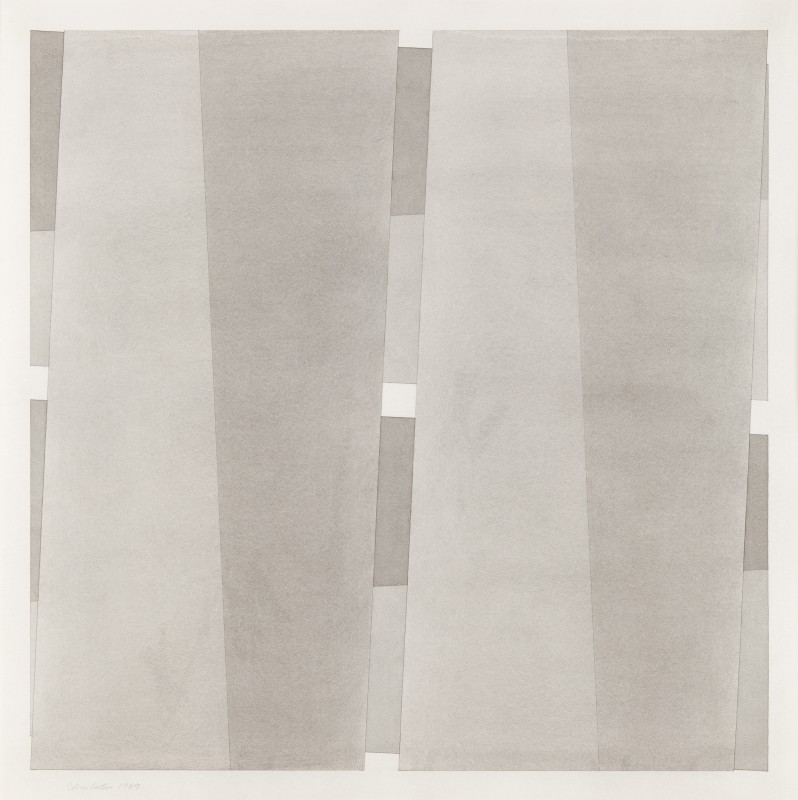 John Carter RAStudy for Superimposed Elements in a Large Square, 1989Pencil and wash on paper65 x 65 cmSigned and dated lower left%3Cdiv%20class%3D%22artist%22%3E%3Cspan%20class%3D%22artist%22%3E%3Cstrong%3EJohn%20Carter%20RA%3C/strong%3E%3C/span%3E%3C/div%3E%0D%3Cdiv%20class%3D%22title%22%3E%3Cem%3EStudy%20for%20Superimposed%20Elements%20in%20a%20Large%20Square%3C/em%3E%2C%201989%3C/div%3E%0D%3Cdiv%20class%3D%22signed_and_dated%22%3ESigned%20and%20dated%20lower%20left%3C/div%3E%0D%3Cdiv%20class%3D%22medium%22%3EPencil%20and%20wash%20on%20paper%3C/div%3E%0D%3Cdiv%20class%3D%22dimensions%22%3E65%20x%2065%20cm%3C/div%3E
John Carter RAStudy for Superimposed Elements in a Large Square, 1989Pencil and wash on paper65 x 65 cmSigned and dated lower left%3Cdiv%20class%3D%22artist%22%3E%3Cspan%20class%3D%22artist%22%3E%3Cstrong%3EJohn%20Carter%20RA%3C/strong%3E%3C/span%3E%3C/div%3E%0D%3Cdiv%20class%3D%22title%22%3E%3Cem%3EStudy%20for%20Superimposed%20Elements%20in%20a%20Large%20Square%3C/em%3E%2C%201989%3C/div%3E%0D%3Cdiv%20class%3D%22signed_and_dated%22%3ESigned%20and%20dated%20lower%20left%3C/div%3E%0D%3Cdiv%20class%3D%22medium%22%3EPencil%20and%20wash%20on%20paper%3C/div%3E%0D%3Cdiv%20class%3D%22dimensions%22%3E65%20x%2065%20cm%3C/div%3E -
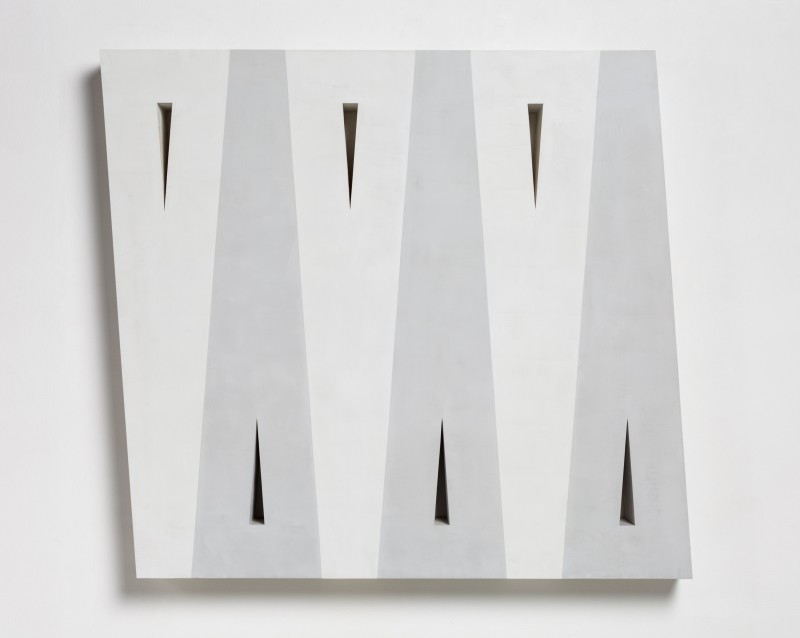 John Carter RAUntitled Theme: Triangular Slots, 1988/89Acrylic with marble powder on plywood98 x 110 x 10.4 cmSigned, dated and titled verso%3Cdiv%20class%3D%22artist%22%3E%3Cspan%20class%3D%22artist%22%3E%3Cstrong%3EJohn%20Carter%20RA%3C/strong%3E%3C/span%3E%3C/div%3E%0D%3Cdiv%20class%3D%22title%22%3E%3Cem%3EUntitled%20Theme%3A%20Triangular%20Slots%3C/em%3E%2C%201988/89%3C/div%3E%0D%3Cdiv%20class%3D%22signed_and_dated%22%3ESigned%2C%20dated%20and%20titled%20verso%3C/div%3E%0D%3Cdiv%20class%3D%22medium%22%3EAcrylic%20with%20marble%20powder%20on%20plywood%3C/div%3E%0D%3Cdiv%20class%3D%22dimensions%22%3E98%20x%20110%20x%2010.4%20cm%3C/div%3E
John Carter RAUntitled Theme: Triangular Slots, 1988/89Acrylic with marble powder on plywood98 x 110 x 10.4 cmSigned, dated and titled verso%3Cdiv%20class%3D%22artist%22%3E%3Cspan%20class%3D%22artist%22%3E%3Cstrong%3EJohn%20Carter%20RA%3C/strong%3E%3C/span%3E%3C/div%3E%0D%3Cdiv%20class%3D%22title%22%3E%3Cem%3EUntitled%20Theme%3A%20Triangular%20Slots%3C/em%3E%2C%201988/89%3C/div%3E%0D%3Cdiv%20class%3D%22signed_and_dated%22%3ESigned%2C%20dated%20and%20titled%20verso%3C/div%3E%0D%3Cdiv%20class%3D%22medium%22%3EAcrylic%20with%20marble%20powder%20on%20plywood%3C/div%3E%0D%3Cdiv%20class%3D%22dimensions%22%3E98%20x%20110%20x%2010.4%20cm%3C/div%3E -
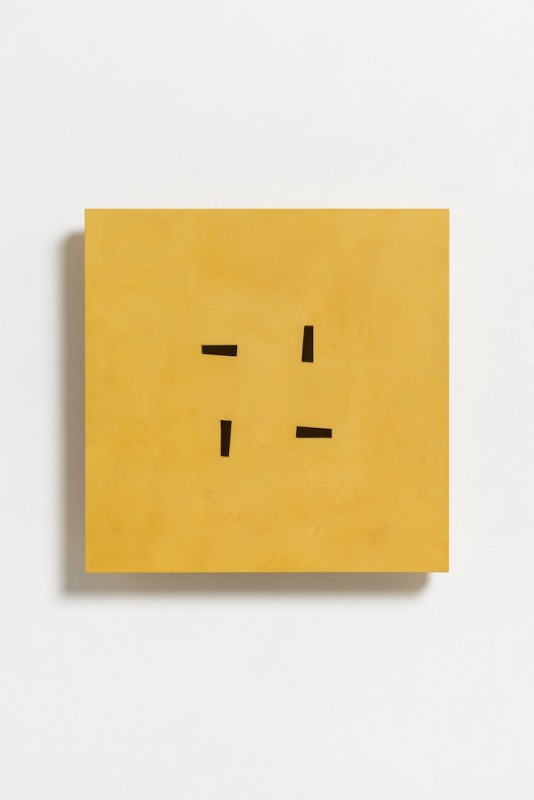 John Carter RAUntitled Theme: Pierced Square, Yellow , 1988-90Acrylic with marble powder on plywood36.5 x 36.5 x 6.5cm%3Cdiv%20class%3D%22artist%22%3E%3Cspan%20class%3D%22artist%22%3E%3Cstrong%3EJohn%20Carter%20RA%3C/strong%3E%3C/span%3E%3C/div%3E%0D%3Cdiv%20class%3D%22title%22%3E%3Cem%3EUntitled%20Theme%3A%20Pierced%20Square%2C%20Yellow%20%3C/em%3E%2C%201988-90%3C/div%3E%0D%3Cdiv%20class%3D%22medium%22%3EAcrylic%20with%20marble%20powder%20on%20plywood%3C/div%3E%0D%3Cdiv%20class%3D%22dimensions%22%3E36.5%20x%2036.5%20x%206.5cm%3C/div%3E
John Carter RAUntitled Theme: Pierced Square, Yellow , 1988-90Acrylic with marble powder on plywood36.5 x 36.5 x 6.5cm%3Cdiv%20class%3D%22artist%22%3E%3Cspan%20class%3D%22artist%22%3E%3Cstrong%3EJohn%20Carter%20RA%3C/strong%3E%3C/span%3E%3C/div%3E%0D%3Cdiv%20class%3D%22title%22%3E%3Cem%3EUntitled%20Theme%3A%20Pierced%20Square%2C%20Yellow%20%3C/em%3E%2C%201988-90%3C/div%3E%0D%3Cdiv%20class%3D%22medium%22%3EAcrylic%20with%20marble%20powder%20on%20plywood%3C/div%3E%0D%3Cdiv%20class%3D%22dimensions%22%3E36.5%20x%2036.5%20x%206.5cm%3C/div%3E -
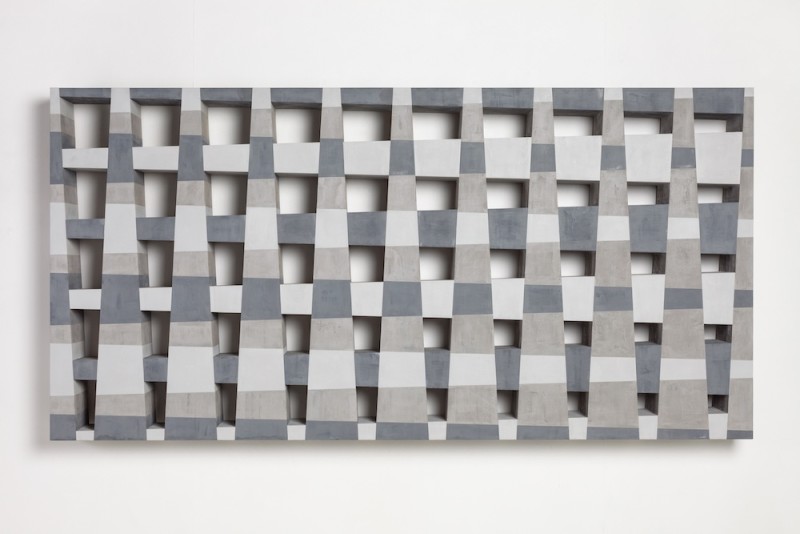 John Carter RAOverlaid Elements: Double Square, 1988Acrylic with marble powder on plywood100 x 200 x 15cm%3Cdiv%20class%3D%22artist%22%3E%3Cspan%20class%3D%22artist%22%3E%3Cstrong%3EJohn%20Carter%20RA%3C/strong%3E%3C/span%3E%3C/div%3E%0D%3Cdiv%20class%3D%22title%22%3E%3Cem%3EOverlaid%20Elements%3A%20Double%20Square%3C/em%3E%2C%201988%3C/div%3E%0D%3Cdiv%20class%3D%22medium%22%3EAcrylic%20with%20marble%20powder%20on%20plywood%3C/div%3E%0D%3Cdiv%20class%3D%22dimensions%22%3E100%20x%20200%20x%2015cm%3C/div%3E
John Carter RAOverlaid Elements: Double Square, 1988Acrylic with marble powder on plywood100 x 200 x 15cm%3Cdiv%20class%3D%22artist%22%3E%3Cspan%20class%3D%22artist%22%3E%3Cstrong%3EJohn%20Carter%20RA%3C/strong%3E%3C/span%3E%3C/div%3E%0D%3Cdiv%20class%3D%22title%22%3E%3Cem%3EOverlaid%20Elements%3A%20Double%20Square%3C/em%3E%2C%201988%3C/div%3E%0D%3Cdiv%20class%3D%22medium%22%3EAcrylic%20with%20marble%20powder%20on%20plywood%3C/div%3E%0D%3Cdiv%20class%3D%22dimensions%22%3E100%20x%20200%20x%2015cm%3C/div%3E -
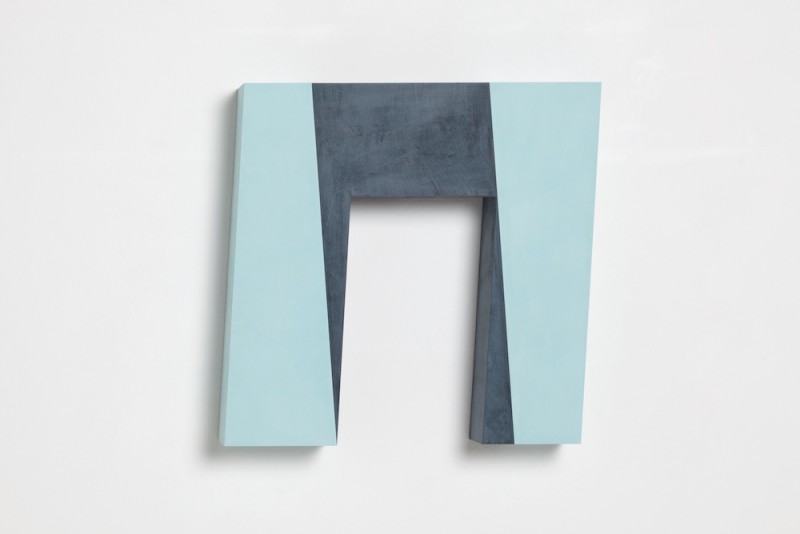 John Carter RAUntitled Theme: Archway II, 1988Acrylic with marble powder on plywood40 x 42 x 7.5cm%3Cdiv%20class%3D%22artist%22%3E%3Cspan%20class%3D%22artist%22%3E%3Cstrong%3EJohn%20Carter%20RA%3C/strong%3E%3C/span%3E%3C/div%3E%0D%3Cdiv%20class%3D%22title%22%3E%3Cem%3EUntitled%20Theme%3A%20Archway%20II%3C/em%3E%2C%201988%3C/div%3E%0D%3Cdiv%20class%3D%22medium%22%3EAcrylic%20with%20marble%20powder%20on%20plywood%3C/div%3E%0D%3Cdiv%20class%3D%22dimensions%22%3E40%20x%2042%20x%207.5cm%3C/div%3E
John Carter RAUntitled Theme: Archway II, 1988Acrylic with marble powder on plywood40 x 42 x 7.5cm%3Cdiv%20class%3D%22artist%22%3E%3Cspan%20class%3D%22artist%22%3E%3Cstrong%3EJohn%20Carter%20RA%3C/strong%3E%3C/span%3E%3C/div%3E%0D%3Cdiv%20class%3D%22title%22%3E%3Cem%3EUntitled%20Theme%3A%20Archway%20II%3C/em%3E%2C%201988%3C/div%3E%0D%3Cdiv%20class%3D%22medium%22%3EAcrylic%20with%20marble%20powder%20on%20plywood%3C/div%3E%0D%3Cdiv%20class%3D%22dimensions%22%3E40%20x%2042%20x%207.5cm%3C/div%3E -
 John Carter RAUntitled Theme: Complete Fragment II, 1988Acrylic with marble powder on MDF42.5 x 94 x 7cm%3Cdiv%20class%3D%22artist%22%3E%3Cspan%20class%3D%22artist%22%3E%3Cstrong%3EJohn%20Carter%20RA%3C/strong%3E%3C/span%3E%3C/div%3E%0D%3Cdiv%20class%3D%22title%22%3E%3Cem%3EUntitled%20Theme%3A%20Complete%20Fragment%20II%3C/em%3E%2C%201988%3C/div%3E%0D%3Cdiv%20class%3D%22medium%22%3EAcrylic%20with%20marble%20powder%20on%20MDF%3C/div%3E%0D%3Cdiv%20class%3D%22dimensions%22%3E42.5%20x%2094%20x%207cm%3C/div%3E
John Carter RAUntitled Theme: Complete Fragment II, 1988Acrylic with marble powder on MDF42.5 x 94 x 7cm%3Cdiv%20class%3D%22artist%22%3E%3Cspan%20class%3D%22artist%22%3E%3Cstrong%3EJohn%20Carter%20RA%3C/strong%3E%3C/span%3E%3C/div%3E%0D%3Cdiv%20class%3D%22title%22%3E%3Cem%3EUntitled%20Theme%3A%20Complete%20Fragment%20II%3C/em%3E%2C%201988%3C/div%3E%0D%3Cdiv%20class%3D%22medium%22%3EAcrylic%20with%20marble%20powder%20on%20MDF%3C/div%3E%0D%3Cdiv%20class%3D%22dimensions%22%3E42.5%20x%2094%20x%207cm%3C/div%3E -
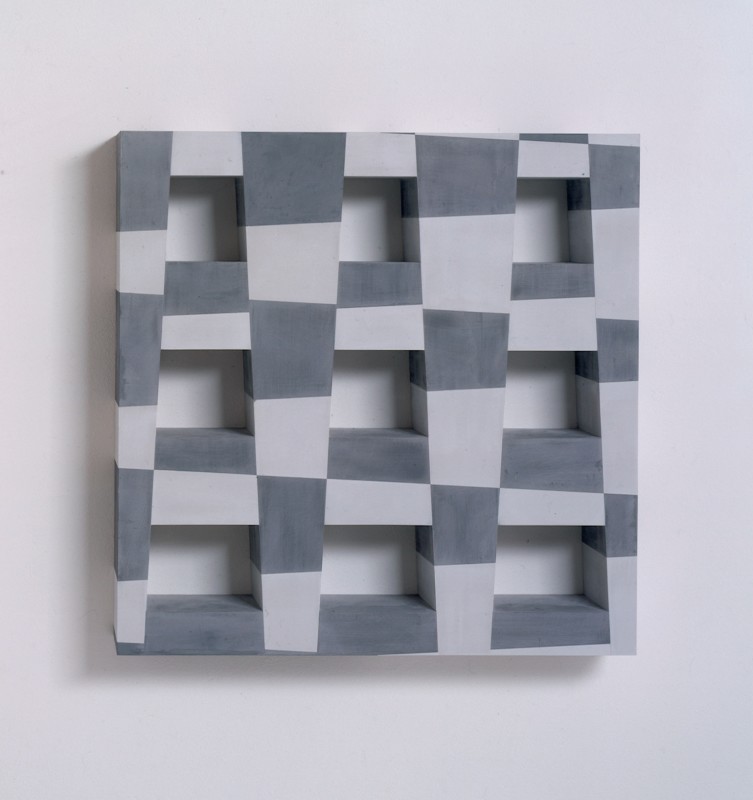 John Carter RAOverlaid Elements in Grey: Square, 1987-2003Acrylic with marble powder on plywood60 x 60 x 10 cmSigned, dated and titled verso%3Cdiv%20class%3D%22artist%22%3E%3Cspan%20class%3D%22artist%22%3E%3Cstrong%3EJohn%20Carter%20RA%3C/strong%3E%3C/span%3E%3C/div%3E%0D%3Cdiv%20class%3D%22title%22%3E%3Cem%3EOverlaid%20Elements%20in%20Grey%3A%20Square%3C/em%3E%2C%201987-2003%3C/div%3E%0D%3Cdiv%20class%3D%22signed_and_dated%22%3ESigned%2C%20dated%20and%20titled%20verso%3C/div%3E%0D%3Cdiv%20class%3D%22medium%22%3EAcrylic%20with%20marble%20powder%20on%20plywood%3C/div%3E%0D%3Cdiv%20class%3D%22dimensions%22%3E60%20x%2060%20x%2010%20cm%3C/div%3E
John Carter RAOverlaid Elements in Grey: Square, 1987-2003Acrylic with marble powder on plywood60 x 60 x 10 cmSigned, dated and titled verso%3Cdiv%20class%3D%22artist%22%3E%3Cspan%20class%3D%22artist%22%3E%3Cstrong%3EJohn%20Carter%20RA%3C/strong%3E%3C/span%3E%3C/div%3E%0D%3Cdiv%20class%3D%22title%22%3E%3Cem%3EOverlaid%20Elements%20in%20Grey%3A%20Square%3C/em%3E%2C%201987-2003%3C/div%3E%0D%3Cdiv%20class%3D%22signed_and_dated%22%3ESigned%2C%20dated%20and%20titled%20verso%3C/div%3E%0D%3Cdiv%20class%3D%22medium%22%3EAcrylic%20with%20marble%20powder%20on%20plywood%3C/div%3E%0D%3Cdiv%20class%3D%22dimensions%22%3E60%20x%2060%20x%2010%20cm%3C/div%3E -
 John Carter RAOverlaid Elements Study, 1987watercolour and gouache on paper31.5 x 55.8 cmSigned lower right; titled and dated lower left%3Cdiv%20class%3D%22artist%22%3E%3Cspan%20class%3D%22artist%22%3E%3Cstrong%3EJohn%20Carter%20RA%3C/strong%3E%3C/span%3E%3C/div%3E%0D%3Cdiv%20class%3D%22title%22%3E%3Cem%3EOverlaid%20Elements%20Study%3C/em%3E%2C%201987%3C/div%3E%0D%3Cdiv%20class%3D%22signed_and_dated%22%3ESigned%20lower%20right%3B%20titled%20and%20dated%20lower%20left%3C/div%3E%0D%3Cdiv%20class%3D%22medium%22%3Ewatercolour%20and%20gouache%20on%20paper%3C/div%3E%0D%3Cdiv%20class%3D%22dimensions%22%3E31.5%20x%2055.8%20cm%3C/div%3E
John Carter RAOverlaid Elements Study, 1987watercolour and gouache on paper31.5 x 55.8 cmSigned lower right; titled and dated lower left%3Cdiv%20class%3D%22artist%22%3E%3Cspan%20class%3D%22artist%22%3E%3Cstrong%3EJohn%20Carter%20RA%3C/strong%3E%3C/span%3E%3C/div%3E%0D%3Cdiv%20class%3D%22title%22%3E%3Cem%3EOverlaid%20Elements%20Study%3C/em%3E%2C%201987%3C/div%3E%0D%3Cdiv%20class%3D%22signed_and_dated%22%3ESigned%20lower%20right%3B%20titled%20and%20dated%20lower%20left%3C/div%3E%0D%3Cdiv%20class%3D%22medium%22%3Ewatercolour%20and%20gouache%20on%20paper%3C/div%3E%0D%3Cdiv%20class%3D%22dimensions%22%3E31.5%20x%2055.8%20cm%3C/div%3E -
 John Carter RAOverlaid Elements: Bronze Effect I, 1987Acrylic gouache on paper40.5 x 33 cmSigned and dated lower right; titled lower left%3Cdiv%20class%3D%22artist%22%3E%3Cspan%20class%3D%22artist%22%3E%3Cstrong%3EJohn%20Carter%20RA%3C/strong%3E%3C/span%3E%3C/div%3E%0D%3Cdiv%20class%3D%22title%22%3E%3Cem%3EOverlaid%20Elements%3A%20Bronze%20Effect%20I%3C/em%3E%2C%201987%3C/div%3E%0D%3Cdiv%20class%3D%22signed_and_dated%22%3ESigned%20and%20dated%20lower%20right%3B%20titled%20lower%20left%3C/div%3E%0D%3Cdiv%20class%3D%22medium%22%3EAcrylic%20gouache%20on%20paper%3C/div%3E%0D%3Cdiv%20class%3D%22dimensions%22%3E40.5%20x%2033%20cm%3C/div%3E
John Carter RAOverlaid Elements: Bronze Effect I, 1987Acrylic gouache on paper40.5 x 33 cmSigned and dated lower right; titled lower left%3Cdiv%20class%3D%22artist%22%3E%3Cspan%20class%3D%22artist%22%3E%3Cstrong%3EJohn%20Carter%20RA%3C/strong%3E%3C/span%3E%3C/div%3E%0D%3Cdiv%20class%3D%22title%22%3E%3Cem%3EOverlaid%20Elements%3A%20Bronze%20Effect%20I%3C/em%3E%2C%201987%3C/div%3E%0D%3Cdiv%20class%3D%22signed_and_dated%22%3ESigned%20and%20dated%20lower%20right%3B%20titled%20lower%20left%3C/div%3E%0D%3Cdiv%20class%3D%22medium%22%3EAcrylic%20gouache%20on%20paper%3C/div%3E%0D%3Cdiv%20class%3D%22dimensions%22%3E40.5%20x%2033%20cm%3C/div%3E -
 John Carter RACorner Variant, 1986Acrylic on paper44.7 x 51.1 cmSigned and dated lower left%3Cdiv%20class%3D%22artist%22%3E%3Cspan%20class%3D%22artist%22%3E%3Cstrong%3EJohn%20Carter%20RA%3C/strong%3E%3C/span%3E%3C/div%3E%0D%3Cdiv%20class%3D%22title%22%3E%3Cem%3ECorner%20Variant%3C/em%3E%2C%201986%3C/div%3E%0D%3Cdiv%20class%3D%22signed_and_dated%22%3ESigned%20and%20dated%20lower%20left%3C/div%3E%0D%3Cdiv%20class%3D%22medium%22%3EAcrylic%20on%20paper%3C/div%3E%0D%3Cdiv%20class%3D%22dimensions%22%3E44.7%20x%2051.1%20cm%3C/div%3E
John Carter RACorner Variant, 1986Acrylic on paper44.7 x 51.1 cmSigned and dated lower left%3Cdiv%20class%3D%22artist%22%3E%3Cspan%20class%3D%22artist%22%3E%3Cstrong%3EJohn%20Carter%20RA%3C/strong%3E%3C/span%3E%3C/div%3E%0D%3Cdiv%20class%3D%22title%22%3E%3Cem%3ECorner%20Variant%3C/em%3E%2C%201986%3C/div%3E%0D%3Cdiv%20class%3D%22signed_and_dated%22%3ESigned%20and%20dated%20lower%20left%3C/div%3E%0D%3Cdiv%20class%3D%22medium%22%3EAcrylic%20on%20paper%3C/div%3E%0D%3Cdiv%20class%3D%22dimensions%22%3E44.7%20x%2051.1%20cm%3C/div%3E -
 John Carter RAPainting on an Angled Surface II, 1985Oil on plywood35 x 82 x 6cm%3Cdiv%20class%3D%22artist%22%3E%3Cspan%20class%3D%22artist%22%3E%3Cstrong%3EJohn%20Carter%20RA%3C/strong%3E%3C/span%3E%3C/div%3E%0D%3Cdiv%20class%3D%22title%22%3E%3Cem%3EPainting%20on%20an%20Angled%20Surface%20II%3C/em%3E%2C%201985%3C/div%3E%0D%3Cdiv%20class%3D%22medium%22%3EOil%20on%20plywood%3C/div%3E%0D%3Cdiv%20class%3D%22dimensions%22%3E35%20x%2082%20x%206cm%3C/div%3E
John Carter RAPainting on an Angled Surface II, 1985Oil on plywood35 x 82 x 6cm%3Cdiv%20class%3D%22artist%22%3E%3Cspan%20class%3D%22artist%22%3E%3Cstrong%3EJohn%20Carter%20RA%3C/strong%3E%3C/span%3E%3C/div%3E%0D%3Cdiv%20class%3D%22title%22%3E%3Cem%3EPainting%20on%20an%20Angled%20Surface%20II%3C/em%3E%2C%201985%3C/div%3E%0D%3Cdiv%20class%3D%22medium%22%3EOil%20on%20plywood%3C/div%3E%0D%3Cdiv%20class%3D%22dimensions%22%3E35%20x%2082%20x%206cm%3C/div%3E -
 John Carter RAPainting with Angled Surface, 1984-85Oil on plywood32 x 67 x 7 cmSigned, dated and titled verso%3Cdiv%20class%3D%22artist%22%3E%3Cspan%20class%3D%22artist%22%3E%3Cstrong%3EJohn%20Carter%20RA%3C/strong%3E%3C/span%3E%3C/div%3E%0D%3Cdiv%20class%3D%22title%22%3E%3Cem%3EPainting%20with%20Angled%20Surface%3C/em%3E%2C%201984-85%3C/div%3E%0D%3Cdiv%20class%3D%22signed_and_dated%22%3ESigned%2C%20dated%20and%20titled%20verso%3C/div%3E%0D%3Cdiv%20class%3D%22medium%22%3EOil%20on%20plywood%3C/div%3E%0D%3Cdiv%20class%3D%22dimensions%22%3E32%20x%2067%20x%207%20cm%3C/div%3E
John Carter RAPainting with Angled Surface, 1984-85Oil on plywood32 x 67 x 7 cmSigned, dated and titled verso%3Cdiv%20class%3D%22artist%22%3E%3Cspan%20class%3D%22artist%22%3E%3Cstrong%3EJohn%20Carter%20RA%3C/strong%3E%3C/span%3E%3C/div%3E%0D%3Cdiv%20class%3D%22title%22%3E%3Cem%3EPainting%20with%20Angled%20Surface%3C/em%3E%2C%201984-85%3C/div%3E%0D%3Cdiv%20class%3D%22signed_and_dated%22%3ESigned%2C%20dated%20and%20titled%20verso%3C/div%3E%0D%3Cdiv%20class%3D%22medium%22%3EOil%20on%20plywood%3C/div%3E%0D%3Cdiv%20class%3D%22dimensions%22%3E32%20x%2067%20x%207%20cm%3C/div%3E -
 John Carter RAHalved Areas on an Axis, 1984-2005Oil on plywood72 x 91 x 6 cmSigned, dated and titled verso%3Cdiv%20class%3D%22artist%22%3E%3Cspan%20class%3D%22artist%22%3E%3Cstrong%3EJohn%20Carter%20RA%3C/strong%3E%3C/span%3E%3C/div%3E%0D%3Cdiv%20class%3D%22title%22%3E%3Cem%3EHalved%20Areas%20on%20an%20Axis%3C/em%3E%2C%201984-2005%3C/div%3E%0D%3Cdiv%20class%3D%22signed_and_dated%22%3ESigned%2C%20dated%20and%20titled%20verso%3C/div%3E%0D%3Cdiv%20class%3D%22medium%22%3EOil%20on%20plywood%3C/div%3E%0D%3Cdiv%20class%3D%22dimensions%22%3E72%20x%2091%20x%206%20cm%3C/div%3E
John Carter RAHalved Areas on an Axis, 1984-2005Oil on plywood72 x 91 x 6 cmSigned, dated and titled verso%3Cdiv%20class%3D%22artist%22%3E%3Cspan%20class%3D%22artist%22%3E%3Cstrong%3EJohn%20Carter%20RA%3C/strong%3E%3C/span%3E%3C/div%3E%0D%3Cdiv%20class%3D%22title%22%3E%3Cem%3EHalved%20Areas%20on%20an%20Axis%3C/em%3E%2C%201984-2005%3C/div%3E%0D%3Cdiv%20class%3D%22signed_and_dated%22%3ESigned%2C%20dated%20and%20titled%20verso%3C/div%3E%0D%3Cdiv%20class%3D%22medium%22%3EOil%20on%20plywood%3C/div%3E%0D%3Cdiv%20class%3D%22dimensions%22%3E72%20x%2091%20x%206%20cm%3C/div%3E -
 John Carter RAHalved Areas Study No. 3, 1984Gouache on paper44 x 47 cmSigned, dated and titled lower left%3Cdiv%20class%3D%22artist%22%3E%3Cspan%20class%3D%22artist%22%3E%3Cstrong%3EJohn%20Carter%20RA%3C/strong%3E%3C/span%3E%3C/div%3E%0D%3Cdiv%20class%3D%22title%22%3E%3Cem%3EHalved%20Areas%20Study%20No.%203%3C/em%3E%2C%201984%3C/div%3E%0D%3Cdiv%20class%3D%22signed_and_dated%22%3ESigned%2C%20dated%20and%20titled%20lower%20left%3C/div%3E%0D%3Cdiv%20class%3D%22medium%22%3EGouache%20on%20paper%3C/div%3E%0D%3Cdiv%20class%3D%22dimensions%22%3E44%20x%2047%20cm%3C/div%3E
John Carter RAHalved Areas Study No. 3, 1984Gouache on paper44 x 47 cmSigned, dated and titled lower left%3Cdiv%20class%3D%22artist%22%3E%3Cspan%20class%3D%22artist%22%3E%3Cstrong%3EJohn%20Carter%20RA%3C/strong%3E%3C/span%3E%3C/div%3E%0D%3Cdiv%20class%3D%22title%22%3E%3Cem%3EHalved%20Areas%20Study%20No.%203%3C/em%3E%2C%201984%3C/div%3E%0D%3Cdiv%20class%3D%22signed_and_dated%22%3ESigned%2C%20dated%20and%20titled%20lower%20left%3C/div%3E%0D%3Cdiv%20class%3D%22medium%22%3EGouache%20on%20paper%3C/div%3E%0D%3Cdiv%20class%3D%22dimensions%22%3E44%20x%2047%20cm%3C/div%3E -
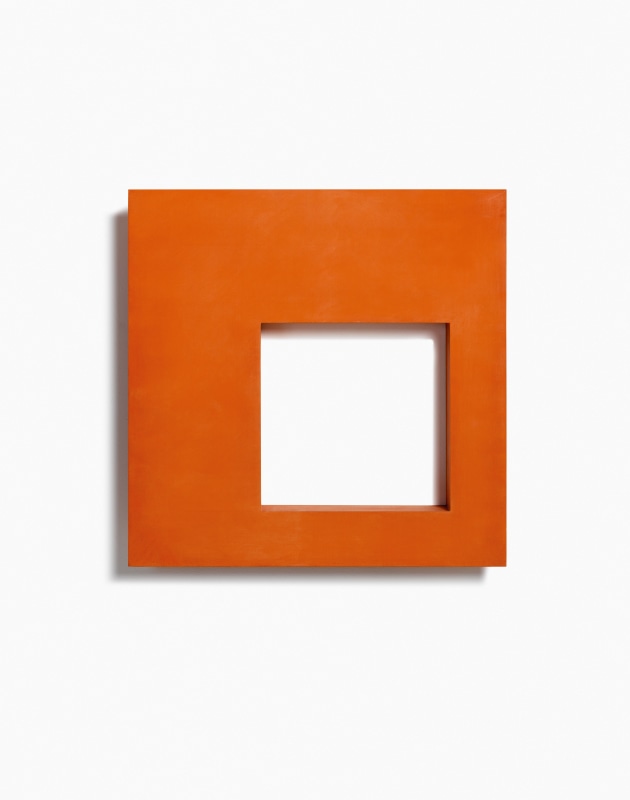 John Carter RASquare: Burnt Orange , 1982/3Oil on plywood57 x 57 x 7.5 cm%3Cdiv%20class%3D%22artist%22%3E%3Cspan%20class%3D%22artist%22%3E%3Cstrong%3EJohn%20Carter%20RA%3C/strong%3E%3C/span%3E%3C/div%3E%0D%3Cdiv%20class%3D%22title%22%3E%3Cem%3ESquare%3A%20Burnt%20Orange%20%3C/em%3E%2C%201982/3%3C/div%3E%0D%3Cdiv%20class%3D%22medium%22%3EOil%20on%20plywood%3C/div%3E%0D%3Cdiv%20class%3D%22dimensions%22%3E57%20x%2057%20x%207.5%20cm%3C/div%3E
John Carter RASquare: Burnt Orange , 1982/3Oil on plywood57 x 57 x 7.5 cm%3Cdiv%20class%3D%22artist%22%3E%3Cspan%20class%3D%22artist%22%3E%3Cstrong%3EJohn%20Carter%20RA%3C/strong%3E%3C/span%3E%3C/div%3E%0D%3Cdiv%20class%3D%22title%22%3E%3Cem%3ESquare%3A%20Burnt%20Orange%20%3C/em%3E%2C%201982/3%3C/div%3E%0D%3Cdiv%20class%3D%22medium%22%3EOil%20on%20plywood%3C/div%3E%0D%3Cdiv%20class%3D%22dimensions%22%3E57%20x%2057%20x%207.5%20cm%3C/div%3E -
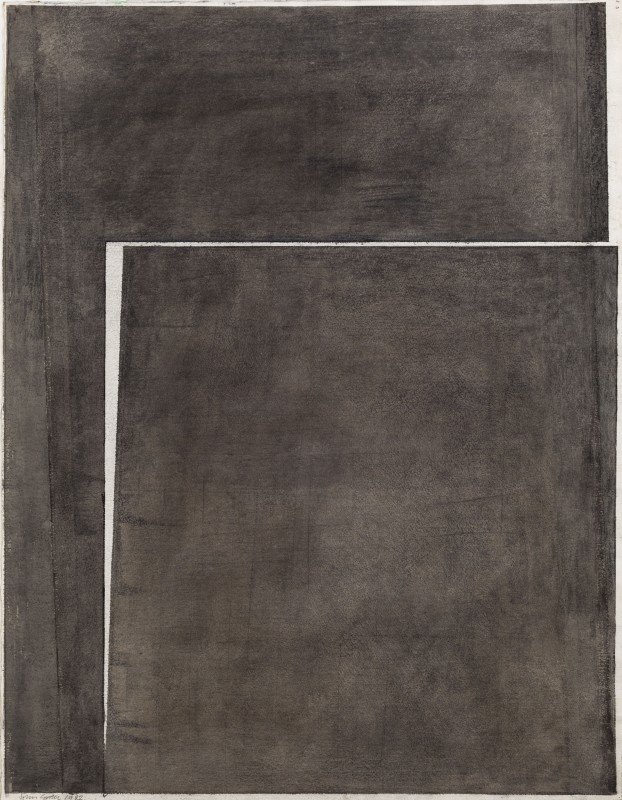 John Carter RAInclined Plane: First Study, 1982Chalk and wash on paper69.5 x 54 cmSigned and dated lower left%3Cdiv%20class%3D%22artist%22%3E%3Cspan%20class%3D%22artist%22%3E%3Cstrong%3EJohn%20Carter%20RA%3C/strong%3E%3C/span%3E%3C/div%3E%0D%3Cdiv%20class%3D%22title%22%3E%3Cem%3EInclined%20Plane%3A%20First%20Study%3C/em%3E%2C%201982%3C/div%3E%0D%3Cdiv%20class%3D%22signed_and_dated%22%3ESigned%20and%20dated%20lower%20left%3C/div%3E%0D%3Cdiv%20class%3D%22medium%22%3EChalk%20and%20wash%20on%20paper%3C/div%3E%0D%3Cdiv%20class%3D%22dimensions%22%3E69.5%20x%2054%20cm%3C/div%3E
John Carter RAInclined Plane: First Study, 1982Chalk and wash on paper69.5 x 54 cmSigned and dated lower left%3Cdiv%20class%3D%22artist%22%3E%3Cspan%20class%3D%22artist%22%3E%3Cstrong%3EJohn%20Carter%20RA%3C/strong%3E%3C/span%3E%3C/div%3E%0D%3Cdiv%20class%3D%22title%22%3E%3Cem%3EInclined%20Plane%3A%20First%20Study%3C/em%3E%2C%201982%3C/div%3E%0D%3Cdiv%20class%3D%22signed_and_dated%22%3ESigned%20and%20dated%20lower%20left%3C/div%3E%0D%3Cdiv%20class%3D%22medium%22%3EChalk%20and%20wash%20on%20paper%3C/div%3E%0D%3Cdiv%20class%3D%22dimensions%22%3E69.5%20x%2054%20cm%3C/div%3E -
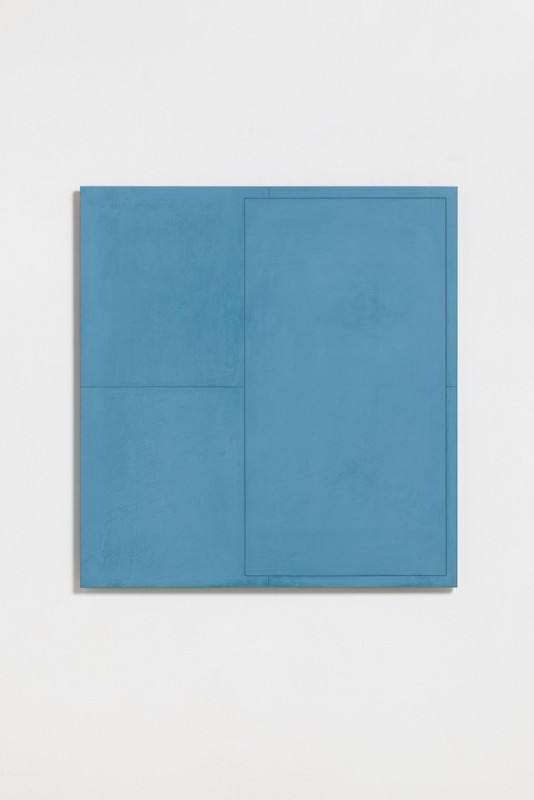 John Carter RAThree Equal Rectangles (Blue), 1982Oil on plywood66.5 x 59.7cm%3Cdiv%20class%3D%22artist%22%3E%3Cspan%20class%3D%22artist%22%3E%3Cstrong%3EJohn%20Carter%20RA%3C/strong%3E%3C/span%3E%3C/div%3E%0D%3Cdiv%20class%3D%22title%22%3E%3Cem%3EThree%20Equal%20Rectangles%20%28Blue%29%3C/em%3E%2C%201982%3C/div%3E%0D%3Cdiv%20class%3D%22medium%22%3EOil%20on%20plywood%3C/div%3E%0D%3Cdiv%20class%3D%22dimensions%22%3E66.5%20x%2059.7cm%3C/div%3E
John Carter RAThree Equal Rectangles (Blue), 1982Oil on plywood66.5 x 59.7cm%3Cdiv%20class%3D%22artist%22%3E%3Cspan%20class%3D%22artist%22%3E%3Cstrong%3EJohn%20Carter%20RA%3C/strong%3E%3C/span%3E%3C/div%3E%0D%3Cdiv%20class%3D%22title%22%3E%3Cem%3EThree%20Equal%20Rectangles%20%28Blue%29%3C/em%3E%2C%201982%3C/div%3E%0D%3Cdiv%20class%3D%22medium%22%3EOil%20on%20plywood%3C/div%3E%0D%3Cdiv%20class%3D%22dimensions%22%3E66.5%20x%2059.7cm%3C/div%3E -
 John Carter RATransparent Space in Blue II, 1982Oil on board142 x 109 x 15cm%3Cdiv%20class%3D%22artist%22%3E%3Cspan%20class%3D%22artist%22%3E%3Cstrong%3EJohn%20Carter%20RA%3C/strong%3E%3C/span%3E%3C/div%3E%0D%3Cdiv%20class%3D%22title%22%3E%3Cem%3ETransparent%20Space%20in%20Blue%20II%3C/em%3E%2C%201982%3C/div%3E%0D%3Cdiv%20class%3D%22medium%22%3EOil%20on%20board%3C/div%3E%0D%3Cdiv%20class%3D%22dimensions%22%3E142%20x%20109%20x%2015cm%3C/div%3E
John Carter RATransparent Space in Blue II, 1982Oil on board142 x 109 x 15cm%3Cdiv%20class%3D%22artist%22%3E%3Cspan%20class%3D%22artist%22%3E%3Cstrong%3EJohn%20Carter%20RA%3C/strong%3E%3C/span%3E%3C/div%3E%0D%3Cdiv%20class%3D%22title%22%3E%3Cem%3ETransparent%20Space%20in%20Blue%20II%3C/em%3E%2C%201982%3C/div%3E%0D%3Cdiv%20class%3D%22medium%22%3EOil%20on%20board%3C/div%3E%0D%3Cdiv%20class%3D%22dimensions%22%3E142%20x%20109%20x%2015cm%3C/div%3E -
 John Carter RAAssembly of Rectangles II, 1981/2Oil on plywood170 x 45 cm%3Cdiv%20class%3D%22artist%22%3E%3Cspan%20class%3D%22artist%22%3E%3Cstrong%3EJohn%20Carter%20RA%3C/strong%3E%3C/span%3E%3C/div%3E%0D%3Cdiv%20class%3D%22title%22%3E%3Cem%3EAssembly%20of%20Rectangles%20II%3C/em%3E%2C%201981/2%3C/div%3E%0D%3Cdiv%20class%3D%22medium%22%3EOil%20on%20plywood%20%3C/div%3E%0D%3Cdiv%20class%3D%22dimensions%22%3E170%20x%2045%20cm%3C/div%3E
John Carter RAAssembly of Rectangles II, 1981/2Oil on plywood170 x 45 cm%3Cdiv%20class%3D%22artist%22%3E%3Cspan%20class%3D%22artist%22%3E%3Cstrong%3EJohn%20Carter%20RA%3C/strong%3E%3C/span%3E%3C/div%3E%0D%3Cdiv%20class%3D%22title%22%3E%3Cem%3EAssembly%20of%20Rectangles%20II%3C/em%3E%2C%201981/2%3C/div%3E%0D%3Cdiv%20class%3D%22medium%22%3EOil%20on%20plywood%20%3C/div%3E%0D%3Cdiv%20class%3D%22dimensions%22%3E170%20x%2045%20cm%3C/div%3E -
 John Carter RADouble Equal Areas in Red, 1981Oil on board83 x 78.7 x 4cm%3Cdiv%20class%3D%22artist%22%3E%3Cspan%20class%3D%22artist%22%3E%3Cstrong%3EJohn%20Carter%20RA%3C/strong%3E%3C/span%3E%3C/div%3E%0D%3Cdiv%20class%3D%22title%22%3E%3Cem%3EDouble%20Equal%20Areas%20in%20Red%3C/em%3E%2C%201981%3C/div%3E%0D%3Cdiv%20class%3D%22medium%22%3EOil%20on%20board%3C/div%3E%0D%3Cdiv%20class%3D%22dimensions%22%3E83%20x%2078.7%20x%204cm%3C/div%3E
John Carter RADouble Equal Areas in Red, 1981Oil on board83 x 78.7 x 4cm%3Cdiv%20class%3D%22artist%22%3E%3Cspan%20class%3D%22artist%22%3E%3Cstrong%3EJohn%20Carter%20RA%3C/strong%3E%3C/span%3E%3C/div%3E%0D%3Cdiv%20class%3D%22title%22%3E%3Cem%3EDouble%20Equal%20Areas%20in%20Red%3C/em%3E%2C%201981%3C/div%3E%0D%3Cdiv%20class%3D%22medium%22%3EOil%20on%20board%3C/div%3E%0D%3Cdiv%20class%3D%22dimensions%22%3E83%20x%2078.7%20x%204cm%3C/div%3E -
 John Carter RANaples Yellow, 1980-81Oil on plywood40 x 59 cmSigned, dated and titled verso%3Cdiv%20class%3D%22artist%22%3E%3Cspan%20class%3D%22artist%22%3E%3Cstrong%3EJohn%20Carter%20RA%3C/strong%3E%3C/span%3E%3C/div%3E%0D%3Cdiv%20class%3D%22title%22%3E%3Cem%3ENaples%20Yellow%3C/em%3E%2C%201980-81%3C/div%3E%0D%3Cdiv%20class%3D%22signed_and_dated%22%3ESigned%2C%20dated%20and%20titled%20verso%3C/div%3E%0D%3Cdiv%20class%3D%22medium%22%3EOil%20on%20plywood%3C/div%3E%0D%3Cdiv%20class%3D%22dimensions%22%3E40%20x%2059%20cm%3C/div%3E
John Carter RANaples Yellow, 1980-81Oil on plywood40 x 59 cmSigned, dated and titled verso%3Cdiv%20class%3D%22artist%22%3E%3Cspan%20class%3D%22artist%22%3E%3Cstrong%3EJohn%20Carter%20RA%3C/strong%3E%3C/span%3E%3C/div%3E%0D%3Cdiv%20class%3D%22title%22%3E%3Cem%3ENaples%20Yellow%3C/em%3E%2C%201980-81%3C/div%3E%0D%3Cdiv%20class%3D%22signed_and_dated%22%3ESigned%2C%20dated%20and%20titled%20verso%3C/div%3E%0D%3Cdiv%20class%3D%22medium%22%3EOil%20on%20plywood%3C/div%3E%0D%3Cdiv%20class%3D%22dimensions%22%3E40%20x%2059%20cm%3C/div%3E -
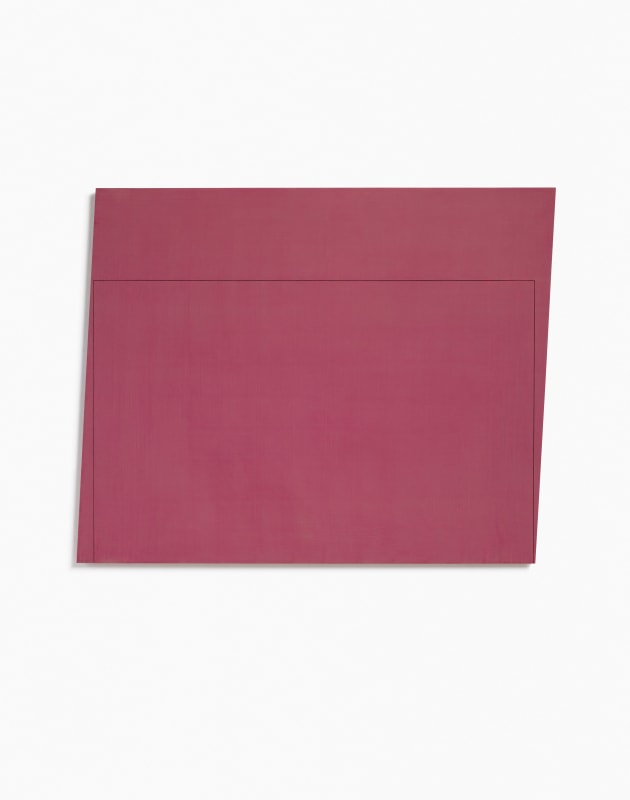 John Carter RARed Panel Painting, 1980 (finished later)Oil on blockboard84.5 x 108 cm%3Cdiv%20class%3D%22artist%22%3E%3Cspan%20class%3D%22artist%22%3E%3Cstrong%3EJohn%20Carter%20RA%3C/strong%3E%3C/span%3E%3C/div%3E%0D%3Cdiv%20class%3D%22title%22%3E%3Cem%3ERed%20Panel%20Painting%3C/em%3E%2C%201980%20%28finished%20later%29%3C/div%3E%0D%3Cdiv%20class%3D%22medium%22%3EOil%20on%20blockboard%3C/div%3E%0D%3Cdiv%20class%3D%22dimensions%22%3E84.5%20x%20108%20cm%3C/div%3E
John Carter RARed Panel Painting, 1980 (finished later)Oil on blockboard84.5 x 108 cm%3Cdiv%20class%3D%22artist%22%3E%3Cspan%20class%3D%22artist%22%3E%3Cstrong%3EJohn%20Carter%20RA%3C/strong%3E%3C/span%3E%3C/div%3E%0D%3Cdiv%20class%3D%22title%22%3E%3Cem%3ERed%20Panel%20Painting%3C/em%3E%2C%201980%20%28finished%20later%29%3C/div%3E%0D%3Cdiv%20class%3D%22medium%22%3EOil%20on%20blockboard%3C/div%3E%0D%3Cdiv%20class%3D%22dimensions%22%3E84.5%20x%20108%20cm%3C/div%3E -
 John Carter RAFrames: Two Reds, 1980 (Completed 2023)Oil on plywood48 x 102 x 3 cm%3Cdiv%20class%3D%22artist%22%3E%3Cspan%20class%3D%22artist%22%3E%3Cstrong%3EJohn%20Carter%20RA%3C/strong%3E%3C/span%3E%3C/div%3E%0D%3Cdiv%20class%3D%22title%22%3E%3Cem%3EFrames%3A%20Two%20Reds%3C/em%3E%2C%201980%20%28Completed%202023%29%3C/div%3E%0D%3Cdiv%20class%3D%22medium%22%3EOil%20on%20plywood%3C/div%3E%0D%3Cdiv%20class%3D%22dimensions%22%3E48%20x%20102%20x%203%20cm%3C/div%3E
John Carter RAFrames: Two Reds, 1980 (Completed 2023)Oil on plywood48 x 102 x 3 cm%3Cdiv%20class%3D%22artist%22%3E%3Cspan%20class%3D%22artist%22%3E%3Cstrong%3EJohn%20Carter%20RA%3C/strong%3E%3C/span%3E%3C/div%3E%0D%3Cdiv%20class%3D%22title%22%3E%3Cem%3EFrames%3A%20Two%20Reds%3C/em%3E%2C%201980%20%28Completed%202023%29%3C/div%3E%0D%3Cdiv%20class%3D%22medium%22%3EOil%20on%20plywood%3C/div%3E%0D%3Cdiv%20class%3D%22dimensions%22%3E48%20x%20102%20x%203%20cm%3C/div%3E -
 John Carter RACorrugated Surface, 1980Watercolour and gouache on paper27.5 x 23.5 cmSigned and dated lower left%3Cdiv%20class%3D%22artist%22%3E%3Cspan%20class%3D%22artist%22%3E%3Cstrong%3EJohn%20Carter%20RA%3C/strong%3E%3C/span%3E%3C/div%3E%0D%3Cdiv%20class%3D%22title%22%3E%3Cem%3ECorrugated%20Surface%3C/em%3E%2C%201980%3C/div%3E%0D%3Cdiv%20class%3D%22signed_and_dated%22%3ESigned%20and%20dated%20lower%20left%3C/div%3E%0D%3Cdiv%20class%3D%22medium%22%3EWatercolour%20and%20gouache%20on%20paper%3C/div%3E%0D%3Cdiv%20class%3D%22dimensions%22%3E27.5%20x%2023.5%20cm%3C/div%3E
John Carter RACorrugated Surface, 1980Watercolour and gouache on paper27.5 x 23.5 cmSigned and dated lower left%3Cdiv%20class%3D%22artist%22%3E%3Cspan%20class%3D%22artist%22%3E%3Cstrong%3EJohn%20Carter%20RA%3C/strong%3E%3C/span%3E%3C/div%3E%0D%3Cdiv%20class%3D%22title%22%3E%3Cem%3ECorrugated%20Surface%3C/em%3E%2C%201980%3C/div%3E%0D%3Cdiv%20class%3D%22signed_and_dated%22%3ESigned%20and%20dated%20lower%20left%3C/div%3E%0D%3Cdiv%20class%3D%22medium%22%3EWatercolour%20and%20gouache%20on%20paper%3C/div%3E%0D%3Cdiv%20class%3D%22dimensions%22%3E27.5%20x%2023.5%20cm%3C/div%3E -
 John Carter RAVertical Squares: Halved Areas, 1980Gouache on paper31.5 x 16.5 cmSigned and dated lower left%3Cdiv%20class%3D%22artist%22%3E%3Cspan%20class%3D%22artist%22%3E%3Cstrong%3EJohn%20Carter%20RA%3C/strong%3E%3C/span%3E%3C/div%3E%0D%3Cdiv%20class%3D%22title%22%3E%3Cem%3EVertical%20Squares%3A%20Halved%20Areas%3C/em%3E%2C%201980%3C/div%3E%0D%3Cdiv%20class%3D%22signed_and_dated%22%3ESigned%20and%20dated%20lower%20left%3C/div%3E%0D%3Cdiv%20class%3D%22medium%22%3EGouache%20on%20paper%3C/div%3E%0D%3Cdiv%20class%3D%22dimensions%22%3E31.5%20x%2016.5%20cm%3C/div%3E
John Carter RAVertical Squares: Halved Areas, 1980Gouache on paper31.5 x 16.5 cmSigned and dated lower left%3Cdiv%20class%3D%22artist%22%3E%3Cspan%20class%3D%22artist%22%3E%3Cstrong%3EJohn%20Carter%20RA%3C/strong%3E%3C/span%3E%3C/div%3E%0D%3Cdiv%20class%3D%22title%22%3E%3Cem%3EVertical%20Squares%3A%20Halved%20Areas%3C/em%3E%2C%201980%3C/div%3E%0D%3Cdiv%20class%3D%22signed_and_dated%22%3ESigned%20and%20dated%20lower%20left%3C/div%3E%0D%3Cdiv%20class%3D%22medium%22%3EGouache%20on%20paper%3C/div%3E%0D%3Cdiv%20class%3D%22dimensions%22%3E31.5%20x%2016.5%20cm%3C/div%3E -
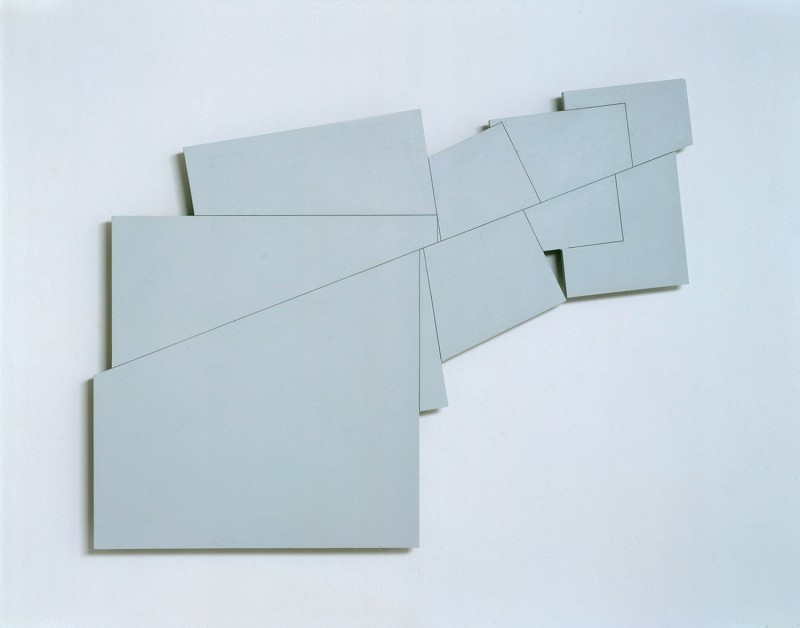 John Carter RAShift II, 1978Oil on plywood64 x 77 cmSigned, dated and titled verso%3Cdiv%20class%3D%22artist%22%3E%3Cspan%20class%3D%22artist%22%3E%3Cstrong%3EJohn%20Carter%20RA%3C/strong%3E%3C/span%3E%3C/div%3E%0D%3Cdiv%20class%3D%22title%22%3E%3Cem%3EShift%20II%3C/em%3E%2C%201978%3C/div%3E%0D%3Cdiv%20class%3D%22signed_and_dated%22%3ESigned%2C%20dated%20and%20titled%20verso%3C/div%3E%0D%3Cdiv%20class%3D%22medium%22%3EOil%20on%20plywood%3C/div%3E%0D%3Cdiv%20class%3D%22dimensions%22%3E64%20x%2077%20cm%3C/div%3E
John Carter RAShift II, 1978Oil on plywood64 x 77 cmSigned, dated and titled verso%3Cdiv%20class%3D%22artist%22%3E%3Cspan%20class%3D%22artist%22%3E%3Cstrong%3EJohn%20Carter%20RA%3C/strong%3E%3C/span%3E%3C/div%3E%0D%3Cdiv%20class%3D%22title%22%3E%3Cem%3EShift%20II%3C/em%3E%2C%201978%3C/div%3E%0D%3Cdiv%20class%3D%22signed_and_dated%22%3ESigned%2C%20dated%20and%20titled%20verso%3C/div%3E%0D%3Cdiv%20class%3D%22medium%22%3EOil%20on%20plywood%3C/div%3E%0D%3Cdiv%20class%3D%22dimensions%22%3E64%20x%2077%20cm%3C/div%3E -
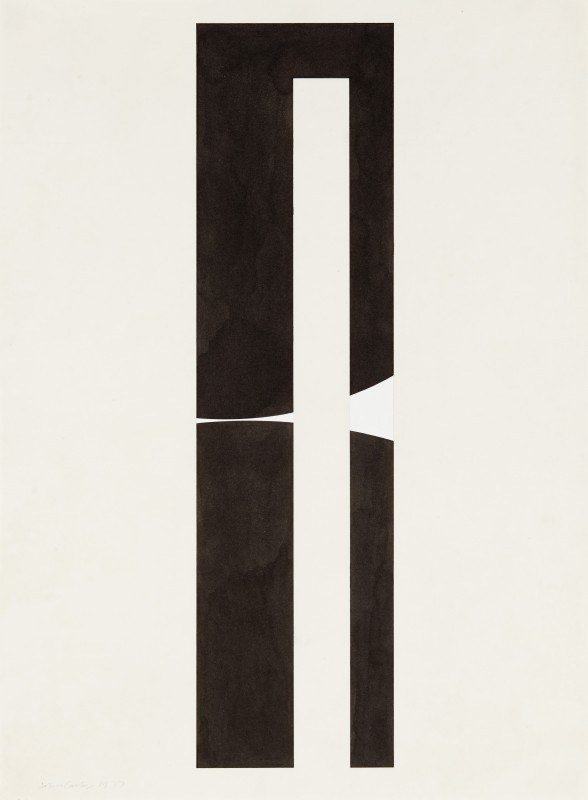 John Carter RAMeeting Point II, 1977Chinese ink and gouache on paper65 x 48 cmSigned and dated lower left%3Cdiv%20class%3D%22artist%22%3E%3Cspan%20class%3D%22artist%22%3E%3Cstrong%3EJohn%20Carter%20RA%3C/strong%3E%3C/span%3E%3C/div%3E%0D%3Cdiv%20class%3D%22title%22%3E%3Cem%3EMeeting%20Point%20II%3C/em%3E%2C%201977%3C/div%3E%0D%3Cdiv%20class%3D%22signed_and_dated%22%3ESigned%20and%20dated%20lower%20left%3C/div%3E%0D%3Cdiv%20class%3D%22medium%22%3EChinese%20ink%20and%20gouache%20on%20paper%3C/div%3E%0D%3Cdiv%20class%3D%22dimensions%22%3E65%20x%2048%20cm%3C/div%3E
John Carter RAMeeting Point II, 1977Chinese ink and gouache on paper65 x 48 cmSigned and dated lower left%3Cdiv%20class%3D%22artist%22%3E%3Cspan%20class%3D%22artist%22%3E%3Cstrong%3EJohn%20Carter%20RA%3C/strong%3E%3C/span%3E%3C/div%3E%0D%3Cdiv%20class%3D%22title%22%3E%3Cem%3EMeeting%20Point%20II%3C/em%3E%2C%201977%3C/div%3E%0D%3Cdiv%20class%3D%22signed_and_dated%22%3ESigned%20and%20dated%20lower%20left%3C/div%3E%0D%3Cdiv%20class%3D%22medium%22%3EChinese%20ink%20and%20gouache%20on%20paper%3C/div%3E%0D%3Cdiv%20class%3D%22dimensions%22%3E65%20x%2048%20cm%3C/div%3E -
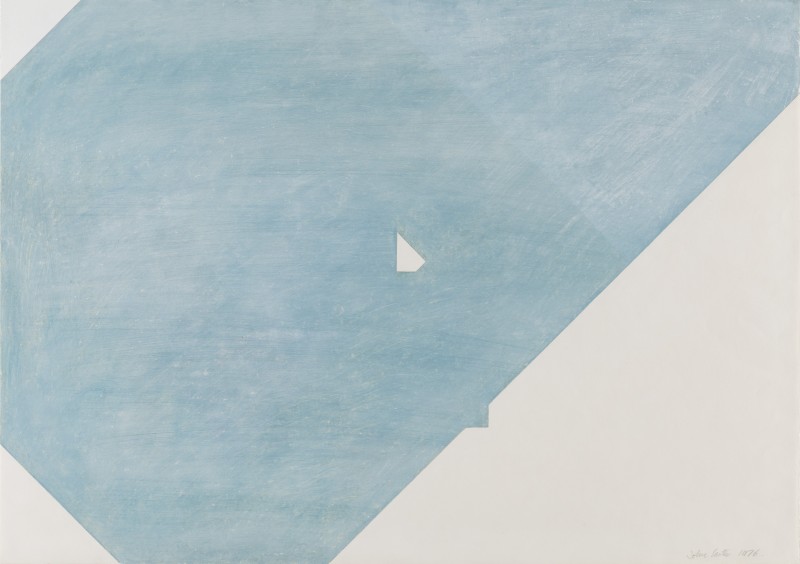 John Carter RA(Overlapping) Squares: Grey Blue, 1976Oil pastel and whiting on paper59.5 x 84 cmSigned and dated lower right%3Cdiv%20class%3D%22artist%22%3E%3Cspan%20class%3D%22artist%22%3E%3Cstrong%3EJohn%20Carter%20RA%3C/strong%3E%3C/span%3E%3C/div%3E%0D%3Cdiv%20class%3D%22title%22%3E%3Cem%3E%28Overlapping%29%20Squares%3A%20Grey%20Blue%3C/em%3E%2C%201976%3C/div%3E%0D%3Cdiv%20class%3D%22signed_and_dated%22%3ESigned%20and%20dated%20lower%20right%3C/div%3E%0D%3Cdiv%20class%3D%22medium%22%3EOil%20pastel%20and%20whiting%20on%20paper%3C/div%3E%0D%3Cdiv%20class%3D%22dimensions%22%3E59.5%20x%2084%20cm%3C/div%3E
John Carter RA(Overlapping) Squares: Grey Blue, 1976Oil pastel and whiting on paper59.5 x 84 cmSigned and dated lower right%3Cdiv%20class%3D%22artist%22%3E%3Cspan%20class%3D%22artist%22%3E%3Cstrong%3EJohn%20Carter%20RA%3C/strong%3E%3C/span%3E%3C/div%3E%0D%3Cdiv%20class%3D%22title%22%3E%3Cem%3E%28Overlapping%29%20Squares%3A%20Grey%20Blue%3C/em%3E%2C%201976%3C/div%3E%0D%3Cdiv%20class%3D%22signed_and_dated%22%3ESigned%20and%20dated%20lower%20right%3C/div%3E%0D%3Cdiv%20class%3D%22medium%22%3EOil%20pastel%20and%20whiting%20on%20paper%3C/div%3E%0D%3Cdiv%20class%3D%22dimensions%22%3E59.5%20x%2084%20cm%3C/div%3E -
 John Carter RADark Shape, 1975Conté on paper56.5 x 76 cmSigned and dated upper right%3Cdiv%20class%3D%22artist%22%3E%3Cspan%20class%3D%22artist%22%3E%3Cstrong%3EJohn%20Carter%20RA%3C%2Fstrong%3E%3C%2Fspan%3E%3C%2Fdiv%3E%0D%3Cdiv%20class%3D%22title%22%3E%3Cem%3EDark%20Shape%3C%2Fem%3E%2C%201975%3C%2Fdiv%3E%0D%3Cdiv%20class%3D%22signed_and_dated%22%3ESigned%20and%20dated%20upper%20right%3C%2Fdiv%3E%0D%3Cdiv%20class%3D%22medium%22%3ECont%C3%A9%20on%20paper%3C%2Fdiv%3E%0D%3Cdiv%20class%3D%22dimensions%22%3E56.5%20x%2076%20cm%3C%2Fdiv%3E
John Carter RADark Shape, 1975Conté on paper56.5 x 76 cmSigned and dated upper right%3Cdiv%20class%3D%22artist%22%3E%3Cspan%20class%3D%22artist%22%3E%3Cstrong%3EJohn%20Carter%20RA%3C%2Fstrong%3E%3C%2Fspan%3E%3C%2Fdiv%3E%0D%3Cdiv%20class%3D%22title%22%3E%3Cem%3EDark%20Shape%3C%2Fem%3E%2C%201975%3C%2Fdiv%3E%0D%3Cdiv%20class%3D%22signed_and_dated%22%3ESigned%20and%20dated%20upper%20right%3C%2Fdiv%3E%0D%3Cdiv%20class%3D%22medium%22%3ECont%C3%A9%20on%20paper%3C%2Fdiv%3E%0D%3Cdiv%20class%3D%22dimensions%22%3E56.5%20x%2076%20cm%3C%2Fdiv%3E -
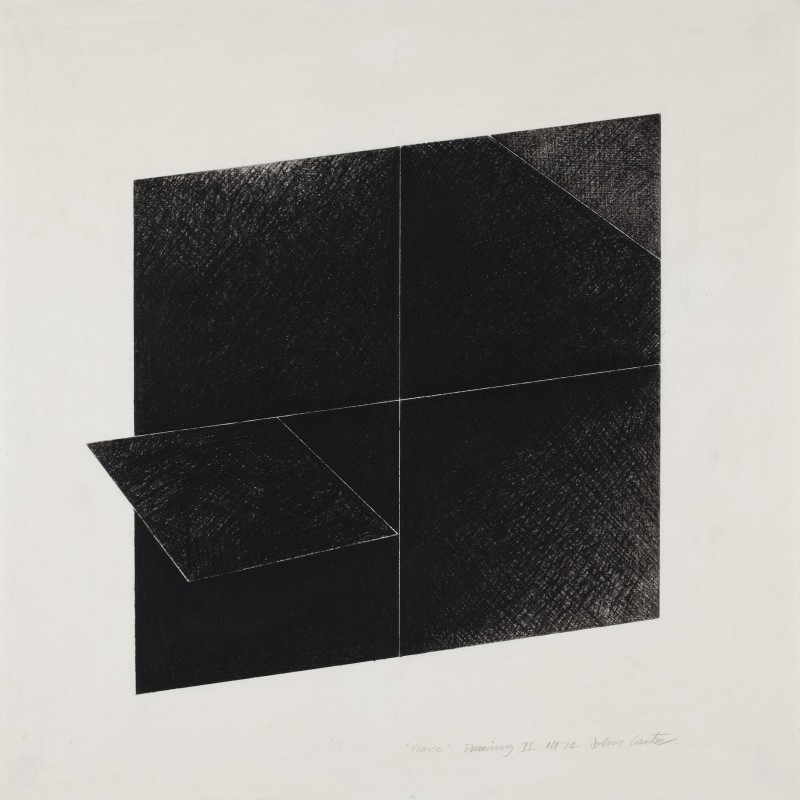 John Carter RADrawing II (Place), 1974Conté on paper59.5 x 59.5 cmSigned, dated and titled lower right%3Cdiv%20class%3D%22artist%22%3E%3Cspan%20class%3D%22artist%22%3E%3Cstrong%3EJohn%20Carter%20RA%3C%2Fstrong%3E%3C%2Fspan%3E%3C%2Fdiv%3E%0D%3Cdiv%20class%3D%22title%22%3E%3Cem%3EDrawing%20II%20%28Place%29%3C%2Fem%3E%2C%201974%3C%2Fdiv%3E%0D%3Cdiv%20class%3D%22signed_and_dated%22%3ESigned%2C%20dated%20and%20titled%20lower%20right%3C%2Fdiv%3E%0D%3Cdiv%20class%3D%22medium%22%3ECont%C3%A9%20on%20paper%3C%2Fdiv%3E%0D%3Cdiv%20class%3D%22dimensions%22%3E59.5%20x%2059.5%20cm%3C%2Fdiv%3E
John Carter RADrawing II (Place), 1974Conté on paper59.5 x 59.5 cmSigned, dated and titled lower right%3Cdiv%20class%3D%22artist%22%3E%3Cspan%20class%3D%22artist%22%3E%3Cstrong%3EJohn%20Carter%20RA%3C%2Fstrong%3E%3C%2Fspan%3E%3C%2Fdiv%3E%0D%3Cdiv%20class%3D%22title%22%3E%3Cem%3EDrawing%20II%20%28Place%29%3C%2Fem%3E%2C%201974%3C%2Fdiv%3E%0D%3Cdiv%20class%3D%22signed_and_dated%22%3ESigned%2C%20dated%20and%20titled%20lower%20right%3C%2Fdiv%3E%0D%3Cdiv%20class%3D%22medium%22%3ECont%C3%A9%20on%20paper%3C%2Fdiv%3E%0D%3Cdiv%20class%3D%22dimensions%22%3E59.5%20x%2059.5%20cm%3C%2Fdiv%3E -
 John Carter RAMezzaluna, 1974Conté on paper27 x 50.5 cm%3Cdiv%20class%3D%22artist%22%3E%3Cspan%20class%3D%22artist%22%3E%3Cstrong%3EJohn%20Carter%20RA%3C%2Fstrong%3E%3C%2Fspan%3E%3C%2Fdiv%3E%0D%3Cdiv%20class%3D%22title%22%3E%3Cem%3EMezzaluna%3C%2Fem%3E%2C%201974%3C%2Fdiv%3E%0D%3Cdiv%20class%3D%22medium%22%3ECont%C3%A9%20on%20paper%3C%2Fdiv%3E%0D%3Cdiv%20class%3D%22dimensions%22%3E27%20x%2050.5%20cm%3C%2Fdiv%3E
John Carter RAMezzaluna, 1974Conté on paper27 x 50.5 cm%3Cdiv%20class%3D%22artist%22%3E%3Cspan%20class%3D%22artist%22%3E%3Cstrong%3EJohn%20Carter%20RA%3C%2Fstrong%3E%3C%2Fspan%3E%3C%2Fdiv%3E%0D%3Cdiv%20class%3D%22title%22%3E%3Cem%3EMezzaluna%3C%2Fem%3E%2C%201974%3C%2Fdiv%3E%0D%3Cdiv%20class%3D%22medium%22%3ECont%C3%A9%20on%20paper%3C%2Fdiv%3E%0D%3Cdiv%20class%3D%22dimensions%22%3E27%20x%2050.5%20cm%3C%2Fdiv%3E -
 John Carter RASpectrum Edge, 1973Casein paint on wood (Two level relief)45 x 53 x 5 cmSigned, dated and titled verso%3Cdiv%20class%3D%22artist%22%3E%3Cspan%20class%3D%22artist%22%3E%3Cstrong%3EJohn%20Carter%20RA%3C/strong%3E%3C/span%3E%3C/div%3E%0D%3Cdiv%20class%3D%22title%22%3E%3Cem%3ESpectrum%20Edge%3C/em%3E%2C%201973%3C/div%3E%0D%3Cdiv%20class%3D%22signed_and_dated%22%3ESigned%2C%20dated%20and%20titled%20verso%3C/div%3E%0D%3Cdiv%20class%3D%22medium%22%3ECasein%20paint%20on%20wood%20%28Two%20level%20relief%29%3C/div%3E%0D%3Cdiv%20class%3D%22dimensions%22%3E45%20x%2053%20x%205%20cm%3C/div%3E
John Carter RASpectrum Edge, 1973Casein paint on wood (Two level relief)45 x 53 x 5 cmSigned, dated and titled verso%3Cdiv%20class%3D%22artist%22%3E%3Cspan%20class%3D%22artist%22%3E%3Cstrong%3EJohn%20Carter%20RA%3C/strong%3E%3C/span%3E%3C/div%3E%0D%3Cdiv%20class%3D%22title%22%3E%3Cem%3ESpectrum%20Edge%3C/em%3E%2C%201973%3C/div%3E%0D%3Cdiv%20class%3D%22signed_and_dated%22%3ESigned%2C%20dated%20and%20titled%20verso%3C/div%3E%0D%3Cdiv%20class%3D%22medium%22%3ECasein%20paint%20on%20wood%20%28Two%20level%20relief%29%3C/div%3E%0D%3Cdiv%20class%3D%22dimensions%22%3E45%20x%2053%20x%205%20cm%3C/div%3E -
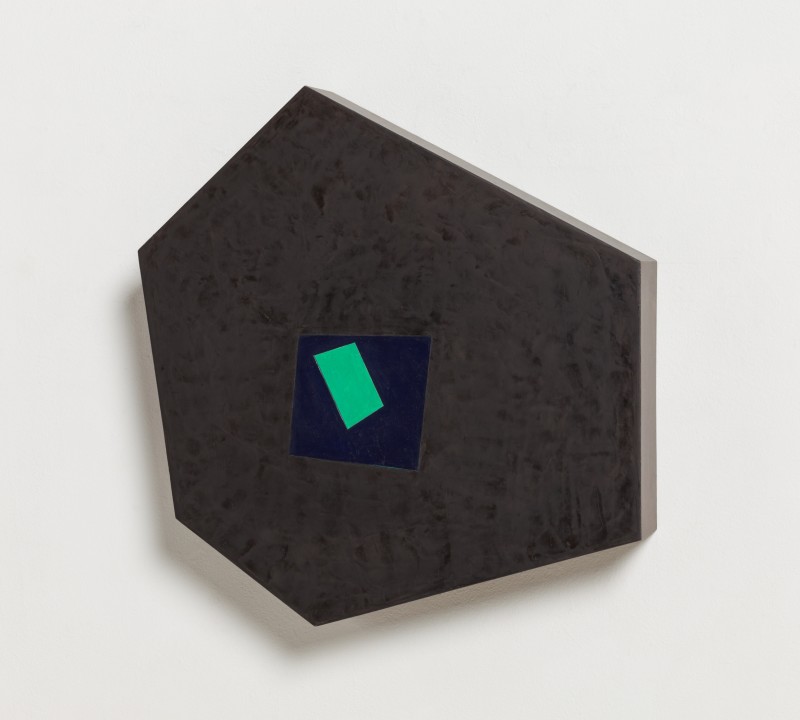 John Carter RAGreen Light, 1972-73Oil and acrylic on board52 x 50 x 10 cmSigned, dated and titled verso%3Cdiv%20class%3D%22artist%22%3E%3Cspan%20class%3D%22artist%22%3E%3Cstrong%3EJohn%20Carter%20RA%3C/strong%3E%3C/span%3E%3C/div%3E%0D%3Cdiv%20class%3D%22title%22%3E%3Cem%3EGreen%20Light%3C/em%3E%2C%201972-73%3C/div%3E%0D%3Cdiv%20class%3D%22signed_and_dated%22%3ESigned%2C%20dated%20and%20titled%20verso%3C/div%3E%0D%3Cdiv%20class%3D%22medium%22%3EOil%20and%20acrylic%20on%20board%3C/div%3E%0D%3Cdiv%20class%3D%22dimensions%22%3E52%20x%2050%20x%2010%20cm%3C/div%3E
John Carter RAGreen Light, 1972-73Oil and acrylic on board52 x 50 x 10 cmSigned, dated and titled verso%3Cdiv%20class%3D%22artist%22%3E%3Cspan%20class%3D%22artist%22%3E%3Cstrong%3EJohn%20Carter%20RA%3C/strong%3E%3C/span%3E%3C/div%3E%0D%3Cdiv%20class%3D%22title%22%3E%3Cem%3EGreen%20Light%3C/em%3E%2C%201972-73%3C/div%3E%0D%3Cdiv%20class%3D%22signed_and_dated%22%3ESigned%2C%20dated%20and%20titled%20verso%3C/div%3E%0D%3Cdiv%20class%3D%22medium%22%3EOil%20and%20acrylic%20on%20board%3C/div%3E%0D%3Cdiv%20class%3D%22dimensions%22%3E52%20x%2050%20x%2010%20cm%3C/div%3E -
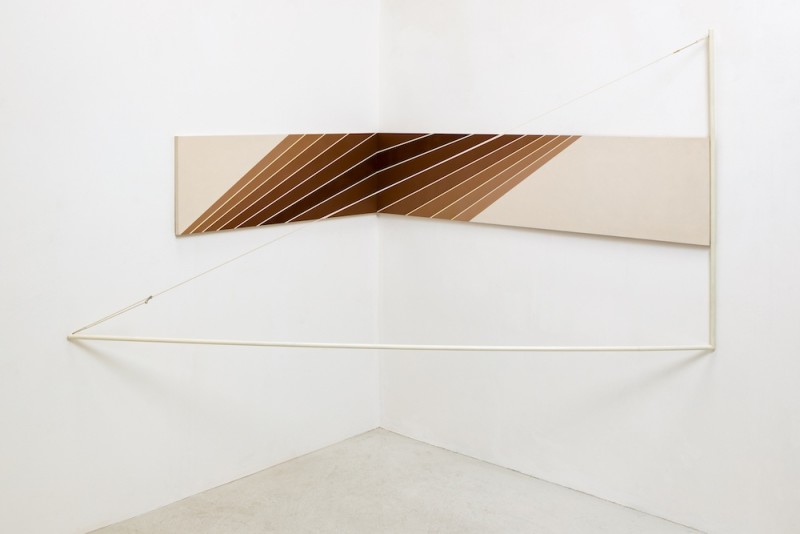 John Carter RACorner, 1972Oil and polyurethane on board, metal bar and cord128 x 359 x 187.5cm%3Cdiv%20class%3D%22artist%22%3E%3Cspan%20class%3D%22artist%22%3E%3Cstrong%3EJohn%20Carter%20RA%3C/strong%3E%3C/span%3E%3C/div%3E%0D%3Cdiv%20class%3D%22title%22%3E%3Cem%3ECorner%3C/em%3E%2C%201972%3C/div%3E%0D%3Cdiv%20class%3D%22medium%22%3EOil%20and%20polyurethane%20on%20board%2C%20metal%20bar%20and%20cord%3C/div%3E%0D%3Cdiv%20class%3D%22dimensions%22%3E128%20x%20359%20x%20187.5cm%3C/div%3E
John Carter RACorner, 1972Oil and polyurethane on board, metal bar and cord128 x 359 x 187.5cm%3Cdiv%20class%3D%22artist%22%3E%3Cspan%20class%3D%22artist%22%3E%3Cstrong%3EJohn%20Carter%20RA%3C/strong%3E%3C/span%3E%3C/div%3E%0D%3Cdiv%20class%3D%22title%22%3E%3Cem%3ECorner%3C/em%3E%2C%201972%3C/div%3E%0D%3Cdiv%20class%3D%22medium%22%3EOil%20and%20polyurethane%20on%20board%2C%20metal%20bar%20and%20cord%3C/div%3E%0D%3Cdiv%20class%3D%22dimensions%22%3E128%20x%20359%20x%20187.5cm%3C/div%3E -
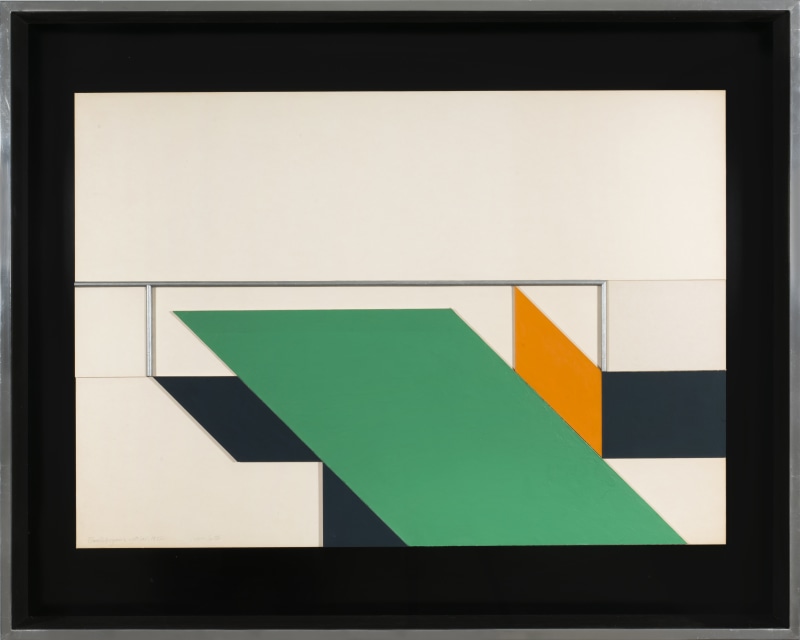 John Carter RAParallelogram with bar, 1972Mixed media and collage on board51 x 73 cm%3Cdiv%20class%3D%22artist%22%3E%3Cspan%20class%3D%22artist%22%3E%3Cstrong%3EJohn%20Carter%20RA%3C/strong%3E%3C/span%3E%3C/div%3E%0D%3Cdiv%20class%3D%22title%22%3E%3Cem%3EParallelogram%20with%20bar%3C/em%3E%2C%201972%3C/div%3E%0D%3Cdiv%20class%3D%22medium%22%3EMixed%20media%20and%20collage%20on%20board%3C/div%3E%0D%3Cdiv%20class%3D%22dimensions%22%3E51%20x%2073%20cm%3C/div%3E
John Carter RAParallelogram with bar, 1972Mixed media and collage on board51 x 73 cm%3Cdiv%20class%3D%22artist%22%3E%3Cspan%20class%3D%22artist%22%3E%3Cstrong%3EJohn%20Carter%20RA%3C/strong%3E%3C/span%3E%3C/div%3E%0D%3Cdiv%20class%3D%22title%22%3E%3Cem%3EParallelogram%20with%20bar%3C/em%3E%2C%201972%3C/div%3E%0D%3Cdiv%20class%3D%22medium%22%3EMixed%20media%20and%20collage%20on%20board%3C/div%3E%0D%3Cdiv%20class%3D%22dimensions%22%3E51%20x%2073%20cm%3C/div%3E -
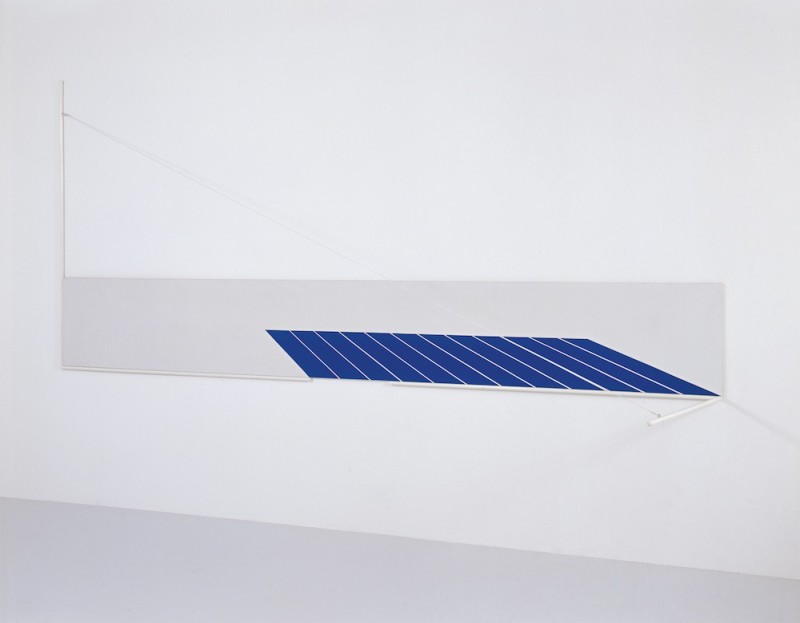 John Carter RASight-Line, 1972Acrylic on cotton duck with painted steel and cord176 x 400 x 122cm%3Cdiv%20class%3D%22artist%22%3E%3Cspan%20class%3D%22artist%22%3E%3Cstrong%3EJohn%20Carter%20RA%3C/strong%3E%3C/span%3E%3C/div%3E%0D%3Cdiv%20class%3D%22title%22%3E%3Cem%3ESight-Line%3C/em%3E%2C%201972%3C/div%3E%0D%3Cdiv%20class%3D%22medium%22%3EAcrylic%20on%20cotton%20duck%20with%20painted%20steel%20and%20cord%3C/div%3E%0D%3Cdiv%20class%3D%22dimensions%22%3E176%20x%20400%20x%20122cm%3C/div%3E
John Carter RASight-Line, 1972Acrylic on cotton duck with painted steel and cord176 x 400 x 122cm%3Cdiv%20class%3D%22artist%22%3E%3Cspan%20class%3D%22artist%22%3E%3Cstrong%3EJohn%20Carter%20RA%3C/strong%3E%3C/span%3E%3C/div%3E%0D%3Cdiv%20class%3D%22title%22%3E%3Cem%3ESight-Line%3C/em%3E%2C%201972%3C/div%3E%0D%3Cdiv%20class%3D%22medium%22%3EAcrylic%20on%20cotton%20duck%20with%20painted%20steel%20and%20cord%3C/div%3E%0D%3Cdiv%20class%3D%22dimensions%22%3E176%20x%20400%20x%20122cm%3C/div%3E -
 John Carter RABlack Spring: Study, 1971Ink on paper26 x 27 cmSigned lower right; titled and dated lower left%3Cdiv%20class%3D%22artist%22%3E%3Cspan%20class%3D%22artist%22%3E%3Cstrong%3EJohn%20Carter%20RA%3C/strong%3E%3C/span%3E%3C/div%3E%0D%3Cdiv%20class%3D%22title%22%3E%3Cem%3EBlack%20Spring%3A%20Study%3C/em%3E%2C%201971%3C/div%3E%0D%3Cdiv%20class%3D%22signed_and_dated%22%3ESigned%20lower%20right%3B%20titled%20and%20dated%20lower%20left%3C/div%3E%0D%3Cdiv%20class%3D%22medium%22%3EInk%20on%20paper%3C/div%3E%0D%3Cdiv%20class%3D%22dimensions%22%3E26%20x%2027%20cm%3C/div%3E
John Carter RABlack Spring: Study, 1971Ink on paper26 x 27 cmSigned lower right; titled and dated lower left%3Cdiv%20class%3D%22artist%22%3E%3Cspan%20class%3D%22artist%22%3E%3Cstrong%3EJohn%20Carter%20RA%3C/strong%3E%3C/span%3E%3C/div%3E%0D%3Cdiv%20class%3D%22title%22%3E%3Cem%3EBlack%20Spring%3A%20Study%3C/em%3E%2C%201971%3C/div%3E%0D%3Cdiv%20class%3D%22signed_and_dated%22%3ESigned%20lower%20right%3B%20titled%20and%20dated%20lower%20left%3C/div%3E%0D%3Cdiv%20class%3D%22medium%22%3EInk%20on%20paper%3C/div%3E%0D%3Cdiv%20class%3D%22dimensions%22%3E26%20x%2027%20cm%3C/div%3E -
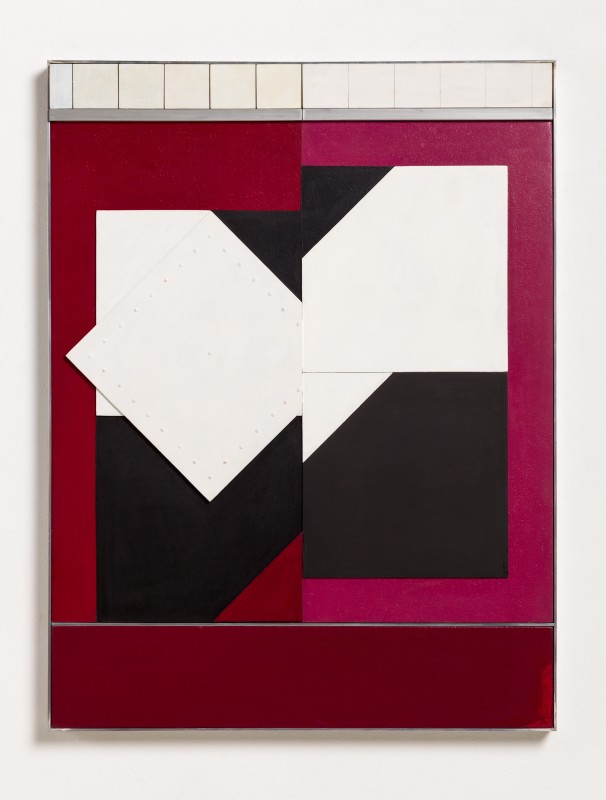 John Carter RAFour Squares, 1970Acrylic on wood with aluminium75 x 57 cmSigned, dated and titled verso%3Cdiv%20class%3D%22artist%22%3E%3Cspan%20class%3D%22artist%22%3E%3Cstrong%3EJohn%20Carter%20RA%3C/strong%3E%3C/span%3E%3C/div%3E%0D%3Cdiv%20class%3D%22title%22%3E%3Cem%3EFour%20Squares%3C/em%3E%2C%201970%3C/div%3E%0D%3Cdiv%20class%3D%22signed_and_dated%22%3ESigned%2C%20dated%20and%20titled%20verso%3C/div%3E%0D%3Cdiv%20class%3D%22medium%22%3EAcrylic%20on%20wood%20with%20aluminium%3C/div%3E%0D%3Cdiv%20class%3D%22dimensions%22%3E75%20x%2057%20cm%3C/div%3E
John Carter RAFour Squares, 1970Acrylic on wood with aluminium75 x 57 cmSigned, dated and titled verso%3Cdiv%20class%3D%22artist%22%3E%3Cspan%20class%3D%22artist%22%3E%3Cstrong%3EJohn%20Carter%20RA%3C/strong%3E%3C/span%3E%3C/div%3E%0D%3Cdiv%20class%3D%22title%22%3E%3Cem%3EFour%20Squares%3C/em%3E%2C%201970%3C/div%3E%0D%3Cdiv%20class%3D%22signed_and_dated%22%3ESigned%2C%20dated%20and%20titled%20verso%3C/div%3E%0D%3Cdiv%20class%3D%22medium%22%3EAcrylic%20on%20wood%20with%20aluminium%3C/div%3E%0D%3Cdiv%20class%3D%22dimensions%22%3E75%20x%2057%20cm%3C/div%3E -
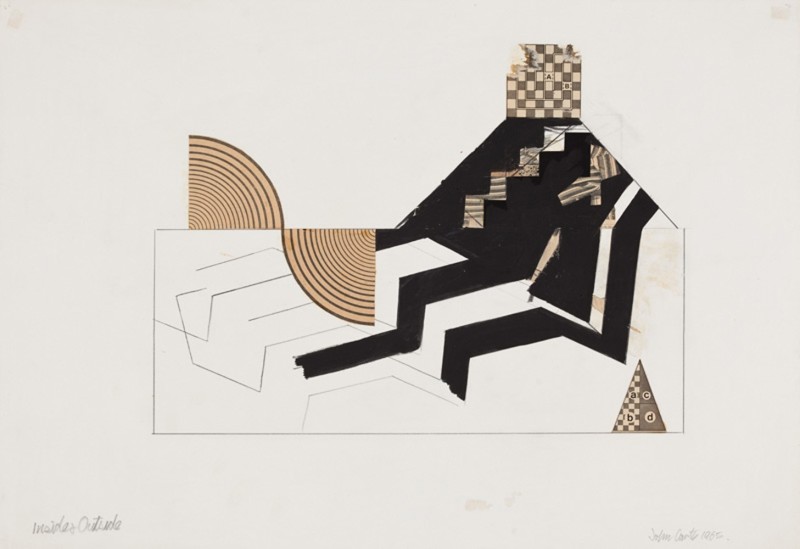 John Carter RAInside and Outside, 1965Collage, gouache and pencil on paper38.5 x 56 cmSigned and dated lower right; titled lower left%3Cdiv%20class%3D%22artist%22%3E%3Cspan%20class%3D%22artist%22%3E%3Cstrong%3EJohn%20Carter%20RA%3C/strong%3E%3C/span%3E%3C/div%3E%0D%3Cdiv%20class%3D%22title%22%3E%3Cem%3EInside%20and%20Outside%3C/em%3E%2C%201965%3C/div%3E%0D%3Cdiv%20class%3D%22signed_and_dated%22%3ESigned%20and%20dated%20lower%20right%3B%20titled%20lower%20left%3C/div%3E%0D%3Cdiv%20class%3D%22medium%22%3ECollage%2C%20gouache%20and%20pencil%20on%20paper%3C/div%3E%0D%3Cdiv%20class%3D%22dimensions%22%3E38.5%20x%2056%20cm%3C/div%3E
John Carter RAInside and Outside, 1965Collage, gouache and pencil on paper38.5 x 56 cmSigned and dated lower right; titled lower left%3Cdiv%20class%3D%22artist%22%3E%3Cspan%20class%3D%22artist%22%3E%3Cstrong%3EJohn%20Carter%20RA%3C/strong%3E%3C/span%3E%3C/div%3E%0D%3Cdiv%20class%3D%22title%22%3E%3Cem%3EInside%20and%20Outside%3C/em%3E%2C%201965%3C/div%3E%0D%3Cdiv%20class%3D%22signed_and_dated%22%3ESigned%20and%20dated%20lower%20right%3B%20titled%20lower%20left%3C/div%3E%0D%3Cdiv%20class%3D%22medium%22%3ECollage%2C%20gouache%20and%20pencil%20on%20paper%3C/div%3E%0D%3Cdiv%20class%3D%22dimensions%22%3E38.5%20x%2056%20cm%3C/div%3E -
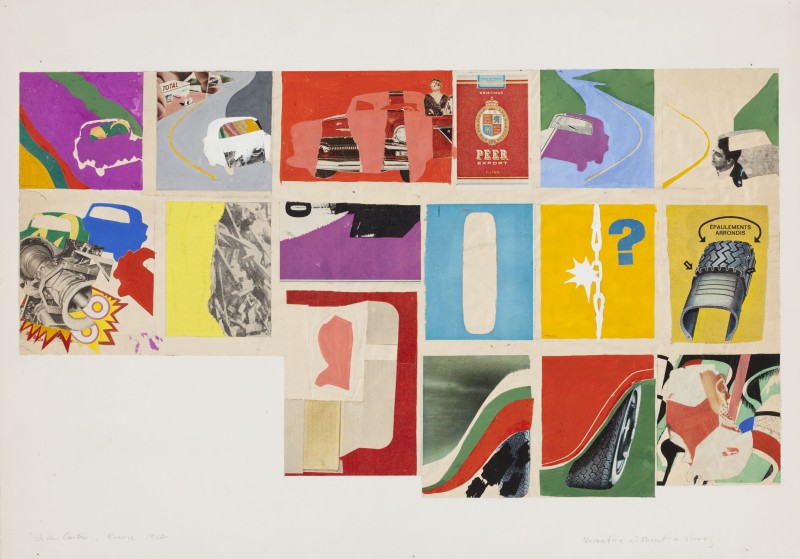 John Carter RAOn The Road, 1964Mixed media and collage on paper42 x 64 cmSigned and dated lower left; inscribed lower right%3Cdiv%20class%3D%22artist%22%3E%3Cspan%20class%3D%22artist%22%3E%3Cstrong%3EJohn%20Carter%20RA%3C/strong%3E%3C/span%3E%3C/div%3E%0D%3Cdiv%20class%3D%22title%22%3E%3Cem%3EOn%20The%20Road%3C/em%3E%2C%201964%3C/div%3E%0D%3Cdiv%20class%3D%22signed_and_dated%22%3ESigned%20and%20dated%20lower%20left%3B%20inscribed%20lower%20right%3C/div%3E%0D%3Cdiv%20class%3D%22medium%22%3EMixed%20media%20and%20collage%20on%20paper%3C/div%3E%0D%3Cdiv%20class%3D%22dimensions%22%3E42%20x%2064%20cm%3C/div%3E
John Carter RAOn The Road, 1964Mixed media and collage on paper42 x 64 cmSigned and dated lower left; inscribed lower right%3Cdiv%20class%3D%22artist%22%3E%3Cspan%20class%3D%22artist%22%3E%3Cstrong%3EJohn%20Carter%20RA%3C/strong%3E%3C/span%3E%3C/div%3E%0D%3Cdiv%20class%3D%22title%22%3E%3Cem%3EOn%20The%20Road%3C/em%3E%2C%201964%3C/div%3E%0D%3Cdiv%20class%3D%22signed_and_dated%22%3ESigned%20and%20dated%20lower%20left%3B%20inscribed%20lower%20right%3C/div%3E%0D%3Cdiv%20class%3D%22medium%22%3EMixed%20media%20and%20collage%20on%20paper%3C/div%3E%0D%3Cdiv%20class%3D%22dimensions%22%3E42%20x%2064%20cm%3C/div%3E

